peer-to-peer lending
description: practice of lending money without going through a traditional financial intermediary
67 results
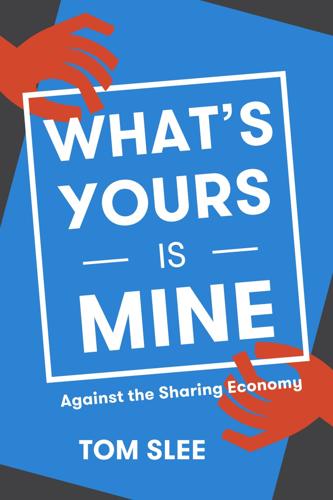
What's Yours Is Mine: Against the Sharing Economy
by
Tom Slee
Published 18 Nov 2015
Death Strip.” 46 Harvey, Rebel Cities, pp. 107–08. 47 Ibid., p. 109. 48 Grim, “Change.org Changing: Site To Drop Progressive Litmus Test For Campaigns, Say Internal Documents.” 49 Beyerstein, “Change.org Quietly Changing Course.” 50 Grim, “Change.org Changing: Site To Drop Progressive Litmus Test For Campaigns, Say Internal Documents.” 51 Botsman, “Collaborative Finance.” 52 “From the People, for the People.” 53 Cortese, “Loans That Avoid Banks?” 54 Ibid. 55 Banjo, “Wall Street Is Hogging the Peer-to-Peer Lending Market.” 56 Banjo, “Citgroup Has Finally Thrown Its Lot in with Online Lending.” 57 McMillan, “Peer-To-Peer Lending Is Dead.” 58 Cortese, “Loans That Avoid Banks?” 59 McMillan, “Peer-To-Peer Lending Is Dead.” Chapter 9 1 Fernholtz, “Is Uber Costing New Yorkers $1.2 Billion Worth of Lost Time?” 2 Bisby, “‘Airbnb for Dogs.’” 3 O’Reilly, “Networks and the Nature of the Firm.” 4 Legal Information Institute, “47 U.S.
…
High profile partnerships, such as Lending Club’s April 2015 partnership with Citigroup to make $150 million in loans available, emphasize how much the so-called disrupter has come to feel at home among the establishment, and how completely the promise of avoiding the banking system has morphed into just another wing of that system.56 Peer-to-peer lending marketplaces have transformed themselves into “loan originators and underwriters for traditional banks,” 57 and left any notion of financial “democratization” far behind. Recently, the peer-to-peer lending companies have rebranded themselves as “marketplace lending” companies. The major institutions now take up not only the majority of the loans, but they take the best ones. When investing is done by computers, those with the best computers get to make the best loans, so the big institutions take the pick of the crop, leaving the original Lending Club audience of individual investors with the bottom of the barrel.
…
The Guardian, August 26, 2011. http://www.theguardian.com/travel/2011/aug/26/couchsurfing-investment-budget-travel. Banjo, Shelly. “Citigroup Has Finally Thrown Its Lot in with Online Lending.” Quartz, April 14, 2015. http://qz.com/383160/citgroup-has-finally-thrown-its-lot-in-with-online-lending/. ———. “Wall Street Is Hogging the Peer-to-Peer Lending Market.” Quartz, March 4, 2015. http://qz.com/355848/wall-street-is-hogging-the-peer-to-peer-lending-market/. Barbrook, Richard, and Andy Cameron. “The Californian Ideology.” Mute, August 1995. http://www.imaginaryfutures.net/2007/04/17/the-californian-ideology-2/. Bardhi, Fleura, and Giana M. Eckhardt. “Access-Based Consumption: The Case of Car Sharing.”
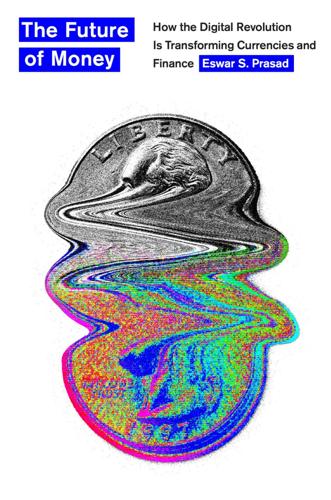
The Future of Money: How the Digital Revolution Is Transforming Currencies and Finance
by
Eswar S. Prasad
Published 27 Sep 2021
By 2015, Lufax had surpassed LendingClub to become the largest peer-to-peer lending platform worldwide. By the end of 2019, Lufax had over forty million registered users and outstanding loans of about RMB 350 billion (about $50 billion). These numbers attracted the attention of Chinese banking regulators, who began tightening the screws by imposing tougher accounting and reporting requirements on peer-to-peer lenders and making it harder to secure business licenses. In July 2019, Lufax announced that it planned to exit its core peer-to-peer lending business because of regulatory hurdles. There are many other examples of Fintech credit providers in EMEs.
…
Other EME Lending Platforms The website for Lufax is https://www.lu.com/ (in Chinese). For details on Lufax as a peer-to-peer lending platform, see Alison Tudor-Ackroyd, “Lufax, P2P Fintech Backed by China’s Biggest Insurer, Said to Aim for IPO in the U.S. This Year,” South China Morning Post, July 23, 2020, https://www.scmp.com/business/banking-finance/article/3094293/lufax-p2p-fintech-backed-chinas-biggest-insurer-said-aim. This article describes how regulators began tightening regulatory and reporting requirements on Lufax and other peer-to-peer lenders, leading to Lufax’s transition away from peer-to-peer lending: Cheng Leng and Engen Tham, “Exclusive: Ping An-Backed Lufax to Ditch P2P Lending on Regulatory Woes—Sources,” Reuters, July 18, 2019, https://www.reuters.com/article/us-lufax-p2p-exclusive/exclusive-ping-an-backed-lufax-to-ditch-p2p-lending-on-regulatory-woes-sources-idUSKCN1UD0QP.
…
For a discussion of increased regulatory scrutiny on China’s peer-to-peer platforms, see Nik Martin, “China’s Peer-to-Peer Lenders Face Crisis, Investors Face Ruin,” DW, February 22, 2019, https://www.dw.com/en/chinas-peer-to-peer-lenders-face-crisis-investors-face-ruin/a-47634861; and “How China’s Peer-to-Peer Lending Crash Is Destroying Lives,” Bloomberg Businessweek, October 2, 2018, https://www.bloomberg.com/news/articles/2018-10-02/peer-to-peer-lending-crash-in-china-leads-to-suicide-and-protest. Details on the crackdown on this sector are reported in Reuters staff, “China Gives P2P Lenders Two Years to Exit Industry: Document,” Reuters, November 28, 2019, https://www.reuters.com/article/us-china-p2p/china-gives-p2p-lenders-two-years-to-exit-industry-document-idUSKBN1Y2039; and Wu Hongyuran and Tang Ziyi, “Lufax Prepares for Life after P2P Lending,” Caixin, November 28, 2019, https://www.caixinglobal.com/2019-11-28/lufax-prepares-for-life-after-p2p-lending-101488535.html.
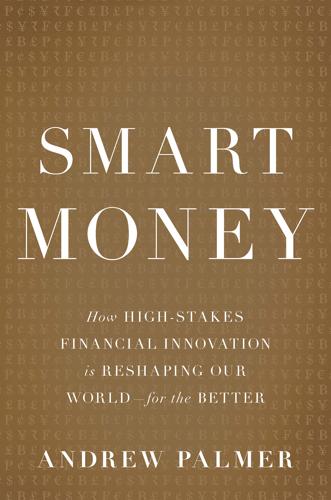
Smart Money: How High-Stakes Financial Innovation Is Reshaping Our WorldÑFor the Better
by
Andrew Palmer
Published 13 Apr 2015
Flowers, 69, 81 Japan, banking crisis in, 75 Japan, financial innovation in, 27, 29, 39–40 Jha, Saumitra, 27 Jiménez-Martín, Sergi, 73 Job creation, young small firms and, 147–148 Joint-stock firms, 23 JPMorgan, 77, 169 Jump-to-default risk, 238 Käärmann, Kristo, 190 Kabbage, 218 Kahneman, Daniel, 47, 137 Kanjorski, Paul, 145 Kauffman Foundation, 158 Kennedy, John F., 32 Keys, Benjamin, 48 Kharroubi, Enisse, 79 Kickstarter, 172 King, Stephen, 99 Klein, David, 182 Krugman, Paul, xv Lahoud, Sal, 166 Lang, Luke, 153, 161–162 Laplanche, Renaud, 179, 184, 188, 190, 193–194, 196–197 Latency, 53 Law of large numbers, 17 Layering, 57 Left-digit bias, 46 Lehman Brothers, x, 44, 65 Lending direct, 84 marketplace, 184 payday, 200 relationship-based, 11, 151, 206–208 secured, xiv, 76 unsecured, 206 See also Loans; Peer-to-peer lending Lending Club, 172, 179–180, 182–184, 187, 189, 194–195, 197 Leonardo of Pisa (Fibonacci), 19 Lerner, Josh, 59 Lethal pandemic, risk-modeling for demographic profile, 230 exceedance-probability curve, 231–232, 232 figure 3 historical data, 228–229 infectiousness and virulence, 229–230 location of outbreak, 230–231 Leverage, 51, 70–71, 80, 186, 188 Leverage ratio, 76–77 Lewis, Michael, 57 Liber Abaci or Book of Calculation (Fibonacci), 19 LIBOR (London Interbank Offered Rate), 41 Liebman, Jeffrey, 98 Life expectancy government reaction to, 128–129 projections of, 124–127, 126 figure 2 ratio of young to older people, 127–128 Life-insurance policies, 142 Life-settlements industry, 142–143 Life table, 20 Limited liability, 212 Liquidity, 12–14, 39, 185–186 List, John, 109 The Little Book of Behavioral Investing (Montier), 156 Lo, Andrew, 113–115, 117–123 Loans low-documentation, 48–49 secured, 76 small business, 181, 216 student, 164, 166–167, 169–171, 182 syndicated, 41 Victory Loans, 28 See also Lending; Peer-to-Peer lending Logistic regression, 201 London, early fire insurance in, 16–17 London, Great Fire of, 16 London Interbank Offered Rate (LIBOR), 41 Long-Term Capital Management, 123 Longevity, betting on, 143–144 Loss aversion, 136 Lotteries, 212, 213 Low-documentation loans, 48–49 Lumni, 165, 168, 175 Lustgarten, Anders, 111 Lynn, Jeff, 160–161 Mack, John, 180 Mahwah, New Jersey, 52, 53 Marginal borrowers assessment of, 216–217 behavioral finance and, 208–214 industrialization of credit, 206 microfinance and, 203 savings schemes, 209–214 small businesses, 215–219 unsecured lending to, 206 Wonga, 203, 205, 208 Marginal borrowers (continued) ZestFinance, 199, 202, 205–206 Maritime piracy, solutions to, 151–152 Maritime trade, role of in history of finance, 3, 7–8, 14, 17, 23 Market makers, 15–16, 55 MarketInvoice, 195, 207, 217–218 Marketplace lending, 184 Markowitz, Harry, 118 Massachusetts, use of inflation-protected bonds in, 26 Massachusetts, use of social-impact bonds in, 98 Matching engine, 52 Maturity transformation, 12–13, 187–188, 193 McKinsey & Company, ix, 42 Mercator Advisory Group, 203 Merrill, Charles, 28 Merrill, Douglas, 199, 201 Merrill Lynch, 28 Merton, Robert, 31, 113–114, 123–124, 129–132, 142, 145 Mian, Atif, 204 Michigan, University of, financial survey by, 134–135 Microfinance, 203 Micropayment model, 217 Microwave technology, 53 The Million Adventure, 213–214 Minsky, Hyman, 42 Minsky moment, 42 Mississippi scheme, 36 Mitchell, Justin, 166–167 Momentum Ignition, 57 Monaco, modeling risk of earthquake in, 227 Money, history of, 4–5 Money illusion, 73–74 Money laundering, 192 Money-market funds, 43, 44 Monkeys, Yale University study of loss aversion with, 136 Montier, James, 156–157 Moody, John, 24 Moody’s, 24, 235 Moore’s law, 114 Morgan Stanley, 188 Mortgage-backed securities, 49, 233 Mortgage credit by ZIP code, study of, 204 Mortgage debt, role of in 2007–2008 crisis, 69–70 Mortgage products, unsound, 36–37 Mortgage securitization, 47 Multisystemic therapy, 96 Munnell, Alicia, 129 Naked credit-default swaps, 143 Nature Biotechnology, on drug-development megafunds, 118 “Neglected Risks, Financial Innovation and Financial Fragility” (Gennaioli, Shleifer, and Vishny), 42 Network effects, 181 New York, skyscraper craze in, 74–75 New York City, prisoner-rehabilitation program in, 108 New York Stock Exchange (NYSE), 31, 52, 53, 61, 64 New York Times, Merrill Lynch ad in, 28 Noncorrelated assets, 122 Nonprofits, growth of in United States, 105–106 Northern Rock, x NYMEX, 60 NYSE Euronext, 52 NYSE (New York Stock Exchange), 31, 52, 53, 61, 64 OECD (Organization for Economic Co-operation and Development), 128, 147 Oldfield, Sean, 67–68, 80–84 OnDeck, 216–218 One Service, 94–95, 105, 112 Operating expense ratio, 188–189 Options, 15, 124 Order-to-trade ratios, 63 Oregon, interest in income-share agreements, 172, 176 Organization for Economic Co-operation and Development (OECD), 128, 147 Overtrading, 24 Packard, Norman, 60 Pandit, Vikram, 184 Park, Sun Young, 233 Partnership mortgage, 81 Pasion, 11 Pave, 166–168, 173, 175, 182 Payday lending Consumer Financial Protection Bureau, survey on, 200 information on applicants, acquisition of, 202 underwriting of, 201 PayPal, 219 Peak child, 127 Peak risk, 228 Peer-to-peer lending advantages of, 187–189 auction system, 195 big investors in, 183 borrowers, assessment of, 197 in Britain, 181 commercial mortgages, 181 CommonBond, 182, 184, 197 consumer credit, 181 diversification, 196 explained, 180 Funding Circle, 181–182, 189, 197 investors in, 195 Lending Club, 179–180, 182–184, 187, 189, 194–195, 197 network effects, 181 ordinary savers and, 184 Prosper, 181, 187, 195 RateSetter, 181, 187, 196 Relendex, 181 risk management, 195–197 securitization, 183–184, 196 Peer-to-peer lending (continued) small business loans, 181 SoFi, 184 student loans, 182 Zopa, 181, 187, 188, 195 Pensions, cost of, 125–126 Perry, Rick, 142–143 Peterborough, England, social-impact bond pilot in, 90–92, 94–95, 104–105, 112 Petri, Tom, 172 Pharmaceuticals, decline of investment in, 114–115 Piracy Reporting Centre, International Maritime Bureau, 151 Polese, Kim, 210 Poor, Henry Varnum, 24 “Portfolio Selection” (Markowitz), 118 Prediction Company, 60–61 Preferred shares, 25 Prepaid cards, 203 Present value of cash flows, 19 Prime borrowers, 197 Prince, Chuck, 50–51, 62 Principal-agent problem, 8 Prisoner rehabilitation programs, 90–91, 94–95, 98, 108, 112 Private-equity firms, 69, 85, 91, 105, 107 Projection bias, 72–73 Property banking crises and, xiv, 69 banking mistakes involving, 75–80 behavioral biases and, 72–75 dangerous characteristics of, 70–72 fresh thinking, need for, xvii, 80 investors’ systematic errors in, 74–75 perception of as safe investment, 76, 80 Prosper, 181, 187, 195 Provisioning funds, 187 Put options, 9, 82 Quants, 19, 63, 113 QuickBooks, 218 Quote stuffing, 57 Raffray, André-François, 144 Railways, affect of on finance, 23–25 Randomized control trials (RCTs), 101 Raphoen, Christoffel, 15–16 Raphoen, Jan, 15–16 RateSetter, 181, 187, 196 RCTs (randomized control trials), 101 Ready for Zero, 210–211 Rectangularization, 125, 126 figure 2 Regulation NMS, 61 Reinhart, Carmen, 35 Reinsurance, 224 Relendex, 181 Rentes viagères, 20 Repurchase “repo” transactions, 15, 185 Research-backed obligations, 119 Reserve Primary Fund, 44 Retirement, funding for anchoring effect, 137–138 annuities, 139 auto-enrollment in pension schemes, 135 auto-escalation, 135–136 conventional funding, 127–128 decumulation, 138–139 government reaction to increased longevity, 128–129 home equity, 139–140 life expectancy, projections of, 124–127, 126 figure 2 life insurance policies, cash-surrender value of, 142 personal retirement savings, 128–129, 132–133 replacement rate, 125 reverse mortgage, 140–142 savings cues, experiment with, 137 SmartNest, 129–131 Reverse mortgages, 140–142 Risk-adjusted returns, 118 Risk appetite, 116 Risk assessment, 24, 45, 77–78, 208 Risk aversion, 116, 215 Risk-based capital, 77 Risk-based pricing model, 176 Risk management, 55, 117–118, 123, 195–197 Risk Management Solutions, 222 Risk sharing, 8, 82 Risk-transfer instrument, 226 Risk weights, 77–78 Rogoff, Kenneth, 35 “The Role of Government in Education” (Friedman), 165 Roman Empire business corporation in, 7 financial crisis in, 36 forerunners of banks in, 11 maritime insurance in, 8 Rotating Savings and Credit Associations (ROSCAs), 209–210 Roulette wheel, use of in experiment on anchoring, 138 Royal Bank of Scotland, 186 Rubio, Marco, 172 Russia, mortgage market in, 67 S-curve, in diffusion of innovations, 45 Salmon, Felix, 155 Samurai bonds, 27 Satsuma Rebellion (1877), 27 Sauter, George, 58 Save to Win, 214 Savings-and-loan crisis in US (1990s), 30 Savings cues, experiment with, 137 Scared Straight social program, 101 Scholes, Myron, 31, 123–124 Science, Technology, and Industry Scoreboard of OECD, 147 Securities and Exchange Commission (SEC), 54, 56, 57, 58, 64 Securities markets, 14 Securitization, xi, 20, 37–38, 117–122, 183–184, 196, 236 Seedrs, 160–161 Sellaband, 159 Shared equity, 80–84 Shared-equity mortgage, 84 Shepard, Chris, xii–xiii Shiller, Robert, xv–xvi, 242 Shleifer, Andrei, 42, 44 Short termism, 58 SIBs.
…
HG1709.P35 2015 332.1—dc23 2014041326 10 9 8 7 6 5 4 3 2 1 For Julia, Eliza, Joe, and Kasia Contents Preface PART I: LESSONS BADLY LEARNED 1. Handmaid to History 2. From Breakthrough to Meltdown 3. The Most Dangerous Asset in the World PART II: A FORCE FOR GOOD 4. Social-Impact Bonds and the Shrinking of the State 5. Live Long and Prosper 6. Equity and the License to Dream 7. Peer-to-Peer Lending and the Flaws of Finance 8. The Edge: Reaching the Marginal Borrower 9. Tail Risk: Pricing the Probability of Mayhem Conclusion Acknowledgments Glossary Notes Index Preface When I was offered the job of the Economist’s banking correspondent in the early summer of 2007, my reaction was one of apprehension.
…
But the growth of equity crowdfunding for companies offers some hope to similar ventures in education. And after a period in which finance devoted an enormous amount of energy to increasing the amount of debt that we take on, a little bit of fresh thinking about equity is always welcome. 7. Peer-to-Peer Lending and the Flaws of Finance Renaud Laplanche is a soft-spoken Frenchman living in San Francisco who, by the mid-2000s, had already set up and sold an enterprise-software business to Oracle. Laplanche was a prompt payer of his outstanding credit-card balance but noticed on his credit-card bill that if he carried over any of his balance to the next month, it would be subject to an interest rate of almost 19 percent.
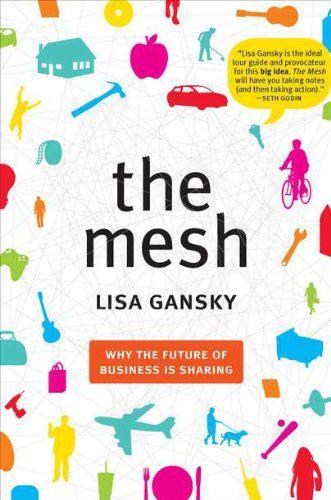
The Mesh: Why the Future of Business Is Sharing
by
Lisa Gansky
Published 14 Oct 2010
Although still a small part of the financial market, peer-to-peer lenders already compete with traditional banks for similar transactions, customer relationships, and capital. In the United States alone, Lending Club and Prosper have facilitated over $250 million in loans. Zopa, the first to do peer-to-peer lending, has expanded to Italy and Japan from its base in London. Smava offers similar services in Germany and plans to expand to other European markets. Other Mesh companies have found underserved financial niches. BigCarrot’s platform matches lenders and business borrowers. SmartyPig creates incentives and premiums for customers to save, including discounted purchases with marketing partners.
…
They have the infrastructure, capacity, and brand to do it. That doesn’t mean that they’ll take over the business overnight. As always, innovative companies will crack new markets. Other large companies may reason that if you can’t beat ’em, join ’em. Some local banks, responding to the credit crisis, have partnered with peer-to-peer lending companies to offer customers loans or additional investment opportunities. first things first. The recession that started late in 2008 has pummeled individuals, towns, and businesses. Lost jobs and repossessed homes have forced families to move to new cities, move in with other family members, and change school districts.
…
To get past potential customer reluctance, Mesh marketers can suggest promising trials, which are often the first step to engage a new member. Grocery stores offer samples, such as herbal goat cheese on crackers, for a reason—to win over skeptics. The same thing can work for bike sharing or peer-to-peer lending. Customers are likely to first try a Mesh business when it’s least stressful to do so. They’ll start by identifying things that they consider too expensive to own or keep. Someone may want to try a table saw or a hybrid car before going ahead with a purchase. Perhaps she has a closet half full of things she no longer wears.
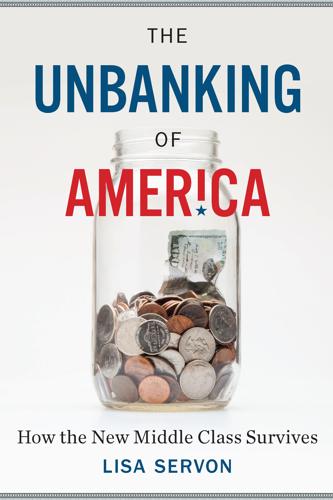
The Unbanking of America: How the New Middle Class Survives
by
Lisa Servon
Published 10 Jan 2017
Four out of five millennials: Mueller, “Millennials: A New Approach to Handling Money.” 113 over half of millennials: Fair Isaac Corporation, “Millennial Banking Insights and Opportunities” (San Jose, CA: FICO, 2014). http://www.fico.com/millennial-quiz/pdf/fico-millennial-insight-report.pdf In the quarter ending: PayPal, “Q2 2015 Fact Sheet” (San Jose, CA: PayPal, 2015). https://stories.paypal-corp.com/uploads/4/8/9/8/48984695/paypal_q2_2015_fastfacts_final.pdf P2P platforms act as: Federal Reserve Bank of Cleveland, “Peer-to-Peer Lending Is Poised to Grow” (Cleveland: Cleveland Fed, August 14, 2014). https://www.clevelandfed.org/newsroom-and-events/publications/economic-trends/2014-economic-trends/et-20140814-peer-to-peer-lending-is-poised-to-grow.aspx Their average interest rates: These loans are not without their problems, as evidenced in Michael Corkery, “Pitfalls for the Unwary Borrower out on the Frontiers of Banking,” New York Times, September 13, 2015. http://www.nytimes.com/2015/09/14/business/dealbook/pitfalls-for-the-unwary-borrower-out-on-the-frontiers-of-banking.html “the convenience of transacting”: PricewaterhouseCoopers, “Peer Pressure: How Peer-to-Peer Lending Platforms Are Transforming the Consumer Lending Industry” (London: PricewaterhouseCoopers LLP, February 2015). http://www.pwc.com/us/en/consumer-finance/publications/assets/peer-to-peer-lending.pdf P2P lending has grown: Federal Reserve Bank of Cleveland, “Peer-to-Peer Lending Is Poised to Grow.” 115 Mint.com launched in 2007: Mandi Woodruff, “How Mint.com Turned Two Million Users into a Living Snapshot of the Economic Recovery,” Business Insider, July 18, 2013. http://www.businessinsider.com/mintcom-uses-big-data-to-track-consumer-spending-2013-7#ixzz3geWRXKfv Its founder, Jake Fuentes: Tara Seigel Bernand, “Make a Resolution to Budget?
…
Four out of five millennials: Mueller, “Millennials: A New Approach to Handling Money.” 113 over half of millennials: Fair Isaac Corporation, “Millennial Banking Insights and Opportunities” (San Jose, CA: FICO, 2014). http://www.fico.com/millennial-quiz/pdf/fico-millennial-insight-report.pdf In the quarter ending: PayPal, “Q2 2015 Fact Sheet” (San Jose, CA: PayPal, 2015). https://stories.paypal-corp.com/uploads/4/8/9/8/48984695/paypal_q2_2015_fastfacts_final.pdf P2P platforms act as: Federal Reserve Bank of Cleveland, “Peer-to-Peer Lending Is Poised to Grow” (Cleveland: Cleveland Fed, August 14, 2014). https://www.clevelandfed.org/newsroom-and-events/publications/economic-trends/2014-economic-trends/et-20140814-peer-to-peer-lending-is-poised-to-grow.aspx Their average interest rates: These loans are not without their problems, as evidenced in Michael Corkery, “Pitfalls for the Unwary Borrower out on the Frontiers of Banking,” New York Times, September 13, 2015. http://www.nytimes.com/2015/09/14/business/dealbook/pitfalls-for-the-unwary-borrower-out-on-the-frontiers-of-banking.html “the convenience of transacting”: PricewaterhouseCoopers, “Peer Pressure: How Peer-to-Peer Lending Platforms Are Transforming the Consumer Lending Industry” (London: PricewaterhouseCoopers LLP, February 2015). http://www.pwc.com/us/en/consumer-finance/publications/assets/peer-to-peer-lending.pdf P2P lending has grown: Federal Reserve Bank of Cleveland, “Peer-to-Peer Lending Is Poised to Grow.” 115 Mint.com launched in 2007: Mandi Woodruff, “How Mint.com Turned Two Million Users into a Living Snapshot of the Economic Recovery,” Business Insider, July 18, 2013. http://www.businessinsider.com/mintcom-uses-big-data-to-track-consumer-spending-2013-7#ixzz3geWRXKfv Its founder, Jake Fuentes: Tara Seigel Bernand, “Make a Resolution to Budget?
…
Many use Venmo to settle up after a shared meal or cab ride, as well as for bigger items like plane tickets or rent. No one has to worry about paying someone back, having the right change, or carrying and cashing checks. Millennials are ten times more likely than their older counterparts to use online peer-to-peer lenders like Lending Club and Prosper. Peer-to-peer lending, or P2P, requires far less paperwork than other loans and is perceived to be more transparent than payday loans. P2P platforms act as exchanges that enable borrowers to connect with investors who have money to loan. These loans rely on a wider range of information—such as SAT scores—to assess borrowers’ creditworthiness and therefore reach consumers who might not qualify otherwise.
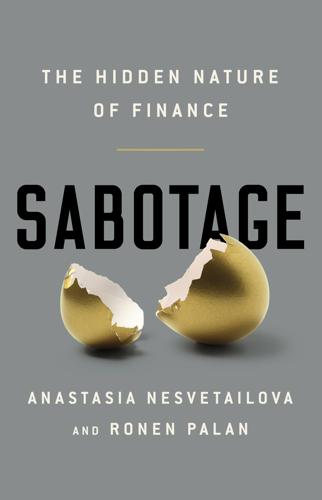
Sabotage: The Financial System's Nasty Business
by
Anastasia Nesvetailova
and
Ronen Palan
Published 28 Jan 2020
Since the number of bitcoins in circulation is currently capped at twenty-one million, if these billions of offshore dollars migrate to that cryptocurrency, the worth of a single bitcoin could rise to nearly $3m.7 E-wallets exist in no physical location, are not subject to taxation at the source, and do not require the assistance of expensive financial intermediaries such as Mossack Fonseca to administer. Peer-to-peer lending lends itself directly to abuse of clients, whereas blockchain is a versatile technology. Combining several innovations in one vast cyber network, Facebook is currently trying to launch its own currency, to be called the Libra. If financial innovation normally leads to some sort of sabotage, then fintech is emerging as its Holy Grail. REAL PROBLEMS, REAL SOLUTIONS AND SABOTAGE Many aspects of fintech are designed to respond to real issues. Let us take the case of peer-to-peer lending. Traditionally, banks would intermediate between savers and borrowers, at a cost.
…
The MMM Global ‘investors’ – if that is what they were – were left holding exactly what they bought, the virtual mavros. It appears that they will hold those till eternity.2 THE FINTECH SECTOR Fintech is a technology-anchored universe that involves, among other things, cryptocurrencies, blockchain, data mining, peer-to-peer lending, crowdfunding, money transfer services and smart contracts. Many of the innovations extend beyond financial services, where they have facilitated a range of new fundraising and investment opportunities on various platforms in cyberspace. The evolution of fintech has been both rapid and diverse, and it is clear that it can develop in any imaginable and, as yet, unimaginable direction.
…
It quickly established a reputation as a ‘progressive consumer finance innovation’ and received a further boost from the crisis of 2007–9. No longer trusting the banks (or, alternatively, being deemed too risky to be ‘banked’), consumers, budding entrepreneurs and social activists have turned to new technologies to help raise funds by directly connecting savers with borrowers. Peer-to-peer lending and crowdfunding became the direct outcomes of the fusion between technology and demands for capital. The sector has expanded and helped many good causes. By early 2018 the transaction value in the US crowdfunding segment alone was reported to have reached more than $1bn,8 still small compared to traditional banking, but it is the fastest-growing sector.

The Autonomous Revolution: Reclaiming the Future We’ve Sold to Machines
by
William Davidow
and
Michael Malone
Published 18 Feb 2020
If a thief figures out how to get access to an individual’s Bitcoins they can transfer them securely and quickly, leaving no tracks to follow. JUST BETWEEN US Peer-to-peer lending and investment groups are springing up all over in virtual environments, with each of them focusing on a different market niche. The Lending Club, Prosper, and Upstart make loans to consumers while providing investors with higher returns and borrowers with lower interest rates. OnDeck, Kabbage, and Funding Circle focus on small businesses and other investment groups’ mortgages.34 Peer-to-peer lending platforms use their Internet presence to attract investors who are seeking higher interest rates than they can get from bank CDs or by investing in bonds.
…
Olivier Garret, “The 4 Best P2P Lending Platforms for Investors in 2017—Detailed Analysis,” Forbes.com, January 29, 2017, https://www.forbes.com/sites/oliviergarret/2017/01/29/the-4-best-p2p-lending-platforms-for-investors-in-2017-detailed-analysis/#73ed05c252ab (accessed June 27, 2019); and Sonny Singh, “The State of P2P Lending,” TechCrunch, January 30, 2016, https://techcrunch.com/2016/01/30/the-state-of-p2p-lending/ (accessed June 27, 2019). 35. Singh, “The State of P2P Lending.” 36. Ibid. 37. Shoaib Iqbal, “Global Peer to Peer Market by End-User and Business Model Type,” Allied Market Research, March 2017, https://www.alliedmarketresearch.com/peer-to-peer-lending-market (accessed June 27, 2019). 38. “Peer Pressure,” PWC, February 2015, https://www.pwc.com/us/en/consumer-finance/publications/assets/peer-to-peer-lending.pdf (accessed June 27, 2019); and Cloud Lending, 2018, https://www.cloudlendinginc.com/about-us/. 39. Jon Henley, “Sweden Leads the Race to Become Cashless Society,” The Guardian,, June 4, 2016, https://www.theguardian.com/business/2016/jun/04/sweden-cashless-society-cards-phone-apps-leading-europe (accessed June 27, 2019). 40.
…
Today, robo-advisers that manage investment portfolios for consumers are available from companies such as Betterment and Wealthfront for a fraction of the cost of human advisers.3 Scores of other financial applications (Fintech) are available, and countless more are in the development pipeline. When peer-to-peer payment systems are integrated with peer-to-peer lending systems, Internet-only banks, and robo-advisers, the future of credit cards, retail banks, and financial advisers as we know them will be challenged. When much of the financial services industry has been absorbed into virtual space and is operated by automatons, a major structural transformation will have occurred.
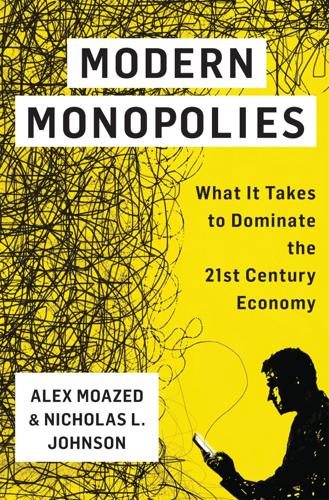
Modern Monopolies: What It Takes to Dominate the 21st Century Economy
by
Alex Moazed
and
Nicholas L. Johnson
Published 30 May 2016
In the startup realm are platforms such as AngelList, which enable people to invest in startups on a small scale. Many of these investors now have access to deals they never would have gotten in the past. Peer-to-peer lending is also big. Lending Club was the early success story in this area, but other more industry-specific competitors have emerged over the last couple of years. One example is SoFi (also called Social Finance), which focuses on peer-to-peer lending for student loans, mortgages, and personal loans. However, these platforms are just scratching the surface. The biggest potential disruption of the finance industry comes from the already-legendary Bitcoin.
…
For other platform types, commoditization level plays a similar role. For example, the level of commoditization in investment platforms also dictates whether you’re able to set the price and how you handle the matchmaking experience. More commoditized investment platforms like Lending Club (peer-to-peer lending) are able to set prices algorithmically. In fact, Lending Club started by letting lenders set their own interest rates before moving to setting rates itself. The platform rightly saw the opportunity to remove unnecessary friction from the transaction. However, other investment platforms such as AngelList (startup investing) require a more noncommoditized approach.
…
In March 2007, Viacom filed a copyright infringement suit against YouTube, seeking $1 billion in damages.28 However, Google was able to use the safe harbor provision in the Digital Millennium Copyright Act (passed in 1998) to avoid liability. The trend of new platforms facing legal challenges has only continued. Only a few years after the YouTube acquisition, peer-to-peer lending platform Lending Club faced its own legal obstacles. Founded in 2006, the company pioneered a different approach to making loans that met with regulatory resistance. Lending Club divided up consumer loans into small pieces so that individual lenders could take smaller chunks of many loans.

Reinventing Capitalism in the Age of Big Data
by
Viktor Mayer-Schönberger
and
Thomas Ramge
Published 27 Feb 2018
Other sites, such as PeepTrade, offer customers access (“peeps”) to decision information of successful traders and take a cut from each trade that “follows” a successful trader’s strategy. Financing and investment come together through fintechs offering peer-to-peer lending. On these platforms consumers lend to consumers (or in the case of platforms like Funding Circle, to small businesses), and the platform facilitates these lending matches, although often the matching process is still relatively unsophisticated. Zopa, one of the pioneers in peer-to-peer lending, has successfully helped arrange financing for $2 billion, but the idea has really taken off in China, because of the country’s bureaucratic traditional banking system.
…
Zopa, one of the pioneers in peer-to-peer lending, has successfully helped arrange financing for $2 billion, but the idea has really taken off in China, because of the country’s bureaucratic traditional banking system. Thousands of platforms have opened, and the most successful one, Lufax, has already eclipsed Zopa in total financing volume. The total market for peer-to-peer lending in China is estimated to have surpassed $100 billion in 2016. Kickstarter and its competitors, such as Indiegogo, offer a related service. Kickstarter alone has helped start-ups generate direct sales in excess of $3 billion, with one in three projects being successfully funded (and only about 15 percent of funded projects eventually failing). Recently, Kickstarter has teamed up with equity crowdfunding platform MicroVentures to offer backers a chance to buy equity in small businesses.
…
bringing data-rich consumer credit scoring to China: Jon Russell, “Baidu Invests in ZestFinance to Develop Search-Powered Credit Scoring for China,” TechCrunch, July 17, 2016, https://techcrunch.com/2016/07/17/baidu-invests-in-zestfinance-to-develop-search-powered-credit-scoring-for-china. total market for peer-to-peer lending in China: “In Fintech China Shows the Way,” Economist, February 25, 2017. A counter example suggests: The following history of investment banking is based on the perceptive Alan D. Morrison and William J. Wilhelm, Jr. Investment Banking: Institutions, Politics, and Law (Oxford: Oxford University Press, 2007); an article version is Alan Morrison and William Wilhelm, “Investment Banking: Past, Present, and Future,” Journal of Applied Corporate Finance 19 (2007), 8–20.

Platform Revolution: How Networked Markets Are Transforming the Economy--And How to Make Them Work for You
by
Sangeet Paul Choudary
,
Marshall W. van Alstyne
and
Geoffrey G. Parker
Published 27 Mar 2016
, for instance, is a MasterCard Labs innovation that lets magazine readers click on an embedded app to instantly purchase an item they’ve read about from an affiliated retailer, such as Saks Fifth Avenue.8 Other familiar financial platforms—many of them traditionally quite conservative in their business culture as well as significantly constrained by regulation—will be pushed to develop innovations based on the latest platform technologies. Commercial bankers, for instance, have been closely monitoring the rise of online peer-to-peer lending communities like Zopa and Lending Club, which are facilitating billions of dollars’ worth of financial transactions and providing credit while bypassing traditional gatekeepers. Peer-to-peer lending platforms have the potential to be particularly disruptive because of their ability to identify patterns in lending and borrowing from the troves of digital data they collect. Using these patterns, these platforms may be able to do a better job of identifying behaviors that predict defaults and fraud than traditional banks that rely on a static set of data markers.
…
Today, “Buy it Now” fixed-price listings account for about 70 percent of eBay’s $83 billion in gross merchandise volume. Architecture. In the world of platform businesses, “architecture” refers basically to programming code. Well-designed software systems are self-improving: they encourage and reward good behavior, thereby producing more of the same. Online banking platforms such as peer-to-peer lending businesses are using software algorithms to displace traditional, labor-intensive, and expensive loan officers. They calculate a borrower’s likelihood of repaying using both conventional data such as credit scores and nontraditional data such as a Yelp rating (for a restaurant), the stability of the borrower’s email address, her connections on LinkedIn, and even how thoroughly she interacts with the loan assessment tools before applying.33 As the platform architecture becomes better at predicting borrower behavior, participation risk declines, attracting more lenders.
…
They calculate a borrower’s likelihood of repaying using both conventional data such as credit scores and nontraditional data such as a Yelp rating (for a restaurant), the stability of the borrower’s email address, her connections on LinkedIn, and even how thoroughly she interacts with the loan assessment tools before applying.33 As the platform architecture becomes better at predicting borrower behavior, participation risk declines, attracting more lenders. Meanwhile, the low overhead costs allow the platform to offer lower rates, which attracts more borrowers. Greater participation further improves the data flow, and the cycle repeats. No wonder peer-to-peer lending platforms like the British firm Zopa have been enjoying such notable success. When Zopa proudly announced that it had provided more than $1 billion in loans, one of this book’s authors, Sangeet Choudary, congratulated the company leaders and politely asked, “Wouldn’t your loan default rate be a more significant measure of success?”

The Sharing Economy: The End of Employment and the Rise of Crowd-Based Capitalism
by
Arun Sundararajan
Published 12 May 2016
Granted, traditional sources of borrowing are still orders of magnitude larger than Funding Circle and its US counterparts Lending Club and Prosper. While these peer-to-peer lending marketplaces likely won’t put banks out of business, they will reduce their margins by bringing greater transparency and efficiency into the aggregation and matching of distributed financial capital with its recipients. As Funding Circle CEO Sam Hodges noted in a 2015 interview, “With marketplace and peer-to-peer lending, the difference is transparency. On the one hand there are small businesses looking to borrow. On the other hand, there’s a wide range of investors.
…
You can get a meal with others at someone’s dining table through social dining platforms, like EatWith in Barcelona, Feastly in New York, or VizEat in Paris, that allow people who enjoy cooking to have others visit their home and join a lunch or dinner. With as little as £100 in liquid assets, you can make an interest-bearing loan of £20 or more to a small business that you like through the peer-to-peer lending platform Funding Circle.4 You can offer up your services as a home cleaner, handyman, plumber, electrician, or painter (or hire a freelance worker who has these or other skills) through the labor marketplaces Handy, TaskRabbit, and Thumbtack. Getting set up to receive these services from your peers is often as easy as installing an app and proving your identity by sharing data from a valid Facebook account.
…
But lenders also give to feel connected to the lives of the recipients; this motivation is well reflected in the project descriptions that potential borrowers post, which are heavy on personal stories but light on financials. So Kiva’s position in the sharing economy is somewhere on that continuum between the market economy and the gift economy. Funding Circle, like Kiva, is a peer-to-peer lending platform offering loans that are funded by pooling small contributions from multiple lenders (often hundreds of lenders), to loan recipients (mostly small businesses). On the original UK-based Funding Circle platform, the funders—whether they have a few pounds or a few thousands pounds—select projects to back, and they receive interest on their loans, typically significantly higher than what one would earn from a savings account.
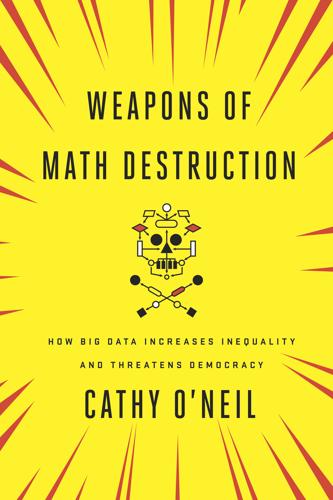
Weapons of Math Destruction: How Big Data Increases Inequality and Threatens Democracy
by
Cathy O'Neil
Published 5 Sep 2016
received funding a year later: Lending Club, “Lending Club Completes $600 Million SEC Registration and Offers New Alternative for Consumer Credit,” Lending Club, October 14, 2008, http://blog.lendingclub.com/lending-club-sec-registration/. less than $10 billion in loans: Peter Renton, “Five Predictions for 2015,” Lend Academy, January 5, 2015, www.lendacademy.com/five-predictions-2015/. Executives from Citigroup: Nav Athwal, “The Disappearance of Peer-to-Peer Lending,” Forbes, October 14, 2014, www.forbes.com/sites/groupthink/2014/10/14/the-disappearance-of-peer-to-peer-lending/. Wells Fargo’s investment fund: Maureen Farrell, “Wells Fargo Is a Big Winner in Lending Club IPO,” Wall Street Journal, December 12, 2014, http://blogs.wsj.com/moneybeat/2014/12/12/wells-fargo-is-a-big-winner-in-lending-club-ipo/.
…
If they then have trouble paying those fees, this might validate that they were a high risk to begin with and might further lower their credit scores. It’s a vicious feedback loop, and paying bills on time plays only a bit part. When new ventures are built on WMDs, troubles are bound to follow, even when the players have the best intentions. Take the case of the “peer-to-peer” lending industry. It started out in the last decade with the vision of borrowers and lenders finding each other on matchmaking platforms. This would represent the democratization of banking. More people would get loans, and at the same time millions of everyday people would become small-time bankers and make a nice return.
…
the biggest tech IPO: Jeremy Quittner, “The 10 Biggest IPOs of 2014,” Inc., December 19, 2014, www.inc.com/jeremy-quittner/biggest-ipos-of-2014.html. It raised $870 million: Neha Dimri, “Update 1—Online Lender LendingClub Profit Beats Street as Fees Jump,” Reuters, May 5, 2015, www.reuters.com/article/lendingclub-results-idUSL4N0XW4HO20150505. a report in Forbes: Athwal, “Disappearance of Peer-To-Peer Lending.” CHAPTER 9 Hoffman, a German: Megan Wolff, “The Myth of the Actuary: Life Insurance and Frederick L. Hoffman’s ‘Race Traits and Tendencies of the American Negro,’ ” Public Health Reports 121, no. 1 (January/February 2006): 84–91, www.ncbi.nlm.nih.gov/pmc/articles/PMC1497788/. Insurance companies as well as bankers: Gregory Squires, “Insurance Redlining: Still Fact, Not Fiction,” Shelterforce 79 (January/February 1995), www.nhi.org/online/issues/79/isurred.html.

Peers Inc: How People and Platforms Are Inventing the Collaborative Economy and Reinventing Capitalism
by
Robin Chase
Published 14 May 2015
Lending Club (founded in 2006) and Prosper (founded in 2005) are the thriving leaders of peer-to-peer lending. Lending Club is the significantly larger company. As of the end of October 2014, Lending Club had facilitated over $6 billion in consumer and business loans to more than 400,000 borrowers. About 80 percent of those borrowers were refinancing existing debt at much lower interest rates, with payments an average of 29 percent lower than what they were paying credit card companies or banks.8 Investors, who could be people like you and me, are happy to put some of their money into peer-to-peer lending because they make better returns on this money than if they put it in a certificate of deposit or savings account.
…
Like other Peers Inc organizations that have perfected their platform, business has accelerated: over $3 billion worth of transactions (half of the total) were done in the first three quarters of 2014 alone.9 Prosper has about 35 percent market share in the industry. And it too is experiencing phenomenal growth rates: Prosper took eight years to attract the first $1 billion in loans, and then, within just six months, they crossed the $2 billion-in-loans milestone.10 However, both Lending Club and Prosper, which started firmly as peer-to-peer lending marketplaces, now mostly facilitate loans from institutional lenders, not individuals. At Prosper, more than 80 percent of the loans made in March 2014 were financed by hedge funds, pension funds, asset managers, sovereign wealth funds, and foreign banks.11 And at Lending Club, that number—the percentage of loans fulfilled by institutional lenders—was about 70 percent.12 In October 2014, institutional investors issued $177 million in loans, three-and-a-half times more than they had in October 2013.13 Larry Summers, secretary of the treasury during the Clinton administration and now a Lending Club board member, said, “Lending Club’s platform has the potential to profoundly transform traditional banking over the next decade.”14 The question is, transform it into what?
…
“From Zero to $5 Billion: The Lending Club Story,” http://blog.lendingclub.com/wp-content/uploads/2014/07/LC-0to5B-Infographic.jpg. 9. E. Scott Record, “Lending Club Shares Soar in Biggest IPO by California Firm This Year,” December 11, 2014, www.latimes.com/business/la-fi-lending-club-ipo-20141212-story.html. 10. Ibid. 11. Amy Cortese, “Loans That Avoid Banks? Maybe Not,” New York Times, May 3, 2014. 12. “Peer-to-Peer Lending: Banking Without Banks,” The Economist, March 1, 2014. 13. Aaron Vermut, “Marketplace Lending Takes the Main Stage,” December 11, 2014, http://blog.prosper.com/2014/12/11/marketplace-lending-takes-the-main-stage/. 14. “About Us,” LendingClub.com, www.lendingclub.com/public/about-us.action. 15.

Machine, Platform, Crowd: Harnessing Our Digital Future
by
Andrew McAfee
and
Erik Brynjolfsson
Published 26 Jun 2017
-“Veronica-Mars”-Movie-Opens-March. 262 “One could argue that”: Marc Andreessen, interview by the authors, August 2015. 263 In early 2016, Indiegogo introduced: Jacob Kastrenakes, “Indiegogo Wants Huge Companies to Crowdfund Their Next Big Products,” Verge, January 6, 2016, http://www.theverge.com/2016/1/6/10691100/indiegogo-enterprise-crowdfunding-announced-ces-2016. 263 “real-time customer feedback”: Indiegogo, “Indiegogo for Enterprise,” accessed February 8, 2017, https://learn.indiegogo.com/enterprise. 263 including some of the world’s largest hedge funds: Telis Demos and Peter Rudegeair, “LendingClub Held Talks on Funding Deals with Och-Ziff, Soros, Third Point,” Wall Street Journal, last updated June 9, 2016, https://www.wsj.com/articles/lendingclub-and-hedge-funds-have-discussed-major-funding-deals-1465476543. 263 In 2014, well over half: Shelly Banjo, “Wall Street Is Hogging the Peer-to-Peer Lending Market,” Quartz, March 4, 2015, https://qz.com/355848/wall-street-is-hogging-the-peer-to-peer-lending-market. 264 “Teespring is the modern method”: Andreessen, interview, August 2015. 264 “In general it is not the owner”: Joseph Schumpeter, The Theory of Economic Development: An Inquiry into Profits, Capital, Credit, Interest, and the Business Cycle (Cambridge, MA: Harvard University Press, 1934), 66. 265 Eric von Hippel: Eric von Hippel, Democratizing Innovation (Cambridge, MA: MIT Press, 2006). 265 “Wouldn’t it be nice”: Alexia Tsotsis, “TaskRabbit Turns Grunt Work into a Game,” Wired, July 15, 2011, https://www.wired.com/2011/07/mf_taskrabbit. 265 Apple acquired 70 companies: Wikipedia, s. v.
…
In finance, as in urban transportation, regulation was at times the incumbents’ best defense against digital upstarts. In June 2015 the Economist published an article with the title “Why Fintech Won’t Kill Banks.” Many of the financial technology innovations it discussed were, in fact, platforms, including platforms for payments, foreign exchange, and peer-to-peer lending (a phenomenon we’ll discuss in Chapter 11). The article pointed out that incumbent banks were much, much larger than these newcomers and also “able to create credit more or less at a whim,” and that these were important advantages. But it also pointed out that the bank’s strongest offerings were also its most protected ones, “notably the current account, which allows people to store money in a way that keeps it safe and permanently accessible.
…
And as the platforms grew, they generated a lot of these good opportunities, enough to be attractive to big investors. In 2014, well over half of the total loan volume on both Prosper and Lending Club, two of the largest platforms in the United States, came from institutional investors, who often used specialized software to comb through available opportunities. In reality, it turned out, peer-to-peer lending often became something much less novel: personal and small business loans offered by big, established lenders to customers identified in a new way. But it’s not just large hedge funds that are finding new customers thanks to crowd-centric new businesses; it’s also popular voices that emerge from the crowd itself.

The Inevitable: Understanding the 12 Technological Forces That Will Shape Our Future
by
Kevin Kelly
Published 6 Jun 2016
The payback rate is about 99 percent. That is a strong encouragement to lend again. If that works in developing countries with Kiva, why not install peer-to-peer lending in developed countries? Two web-based companies, Prosper and Lending Club, do that. They match up ordinary middle-class citizen borrowers with ordinary citizen lenders willing to loan their scheme at a decent interest rate. As of 2015, these two largest peer-to-peer lending companies have facilitated more than 200,000 loans worth more than $10 billion. Innovation itself can be crowdsourced. The Fortune 500 company General Electric was concerned that its own engineers could not keep up with the rapid pace of invention around them, so it launched the platform Quirky.
…
Two early attempts at equity crowdfunding in the U.S., SeedInvest and FundersClub, still rely on rich “qualified investors” and are awaiting a change in U.S. law that would legalize equity crowdfunding for ordinary citizens in early 2016. Why stop there? Who would have believed that poor farmers could secure $100 loans shared from perfect strangers on the other side of the planet—and pay them back? That is what Kiva does with peer-to-peer lending. Several decades ago international banks discovered they had better repayment rates when they lent small amounts to the poor than when they lent big amounts to rich state governments. It was safer to lend money to the peasants in Bolivia than to the government of Bolivia. This microfinancing of a few hundred dollars applied many tens of thousands of times would also jump-start a developing economy from the bottom.
…
Loan a poor woman $95 to buy supplies to launch a street food cart and the benefits of her stable income would ripple up through her children, the local economy, and quickly build a base for more complex startups. It was the most efficient development strategy invented yet. Kiva took the next step in sharing and turned microfinancing into peer-to-peer lending by enabling anyone, anywhere to make a microfinance loan. So you, sitting at Starbucks, could now lend $120 to a specific individual Bolivian woman who plans to buy wool to start a weaving business. You could follow her progress until she paid you back, at which time you could relend the money to someone else.
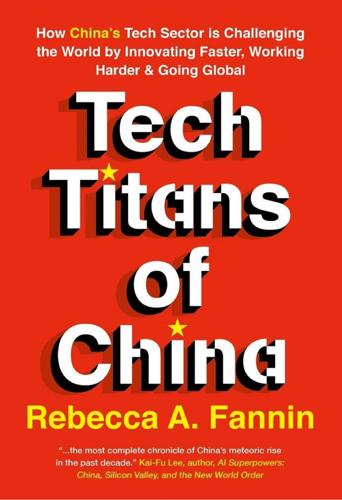
Tech Titans of China: How China's Tech Sector Is Challenging the World by Innovating Faster, Working Harder, and Going Global
by
Rebecca Fannin
Published 2 Sep 2019
The firm is a few years ahead of its closest US comparable, LendingClub, in applying AI to lending. In China, WeLab has multiple competitors: online banks from Chinese tech giants Ant Financial and Tencent WeBank in addition to Chinese peer-to-peer lending services, among them two New York–traded companies, Alibaba-backed Qudian and Legend Capital–invested PPDAI Group. The peer-to-peer lending sector has recently cooled after a regulatory crackdown. Stanford Founder The brainchild of WeLab is CEO, chairman, and founder Simon Loong, a Stanford University business school graduate with a 20-year banking career in Asia at Citibank and Standard Chartered Bank.
…
Leung said he believes SenseTime will be in the class of Baidu, Alibaba, and Tencent, at the top of China’s AI sector. SenseTime has perfected camera surveillance technology that analyzes faces, car license plates, vehicle types, and events for public security in China. Its high-tech system also verifies identities for payments at staff-less checkouts, peer-to-peer lending, and phone unlocks. During Chinese New Year, when travel is at a peak, Sense-Time facial recognition technology lets passengers match personal ID cards with their tickets and luggage and cut waiting time in long lines. They also can check boarding times, flight status, and gates by standing in front of a “smart” sensor camera.

The Future Is Faster Than You Think: How Converging Technologies Are Transforming Business, Industries, and Our Lives
by
Peter H. Diamandis
and
Steven Kotler
Published 28 Jan 2020
The “crowd” in question refers to the billions of people currently online. The funding part means asking that crowd for money. Typically, a crowdfunder presents their product or service to the world, usually via a video posted to a dedicated site like Kickstarter, and asks for money in one of four forms: as a loan (technically peer-to-peer lending), as an equity investment, in exchange for a reward (e.g., a T-shirt), or as an advanced purchase of the proposed product or service. And it can add up to a lot of money. The very first crowdfunding project took place in 1997, when the British prog-rock band Marillion raised $60,000 through online donations to finance a US tour.
…
In fact, because it’s easier to match people looking to exchange currency than it is to match people looking to date, the company reached a billion-dollar valuation in under five years. Built on networks and apps, TransferWise is also an example of fintech’s colonization wave. The radicalized wave arose when AI entered the picture. Consider the age-old practice of “Buddy, can I borrow a dollar,” otherwise known as peer-to-peer lending. Traditionally, this is a high-risk practice—which is to say, Buddy rarely gets his dollar back. This problem only gets worse with scale. As villages turned into towns, towns expanded into cities, and cities began to sprawl, neighborly trust broke down. That’s where banks came into play—they added trust back into the lending equation.
…
LendingTree: See: https://www.lendingtree.com/. $26.16 billion in 2015 to $897.85 billion by 2024: According to a report by Transparency Market Research, found here: https://www.globenewswire.com/news-release/2016/08/31/868470/0/en/Increasing-Small-Business-Units-to-Act-as-Building-Blocks-for-Peer-to-Peer-Lending-Market.html. Smart Finance Group: Alexandra Stevenson, “China’s New Lenders Collect Invasive Data and Offer Billions. Beijing Is Worried,” New York Times, December 25, 2017. See: https://www.nytimes.com/2017/12/25/business/china-online-lending-debt.html. Wealthfront: See: https://www.wealthfront.com/.

What's Mine Is Yours: How Collaborative Consumption Is Changing the Way We Live
by
Rachel Botsman
and
Roo Rogers
Published 2 Jan 2010
This rate is even more impressive when you consider that the average default rate on credit cards in mid-2009 was more than 10 percent.15 Zopa reduces the risk of peer-to-peer lending by using the established trading logic known as hedging your bets. If a farmer plants an entire crop of just tomatoes, a fungus can wipe out the whole harvest in a matter of days. This is why most farmers follow the principle of mixed crops. Fund managers apply the same logic when investing in a range of stocks and mutual funds. Based on this principle of not putting all your eggs in one basket, peer-to-peer lending sites such as Zopa minimize risk by dividing a loan into small amounts and spreading it over a wide range of a dozen or more borrowers.
…
Description of VEN can be found at www.crunchbase.com/company/hub-culture. 10. “Brits Put Their Faith in Traditional Banking Values,” research report published by Mintel (2008), www.marketresearchworld.net/index.php?option=com_content&task=view&id=2294&Itemid=77. 11. Amy Hoak, “How to Use Peer-to-Peer Lending Sites to Borrow Money,” FiLife (January 2008), www.filife.com/stories/borrowing-from-p2p-lending. 12. Carlota Perez, Technological Revolutions and Financial Capital: The Dynamics of Bubbles and Golden Ages (Edward Elgar Publishing, 2002). 13. Pierre Omidyar, “From Self to Society: Citizenship to Community for a World of Change,” keynote address at Tufts University (May 2002), http://enews.tufts.edu/stories/052002Omidyar_Pierre_keynote.htm. 14.
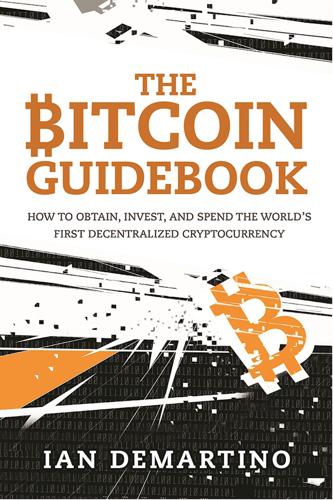
The Bitcoin Guidebook: How to Obtain, Invest, and Spend the World's First Decentralized Cryptocurrency
by
Ian Demartino
Published 2 Feb 2016
Chapter 9: Other Bitcoin Scams and Common Tactics SECTION II: HOW TO INVEST IN BITCOIN Chapter 10: How to Buy Bitcoin with a Bank Account, Cash, or PayPal Chapter 11: Working for Bitcoin Chapter 12: Mining Chapter 13: HODL! Chapter 14: Day Trading Chapter 15: Altcoin Trading and Pump-and-Dumps Chapter 16: Peer-to-Peer Lending Chapter 17: Investing in Other Commodities Using Bitcoin SECTION III: WHAT CAN BITCOIN DO FOR ME? Chapter 18: Remittance Chapter 19: Microtransactions Chapter 20: Start-up Funding SECTION IV: THE FUTURE OF BITCOIN Chapter 21: Altcoins and Bitcoin 2.0 Projects Chapter 22: Distributed Autonomous Corporations, Governance, and Niche Economies Index Foreword This is my first book, so I can’t pretend to be an expert on how these things are supposed to go.
…
“The Story of Bob Surplus.” Bitcoin Talk. December 17, 2014. Accessed June 22, 2015. https://bitcointalk.org/index.php?topic=896480.0. 2 “Paycoin Is Here | Paycoin Digital Currency.” May 17, 2014. Accessed June 22, 2015. https://archive.is/0HEwd. http://paycoins.biz/paycoin/ Chapter 16: Peer-to-Peer Lending If you go out into the real world, you cannot miss seeing that the poor are poor not because they are untrained or illiterate but because they can’t retain the returns of their labor. They have no control over capital, and it is the ability to control capital that gives people the power to rise out of poverty.
…
Investing such small amounts using traditional fiat systems would create a huge pain in the ass for lenders when it came time to pay the loan back. Either they or the middleman would have to send back dozens of small transactions every month using the slow and ineffective legacy system. Paying back investors with Bitcoin can be done instantly, simply and inexpensively. Internet-enabled but fiat-based peer-to-peer lending programs have created systems that are quicker and simpler than it would be without them, but they still ultimately go through the legacy system and are hit with significant fees because of it. Even with sites such as Kiva, a microloan site with a charity bent that takes no fees of its own and depends on separate donations to cover operating costs, not all the money gets into the hands of borrowers—because their “field partners,” who help get money into the hands of borrowers, sometimes take a profit.
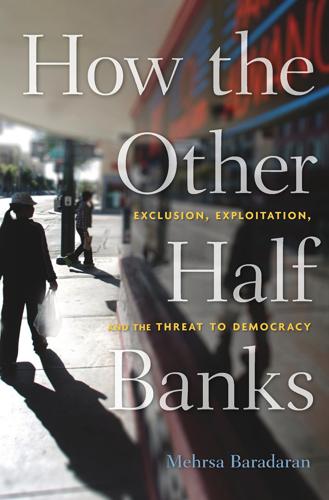
How the Other Half Banks: Exclusion, Exploitation, and the Threat to Democracy
by
Mehrsa Baradaran
Published 5 Oct 2015
On the other hand, if the services were linked to a mobile provider (as envisioned by a T-Mobile proposal to enter this field), they would be fee-based financial transactions without FDIC insurance protection or a route to a bank account.81 In other words, mobile banking may make banking easier for the banked, but at least in the United States, it is unlikely to offer the low-cost products needed by the unbanked. Still, it is too soon to deliver a verdict. PEER-TO-PEER LENDING Taking advantage of Internet technology knocking some of the barriers between people down, peer-to-peer (P2P) lending cuts out the bank middleman and allows individuals to loan to others at an interest rate negotiated by the two parties. The difference is that the loans are provided with the lender’s own capital as opposed to others’ capital.
…
Loans for other purposes grew from just over $8 million in 2008 to nearly $700 million in 2012. The average loan size has also grown for both groups, from $5,400 to $16,200 for small business loans, and from $3,600 to $13,400 for non-business loans. The interest rate is similar across small business loans and loans for other purposes.” Traci L. Mach et al., “Peer-to-Peer Lending to Small Businesses,” Federal Reserve Board of Governors, March 2013, 4, accessed March 15, 2015, www.frbatlanta.org/documents/news/conferences/13resilience_rebuilding_paper_Mach.pdf. Bonnie McGeer and Glen Fest, “P2P Lending: 2B or Not 2B?,” American Banker, February 25, 2014, accessed March 15, 2015, www.americanbanker.com/magazine/124_02/p2p-lending-2b-or-not-2b-1065594-1.html?
…
See also Great Depression Newspapers, dissemination of, 185 New York State, 33, 125, 127 NHA (National Housing Association), 258n126 Nixon, Richard, 36 No doc loans, 159 Norquist, Grover, 186 North Carolina, 159, 275n93 Obama, Barack, 20–21, 22, 23, 60, 126–127, 165, 170, 293n20 OCC (Office of the Comptroller of the Currency), 56, 59, 159, 246nn101,105 Occupy Wall Street, 19, 109 Office of Economic Opportunity, 73 Oliver, John, 129 Operation Choke Point, 127–129 Opportunity, equality of, 29–30 Oregon, 130 OTS (Office of Thrift Supervision), 54, 56, 59, 93, 159, 246n105 Overdraft fees, 141–142, 143, 176, 281–282n17 Overdraft protection, as credit, 176 Owen, Robert, 43 Oxford Provident Building Association, 85 P2P (peer-to-peer lending), 179–181, 301n83 Paine, Thomas, 29 Panics, 40; Panic of 1907, 40, 197; Panic of 1873, 83–84; Panic of 1893, 192 Paulson, Henry, 20, 21–22, 24, 59 Pawnshops, 65, 114, 122, 270n53 Payday borrowers, 115–118, 271n60 Payday lenders, 2; interest charged by, 2, 3, 8, 110, 112–113, 124, 125, 131–133; provision of credit to, 3; proposed alternatives to, 76; charters of, 109–110, 125; statistics for, 111–112, 269nn42,43; characteristics of borrowers from, 115–118; lack of alternatives to, 116–117, 129; support for, 117–118; stigma associated with, 118–119; growth of, 122; business model of, 122–123; state regulation of, 124; online payday lenders, 125; access of to borrowers’ accounts, 127; demand for, 129–130; effects of regulating, 129–130, 132; default rates on loans by, 132; profitability of, 132; opposition of to postal banking, 220; violation of consumer-protection rules by, 275–276n93; fee schedules of, 279n130.

MacroWikinomics: Rebooting Business and the World
by
Don Tapscott
and
Anthony D. Williams
Published 28 Sep 2010
“I can reliably get 12 percent, worst case 9 percent,” he said.23 Though the actual returns achieved by the lenders have been inconsistent, and not fully transparent, there is no doubt that these sites are building powerful momentum in a storm of bank customer disenchantment. Although P2P banking as we’ve described it originated in Europe and North America, entrepreneurs like Calvin Chin see the relatively underdeveloped banking markets of emerging economies as a potential opportunity too. Chin recently launched Qifang, a peer-to-peer lending platform in China that focuses on the student loan market. “We’re taking what has traditionally been an offline informal activity, borrowing between individuals, and bringing it into the digital age,” he says. “So a prospective student can now borrow not just from family and friends but from people across China.”
…
In the year and a half since Qifang’s official launch, the company facilitated over three thousand transactions. The next step for Chin is to expand the lender base with partnerships with traditional banks as well as nonprofits and philanthropic organizations. Is this the beginning of an outright social movement? Peer-to-peer lending will certainly not displace the retail lending divisions of the big banks anytime soon. That said, social banking clearly offers many advantages both in the developed markets as well as in the rising economies. If some of the early hurdles can be ironed out, the phenomenon could have a promising future.
…
According to Jessica, lenders on Kiva see a poor, uneducated farmer in sub-Saharan Africa not as a charity case, but as a strong, hardworking, intelligent individual who has an enormous amount of potential to change his or her own life for the better. Indeed, unlike a donation to a charity, which begins and ends with the writing of a check, the people who connect through Kiva are partners, and that deeper level of engagement seems to be at the core of Kiva’s attraction. “Kiva is about more than just peer-to-peer lending,” says Matt. “It’s a platform for collaboration and a chance to develop genuine business relationships between lenders and the loan recipients.” He says most lenders take the opportunity to dig into the business plan, provide advice, and monitor the progress of the recipients. Once the loan is repaid, lenders can re-lend to another entrepreneur, donate their money to Kiva, or withdraw it.

No Ordinary Disruption: The Four Global Forces Breaking All the Trends
by
Richard Dobbs
and
James Manyika
Published 12 May 2015
Traditionally, getting access to capital meant having a good credit rating and nurturing relationships with major financial institutions in financial hubs such as London, Tokyo, and New York. Now, however, it means tapping into other large pools of capital, such as sovereign wealth funds (SWFs) and pension funds, and using digital platforms for peer-to-peer lending and funding crowd sourcing. Given that the bulk of the increased demand for capital will be for long-term project financing in sectors such as infrastructure and real estate, executives and leaders will increasingly need to seek out pools of patient capital. Investors, such as pensions and sovereign wealth funds, could supply such capital.
…
Since its foundation in 1974, Temasek’s portfolio has included everything from shares in shoemakers to a bird park.61 Digital platforms are also opening access to new sources of capital. These are often of particular interest for smaller companies that do not have access to more traditional capital sources such as public markets and bank loans. Peer-to-peer lending and fund-raising platforms such as Kiva and Kickstarter know no national borders. Kiva, a web-based platform that allows users to lend money to people around the world, has reached over 1.2 million lenders, intermediating more than $600 million in loans.62 Since its founding in 2009, Kickstarter, a crowd-sourcing platform for creative projects—from movie documentaries to board games—has coordinated $1.3 billion in pledges from more than 6.9 million people.63 Among the notable projects funded on Kickstarter was the Veronica Mars movie, a sequel to the television show, which raised $5.7 million from more than ninety thousand “backers.”64 Alipay, the payment processing company launched in China by e-commerce giant Alibaba, has a unit that provides financing to small businesses.65 Exploit New Commercial Opportunities Companies with access to privileged sources of capital will have a clear competitive advantage.
…
For long-term investments, banks can capitalize on existing corporate relationships and underwriting skills and can facilitate the syndication of loan deals on behalf of large institutional investors or partner with governments to create public-private lending institutions. For small and medium enterprises, banks can double down on services related to the provision of working capital or tap into the growing peer-to-peer lending space. Early moves are already taking place, with peer-to-peer lenders such as Lending Club and Funding Circle creating strategic alliances with Union Bank and Santander, respectively, to create new credit products for their customers.71 In the summer of 2014, Lending Club, which was valued at $4 billion in a private fund-raising round, filed for an initial public offering of at least $500 million.

Frugal Innovation: How to Do Better With Less
by
Jaideep Prabhu Navi Radjou
Published 15 Feb 2015
In 2013, more people used BlaBlaCar, a leading European car-sharing service, than travelled by the high-speed Eurostar train between London and Paris.8 Airbnb now rents more room nights annually than Hilton’s entire hotel chain does globally. And the peer-to-peer lending market, which bypasses banks and their hefty hidden fees, passed the $1 billion mark in early 2012. In August 2014, Zopa, a leading UK peer-to-peer lending firm, announced that its platform alone had loaned over $1 billion since its launch in 2005, with a default rate of less than 1%. The new frugal economy is growing by leaps and bounds in the developed world not only because it meets the needs of cost-conscious consumers, but also because it responds to their aspirations to give back to society and be environmentally responsible.
…
MacArthur Foundation 14 John Deere 67 John Lewis 195 Johnson & Johnson 100, 111 Johnson, Warren 98 Jones, Don 112 jugaad (frugal ingenuity) 199, 202 Jugaad Innovation (Radjou, Prabhu and Ahuja, 2012) xvii, 17 just-in-time design 33–4 K Kaeser, Joe 217 Kalanick, Travis 163 Kalundborg (Denmark) 160 kanju 201 Karkal, Shamir 124 Kaufman, Ben 50–1, 126 Kawai, Daisuke 29–30 Kelly, John 199–200 Kennedy, President John 138 Kenya 57, 200–1 key performance indicators see KPIs Khan Academy 16–17, 113–14, 164 Khan, Salman (Sal) 16–17, 113–14 Kickstarter 17, 48, 137, 138 KieranTimberlake 196 Kimberly-Clark 25, 145 Kingfisher 86–7, 91, 97, 157, 158–9, 185–6, 192–3, 208 KissKissBankBank 17, 137 Knox, Steve 145 Knudstorp, Jørgen Vig 37, 68, 69 Kobori, Michael 83, 100 KPIs (key performance indicators) 38–9, 67, 91–2, 185–6, 208 Kuhndt, Michael 194 Kurniawan, Arie 151–2 L La Chose 108 La Poste 92–3, 157 La Ruche qui dit Oui 137 “labs on a chip” 52 Lacheret, Yves 173–5 Lada 1 laser cutters 134, 166 Laskey, Alex 119 last-mile challenge 57, 146, 156 L’Atelier 168–9 Latin America 161 lattice organisation 63–4 Laury, Véronique 208 Laville, Elisabeth 91 Lawrence, Jamie 185, 192–3, 208 LCA (life-cycle assessment) 196–7 leaders 179, 203–5, 214, 217 lean manufacturing 192 leanness 33–4, 41, 42, 170, 192 Learnbox 114 learning by doing 173, 179 learning organisations 179 leasing 123 Lee, Deishin 159 Lego 51, 126 Lego Group 37, 68, 69, 144 Legrand 157 Lenovo 56 Leroy, Adolphe 127 Leroy Merlin 127–8 Leslie, Garthen 150–1 Lever, William Hesketh 96 Levi Strauss & Co 60, 82–4, 100, 122–3 Lewis, Dijuana 212 life cycle of buildings 196 see also product life cycle life-cycle assessment (LCA) 196–7 life-cycle costs 12, 24, 196 Lifebuoy soap 95, 97 lifespan of companies 154 lighting 32, 56, 123, 201 “lightweighting” 47 linear development cycles 21, 23 linear model of production 80–1 Link 131 littleBits 51 Livi, Daniele 88 Livi, Vittorio 88 local communities 52, 57, 146, 206–7 local markets 183–4 Local Motors 52, 129, 152 local solutions 188, 201–2 local sourcing 51–2, 56, 137, 174, 181 localisation 56, 137 Locavesting (Cortese, 2011) 138 Logan car 2–3, 12, 179, 198–9 logistics 46, 57–8, 161, 191, 207 longevity 121, 124 Lopez, Maribel 65–6 Lopez Research 65–6 L’Oréal 174 Los Alamos National Laboratory 170 low-cost airlines 60, 121 low-cost innovation 11 low-income markets 12–13, 161, 203, 207 Lowry, Adam 81–2 M m-health 109, 111–12 M-KOPA 201 M-Pesa 57, 201 M3D 48, 132 McDonough Braungart Design Chemistry (MBDC) 84 McDonough, William 82 McGregor, Douglas 63 MacGyvers 17–18, 130, 134, 167 McKelvey, Jim 135 McKinsey & Company 81, 87, 209 mainstream, frugal products in 216 maintenance 66, 75, 76, 124, 187 costs 48–9, 66 Mainwaring, Simon 8 Maistre, Christophe de 187–8, 216 Maker Faire 18, 133–4 Maker platform 70 makers 18, 133–4, 145 manufacturing 20th-century model 46, 55, 80–1 additive 47–9 continuous 44–5 costs 47, 48, 52 decentralised 9, 44, 51–2 frugal 44–54 integration with logistics 57–8 new approaches 50–4 social 50–1 subtractive method 48 tools for 47, 47–50 Margarine Unie 96 market 15, 28, 38, 64, 186, 189, 192 R&D and 21, 26, 33, 34 market research 25, 61, 139, 141 market share 100 marketing 21–2, 24, 36, 61–3, 91, 116–20, 131, 139 and R&D 34, 37, 37–8 marketing teams 143, 150 markets 12–13, 42, 62, 215 see also emerging markets Marks & Spencer (M&S) 97, 215 Plan A 90, 156, 179–81, 183–4, 186–7, 214 Marriott 140 Mars 57, 158–9, 161 Martin Marietta 159 Martin, Tod 154 mass customisation 9, 46, 47, 48, 57–8 mass market 189 mass marketing 21–2 mass production 9, 46, 57, 58, 74, 129, 196 Massachusetts Institute of Technology see MIT massive open online courses see MOOCs materials 3, 47, 48, 73, 92, 161 costs 153, 161, 190 recyclable 74, 81, 196 recycled 77, 81–2, 83, 86, 89, 183, 193 renewable 77, 86 repurposing 93 see also C2C; reuse Mayhew, Stephen 35, 36 Mazoyer, Eric 90 Mazzella, Frédéric 163 MBDC (McDonough Braungart Design Chemistry) 84 MDI 16 measurable goals 185–6 Mechanical Engineer Laboratory (MEL) 52 “MEcosystems” 154–5, 156–8 Medicare 110 medication 111–12 Medicity 211 MedStartr 17 MEL (Mechanical Engineer Laboratory) 52 mental models 2, 193–203, 206, 216 Mercure 173 Merlin, Rose 127 Mestrallet, Gérard 53, 54 method (company) 81–2 Mexico 38, 56 Michelin 160 micro-factories 51–2, 52, 66, 129, 152 micro-robots 52 Microsoft 38 Microsoft Kinect 130 Microsoft Word 24 middle classes 197–8, 216 Migicovsky, Eric 137–8 Mikkiche, Karim 199 millennials 7, 14, 17, 131–2, 137, 141, 142 MindCET 165 miniaturisation 52, 53–4 Mint.com 125 MIT (Massachusetts Institute of Technology) 44–5, 107, 130, 134, 202 mobile health see m-health mobile phones 24, 32, 61, 129–30, 130, 168, 174 emerging market use 198 infrastructure 56, 198 see also smartphones mobile production units 66–7 mobile technologies 16, 17, 103, 133, 174, 200–1, 207 Mocana 151 Mochon, Daniel 132 modular design 67, 90 modular production units 66–7 Modularer Querbaukasten see MQB “mompreneurs” 145 Mondelez 158–9 Money Dashboard 125 Moneythink 162 monitoring 65–6, 106, 131 Monopoly 144 MOOCs (massive open online courses) 60, 61, 112, 113, 114, 164 Morieux, Yves 64 Morocco 207 Morris, Robert 199–200 motivation, employees 178, 180, 186, 192, 205–8 motivational approaches to shaping consumer behaviour 105–6 Motorola 56 MQB (Modularer Querbaukasten) 44, 45–6 Mulally, Alan 70, 166 Mulcahy, Simon 157 Mulliez family 126–7 Mulliez, Vianney 13, 126 multi-nodal innovation 202–3 Munari, Bruno 93 Murray, Mike 48–9 Musk, Elon 172 N Nano car 119, 156 National Geographic 102 natural capital, loss of 158–9 Natural Capital Leaders Platform 158–9 natural resources 45, 86 depletion 7, 72, 105, 153, 158–9 see also resources NCR 55–6 near-shoring 55 Nelson, Simon 113 Nemo, Sophie-Noëlle 93 Nest Labs 98–100, 103 Nestlé 31, 44, 68, 78, 94, 158–9, 194, 195 NetPositive plan 86, 208 networking 152–3, 153 new materials 47, 92 New Matter 132 new technologies 21, 27 Newtopia 32 next-generation customers 121–2 next-generation manufacturing techniques 44–6, 46–7 see also frugal manufacturing Nigeria 152, 197–8 Nike 84 NineSigma 151 Nissan 4, 4–5, 44, 199 see also Renault-Nissan non-governmental organisations 167 non-profit organisations 161, 162, 202 Nooyi, Indra 217 Norman, Donald 120 Norris, Greg 196 North American companies 216–17 North American market 22 Northrup Grumman 68 Norton, Michael 132 Norway 103 Novartis 44–5, 215 Novotel 173, 174 nudging 100, 108, 111, 117, 162 Nussbaum, Bruce 140 O O2 147 Obama, President Barack 6, 8, 13, 134, 138, 208 obsolescence, planned 24, 121 offshoring 55 Oh, Amy 145 Ohayon, Elie 71–2 Oliver Wyman 22 Olocco, Gregory 206 O’Marah, Kevin 58 on-demand services 39, 124 online communities 31, 50, 61, 134 online marketing 143 online retailing 60, 132 onshoring 55 Opel 4 open innovation 104, 151, 152, 153, 154 open-source approach 48, 129, 134, 135, 172 open-source hardware 51, 52, 89, 130, 135, 139 open-source software 48, 130, 132, 144–5, 167 OpenIDEO 142 operating costs 45, 215 Opower 103, 109, 119 Orange 157 Orbitz 173 organisational change 36–7, 90–1, 176, 177–90, 203–8, 213–14, 216 business models 190–3 mental models 193–203 organisational culture 36–7, 170, 176, 177–9, 213–14, 217 efficacy focus 181–3 entrepreneurial 76, 173 see also organisational change organisational structure 63–5, 69 outsourcing 59, 143, 146 over-engineering 27, 42, 170 Overby, Christine 25 ownership 9 Oxylane Group 127 P P&G (Procter & Gamble) 19, 31, 58, 94, 117, 123, 145, 195 packaging 57, 96, 195 Page, Larry 63 “pain points” 29, 30, 31 Palmer, Michael 212 Palo Alto Junior League 20 ParkatmyHouse 17, 63, 85 Parker, Philip 61 participation, customers 128–9 partner ecosystems 153, 154, 200 partners 65, 72, 148, 153, 156–8 sharing data with 59–60 see also distributors; hyper-collaboration; suppliers Partners in Care Foundation 202 partnerships 41, 42, 152–3, 156–7, 171–2, 174, 191 with SMBs 173, 174, 175 with start-ups 20, 164–5, 175 with suppliers 192–3 see also hyper-collaboration patents 171–2 Payne, Alex 124 PE International 196 Pearson 164–5, 167, 181–3, 186, 215 Pebble 137–8 peer-to-peer economic model 10 peer-to-peer lending 10 peer-to-peer sales 60 peer-to-peer sharing 136–7 Pélisson, Gérard 172–3 PepsiCo 38, 40, 179, 190, 194, 215 performance 47, 73, 77, 80, 95 of employees 69 Pernod Ricard 157 personalisation 9, 45, 46, 48, 62, 129–30, 132, 149 Peters, Tom 21 pharmaceutical industry 13, 22, 23, 33, 58, 171, 181 continuous manufacturing 44–6 see also GSK Philippines 191 Philips 56, 84, 100, 123 Philips Lighting 32 Picaud, Philippe 122 Piggy Mojo 119 piggybacking 57 Piketty, Thomas 6 Plan A (M&S) 90, 156, 179–81, 183–4, 186–7, 214 Planet 21 (Accor) 174–5 planned obsolescence 24, 121 Plastyc 17 Plumridge, Rupert 18 point-of-sale data 58 Poland 103 pollution 74, 78, 87, 116, 187, 200 Polman, Paul 11, 72, 77, 94, 203–5, 217 portfolio management tools 27, 33 Portugal 55, 103 postponement 57–8 Potočnik, Janez 8, 79 Prabhu, Arun 25 Prahalad, C.K. 12 predictive analytics 32–3 predictive maintenance 66, 67–8 Priceline 173 pricing 81, 117 processes digitising 65–6 entrenched 14–16 re-engineering 74 simplifying 169, 173 Procter & Gamble see P&G procurement priorities 67–8 product life cycle 21, 75, 92, 186 costs 12, 24, 196 sustainability 73–5 product-sharing initiatives 87 production costs 9, 83 productivity 49, 59, 65, 79–80, 153 staff 14 profit 14, 105 Progressive 100, 116 Project Ara 130 promotion 61–3 Propeller Health 111 prosumers xix–xx, 17–18, 125, 126–33, 136–7, 148, 154 empowering and engaging 139–46 see also horizontal economy Protomax 159 prototypes 31–2, 50, 144, 152 prototyping 42, 52, 65, 152, 167, 192, 206 public 50–1, 215 public sector, working with 161–2 publishers 17, 61 Pullman 173 Puma 194 purchasing power 5–6, 216 pyramidal model of production 51 pyramidal organisations 69 Q Qarnot Computing 89 Qualcomm 84 Qualcomm Life 112 quality 3, 11–12, 15, 24, 45, 49, 82, 206, 216 high 1, 9, 93, 198, 216 measure of 105 versus quantity 8, 23 quality of life 8, 204 Quicken 19–21 Quirky 50–1, 126, 150–1, 152 R R&D 35, 67, 92, 151 big-ticket programmes 35–6 and business development 37–8 China 40, 188, 206 customer focus 27, 39, 43 frugal approach 12, 26–33, 82 global networks 39–40 incentives 38–9 industrial model 2, 21–6, 33, 36, 42 market-focused, agile model 26–33 and marketing 34, 37, 37–8 recommendations for managers 34–41 speed 23, 27, 34, 149 spending 15, 22, 23, 28, 141, 149, 152, 171, 187 technology culture 14–15, 38–9 see also Air Liquide; Ford; GSK; IBM; immersion; Renault; SNCF; Tarkett; Unilever R&D labs 9, 21–6, 70, 149, 218 in emerging markets 40, 188, 200 R&D teams 26, 34, 38–9, 65, 127, 150, 194–5 hackers as 142 innovation brokering 168 shaping customer behaviour 120–2 Raspberry Pi 135–6, 164 Ratti, Carlo 107 raw materials see materials real-time demand signals 58, 59 Rebours, Christophe 157–8 recession 5–6, 6, 46, 131, 180 Reckitt Benckiser 102 recommendations for managers flexing assets 65–71 R&D 34–41 shaping consumer behaviour 116–24 sustainability 90–3 recruiting 70–1 recyclable materials 74, 81, 196 recyclable products 3, 73, 159, 195–6 recycled materials 77, 81–2, 83, 86, 89, 183, 193 recycling 8, 9, 87, 93, 142, 159 e-waste 87–8 electronic and electrical goods (EU) 8, 79 by Tarkett 73–7 water 83, 175 see also C2C; circular economy Recy’Go 92–3 regional champions 182 regulation 7–8, 13, 78–9, 103, 216 Reich, Joshua 124 RelayRides 17 Renault 1–5, 12, 117, 156–7, 179 Renault-Nissan 4–5, 40, 198–9, 215 renewable energy 8, 53, 74, 86, 91, 136, 142, 196 renewable materials 77, 86 Replicator 132 repurposing 93 Requardt, Hermann 189 reshoring 55–6 resource constraints 4–5, 217 resource efficiency 7–8, 46, 47–9, 79, 190 Resource Revolution (Heck, Rogers and Carroll, 2014) 87–8 resources 40, 42, 73, 86, 197, 199 consumption 9, 26, 73–7, 101–2 costs 78, 203 depletion 7, 72, 105, 153, 158–9 reducing use 45, 52, 65, 73–7, 104, 199, 203 saving 72, 77, 200 scarcity 22, 46, 72, 73, 77–8, 80, 158–9, 190, 203 sharing 56–7, 159–61, 167 substitution 92 wasting 169–70 retailers 56, 129, 214 “big-box” 9, 18, 137 Rethink Robotics 49 return on investment 22, 197 reuse 9, 73, 76–7, 81, 84–5, 92–3, 200 see also C2C revenues, generating 77, 167, 180 reverse innovation 202–3 rewards 37, 178, 208 Riboud, Franck 66, 184, 217 Rifkin, Jeremy 9–10 robots 47, 49–50, 70, 144–5, 150 Rock Health 151 Rogers, Jay 129 Rogers, Matt 87–8 Romania 2–3, 103 rookie mindset 164, 168 Rose, Stuart 179–80, 180 Roulin, Anne 195 Ryan, Eric 81–2 Ryanair 60 S S-Oil 106 SaaS (software as a service) 60 Saatchi & Saatchi 70–1 Saatchi & Saatchi + Duke 71–2, 143 sales function 15, 21, 25–6, 36, 116–18, 146 Salesforce.com 157 Santi, Paolo 108 SAP 59, 186 Saunders, Charles 211 savings 115 Sawa Orchards 29–31 Scandinavian countries 6–7 see also Norway Schmidt, Eric 136 Schneider Electric 150 Schulman, Dan 161–2 Schumacher, E.F. 104–5, 105 Schweitzer, Louis 1, 2, 3, 4, 179 SCM (supply chain management) systems 59 SCOR (supply chain operations reference) model 67 Seattle 107 SEB 157 self-sufficiency 8 selling less 123–4 senior managers 122–4, 199 see also CEOs; organisational change sensors 65–6, 106, 118, 135, 201 services 9, 41–3, 67–8, 124, 149 frugal 60–3, 216 value-added 62–3, 76, 150, 206, 209 Shapeways 51, 132 shareholders 14, 15, 76, 123–4, 180, 204–5 sharing 9–10, 193 assets 159–61, 167 customers 156–8 ideas 63–4 intellectual assets 171–2 knowledge 153 peer-to-peer 136–9 resources 56–7, 159–61, 167 sharing economy 9–10, 17, 57, 77, 80, 84–7, 108, 124 peer-to-peer sharing 136–9 sharing between companies 159–60 shipping costs 55, 59 shopping experience 121–2 SIEH hotel group 172–3 Siemens 117–18, 150, 187–9, 215, 216 Sigismondi, Pier Luigi 100 Silicon Valley 42, 98, 109, 150, 151, 162, 175 silos, breaking out of 36–7 Simple Bank 124–5 simplicity 8, 41, 64–5, 170, 194 Singapore 175 Six Sigma 11 Skillshare 85 SkyPlus 62 Small is Beautiful (Schumacher, 1973) 104–5 “small is beautiful” values 8 small and medium-sized businesses see SMBs Smart + Connected Communities 29 SMART car 119–20 SMART strategy (Siemens) 188–9 smartphones 17, 100, 106, 118, 130, 131, 135, 198 in health care 110, 111 see also apps SmartScan 29 SMBs (small and medium-sized businesses) 173, 174, 175, 176 SMS-based systems 42–3 SnapShot 116 SNCF 41–3, 156–7, 167 SoapBox 28–9 social business model 206–7 social comparison 109 social development 14 social goals 94 social learning 113 social manufacturing 47, 50–1 social media 16, 71, 85, 106, 108, 168, 174 for marketing 61, 62, 143 mining 29, 58 social pressure of 119 tools 109, 141 and transaction costs 133 see also Facebook; social networks; Twitter social networks 29, 71, 72, 132–3, 145, 146 see also Facebook; Twitter social pressure 119 social problems 82, 101–2, 141, 142, 153, 161–2, 204 social responsibility 7, 10, 14, 141, 142, 197, 204 corporate 77, 82, 94, 161 social sector, working with 161–2 “social tinkerers” 134–5 socialising education 112–14 Sofitel 173 software 72 software as a service (SaaS) 60 solar power 136, 201 sourcing, local 51–2, 56 Southwest Airlines 60 Spain 5, 6, 103 Spark 48 speed dating 175, 176 spending, on R&D 15, 22, 23, 28, 141, 149, 152, 171, 187 spiral economy 77, 87–90 SRI International 49, 52 staff see employees Stampanato, Gary 55 standards 78, 196 Starbucks 7, 140 start-ups 16–17, 40–1, 61, 89, 110, 145, 148, 150, 169, 216 investing in 137–8, 157 as partners 42, 72, 153, 175, 191, 206 see also Nest Labs; Silicon Valley Statoil 160 Steelcase 142 Stem 151 Stepner, Diana 165 Stewart, Emma 196–7 Stewart, Osamuyimen 201–2 Sto Corp 84 Stora Enso 195 storytelling 112, 113 Strategy& see Booz & Company Subramanian, Prabhu 114 substitution of resources 92 subtractive manufacturing 48 Sun Tzu 158 suppliers 67–8, 83, 148, 153, 167, 176, 192–3 collaboration with 76, 155–6 sharing with 59–60, 91 visibility 59–60 supply chain management see SCM supply chain operations reference (SCOR) model 67 supply chains 34, 36, 54, 65, 107, 137, 192–3 carbon footprint 156 costs 58, 84 decentralisation 66–7 frugal 54–60 integrating 161 small-circuit 137 sustainability 137 visibility 34, 59–60 support 135, 152 sustainability xix, 9, 12, 72, 77–80, 82, 97, 186 certification 84 as competitive advantage 80 consumers and 95, 97, 101–4 core design principle 82–4, 93, 195–6 and growth 76, 80, 104–5 perceptions of 15–16, 80, 91 recommendations for managers 90–3 regulatory demand for 78–9, 216 standard bearers of 80, 97, 215 see also Accor; circular economy; Kingfisher; Marks & Spencer; Tarkett; Unilever sustainable design 82–4 see also C2C sustainable distribution 57, 161 sustainable growth 72, 76–7 sustainable lifestyles 107–8 Sustainable Living Plan (Unilever) 94–7, 179, 203–4 sustainable manufacturing 9, 52 T “T-shaped” employees 70–1 take-back programmes 9, 75, 77, 78 Tally 196–7 Tarkett 73–7, 80, 84 TaskRabbit 85 Tata Motors 16, 119 Taylor, Frederick 71 technical design 37–8 technical support, by customers 146 technology 2, 14–15, 21–2, 26, 27 TechShop 9, 70, 134–5, 152, 166–7 telecoms sector 53, 56 Telefónica 147 telematic monitoring 116 Ternois, Laurence 42 Tesco 102 Tesla Motors 92, 172 testing 28, 42, 141, 170, 192 Texas Industries 159 Textoris, Vincent 127 TGV Lab 42–3 thermostats 98–100 thinking, entrenched 14–16 Thompson, Gav 147 Timberland 90 time 4, 7, 11, 41, 72, 129, 170, 200 constraints 36, 42 see also development cycle tinkerers 17–18, 133–5, 144, 150, 152, 153, 165–7, 168 TiVo 62 Tohamy, Noha 59–60 top-down change 177–8 top-down management 69 Total 157 total quality management (TQM) 11 total volatile organic compounds see TVOC Toyota 44, 100 Toyota Sweden 106–7 TQM (total quality management) 11 traffic 108, 116, 201 training 76, 93, 152, 167, 170, 189 transaction costs 133 transparency 178, 185 transport 46, 57, 96, 156–7 Transport for London 195 TrashTrack 107 Travelocity 174 trial and error 173, 179 Trout, Bernhardt 45 trust 7, 37, 143 TVOC (total volatile organic compounds) 74, 77 Twitter 29, 62, 135, 143, 147 U Uber 136, 163 Ubuntu 202 Uchiyama, Shunichi 50 UCLA Health 202–3 Udacity 61, 112 UK 194 budget cuts 6 consumer empowerment 103 industrial symbiosis 160 savings 115 sharing 85, 138 “un-management” 63–4, 64 Unboundary 154 Unilever 11, 31, 57, 97, 100, 142, 203–5, 215 and sustainability 94–7, 104, 179, 203–4 University of Cambridge Engineering Design Centre (EDC) 194–5 Inclusive Design team 31 Institute for Sustainability Leadership (CISL) 158–9 upcycling 77, 88–9, 93, 159 upselling 189 Upton, Eben 135–6 US 8, 38, 44, 87, 115, 133, 188 access to financial services 13, 17, 161–2 ageing population 194 ageing workforce 13 commuting 131 consumer spending 5, 6, 103 crowdfunding 137–8, 138 economic pressures 5, 6 energy use 103, 119, 196 environmental awareness 7, 102 frugal innovation in 215–16, 218 health care 13, 110, 208–13, 213 intellectual property 171 onshoring 55 regulation 8, 78, 216 sharing 85, 138–9 shifting production from China to 55, 56 tinkering culture 18, 133–4 user communities 62, 89 user interfaces 98, 99 user-friendliness 194 Utopies 91 V validators 144 value 11, 132, 177, 186, 189–90 aspirational 88–9 to customers 6–7, 21, 77, 87, 131, 203 from employees 217 shareholder value 14 value chains 9, 80, 128–9, 143, 159–60, 190, 215 value engineering 192 “value gap” 54–5 value-added services 62–3, 76, 150, 206, 209 values 6–7, 14, 178, 205 Vandebroek, Sophie 169 Vasanthakumar, Vaithegi 182–3 Vats, Tanmaya 190, 192 vehicle fleets, sharing 57, 161 Verbaken, Joop 118 vertical integration 133, 154 virtual prototyping 65 virtuous cycle 212–13 visibility 34, 59–60 visible learning 112–13 visioning sessions 193–4 visualisation 106–8 Vitality 111 Volac 158–9 Volkswagen 4, 44, 45–6, 129, 144 Volvo 62 W wage costs 48 wages, in emerging markets 55 Waitrose, local suppliers 56 Walker, James 87 walking the walk 122–3 Waller, Sam 195 Walmart 9, 18, 56, 162, 216 Walton, Sam 9 Wan Jia 144 Washington DC 123 waste 24, 87–9, 107, 159–60, 175, 192, 196 beautifying 88–9, 93 e-waste 24, 79, 87–8, 121 of energy 119 post-consumer 9, 75, 77, 78, 83 reducing 47, 74, 85, 96, 180, 209 of resources 169–70 in US health-care system 209 see also C2C; recycling; reuse water 78, 83, 104, 106, 158, 175, 188, 206 water consumption 79, 82–3, 100, 196 reducing 74, 75, 79, 104, 122–3, 174, 183 wealth 105, 218 Wear It Share It (Wishi) 85 Weijmarshausen, Peter 51 well-being 104–5 Wham-O 56 Whirlpool 36 “wicked” problems 153 wireless technologies 65–6 Wiseman, Liz 164 Wishi (Wear It Share It) 85 Witty, Andrew 35, 35–6, 37, 39, 217 W.L.

The Age of Stagnation: Why Perpetual Growth Is Unattainable and the Global Economy Is in Peril
by
Satyajit Das
Published 9 Feb 2016
To preserve the value of their savings, investors are switching from financial instruments to real assets—gold, commodities, farmland, fine arts, and other collectibles. In the US on Bank Transfer Day—an online phenomenon launched by an unhappy Bank of America client—disgruntled customers withdrew money from traditional banks and transferred it to not-for-profit community banks and mutual societies. Peer-to-peer lending, such as Prosper and Lending Club in the US, and Funding Circle in the UK, is part of this trend, matching savers and borrowers for small consumer and business loans. The use of crowdfunding—the practice of raising money from a large number of people, typically via the Internet—to finance ventures is also part of it.
…
But a switch to alternative currencies, precious metals, and non-financial investments undermines growth and economic activity. Savings are locked in unproductive investments or are unavailable to circulate freely. Bypassing traditional banks may lead to a contraction in the availability of credit globally. Investor protection in peer-to-peer lending, or crowdfunding, is unproven. Loss of trust extends to dealings between central banks. In early 2013, the Bundesbank announced that it would move around 674 tons of its gold bullion from foreign central banks to Frankfurt. The move only affected about half of the Bundesbank's gold reserves, and officials stressed that there was no question of “mistrust.”
…
The sharing economy is overrated. Like all businesses, the model requires consistently available product and service providers. Older peer-to-peer providers highlight the developmental arc. eBay evolved from a site where people occasionally sold unwanted items to a marketing channel for professional sellers. Peer-to-peer lending platforms were intended to be for individuals advancing money to other individuals and small businesses. Increasingly they attract institutional lenders and hedge funds, which use the sites to lend at attractive yields. Uber now acts more and more as a booking agent for professional taxis and hire cars.
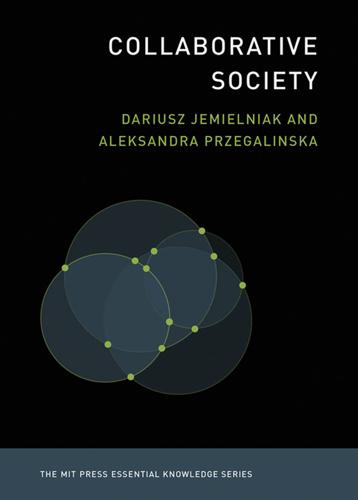
Collaborative Society
by
Dariusz Jemielniak
and
Aleksandra Przegalinska
Published 18 Feb 2020
The commonly used terms shown below in bold often align themselves according to this divide: Table 2.1 Profit-maximization-oriented users/producers Nonprofit-oriented users/producers Capitalist platform Platform capitalism, gig economy Uber, Airbnb, TaskRabbit, Turo Collaborative economy TripAdvisor, Yelp, Couchsurfing, 9GAG Quantified Self Cooperativist platform Online cooperatives Time banks (Timebank.cc, Hourworld.org) Food co-ops Peer-to-peer lending Peer production Wikipedia, Linux, OpenStreetMap Citizen science Online activism #MeToo, Occupy Wall Street Biohacking We believe that many of these examples refer to the phenomena of open collaboration or collaborative consumption, but neither term, sharing economy nor peer production, adequately covers their scope.
…
See also Android operating system Memes, 74–75, 76 Motivation, in peer production communities, 55–56, 57 N=1 studies, 136–137, 137–138 Networked individualism, 183–184 New York taxi medallions, 33 Occupy Wall Street movement, 77–79 Offline citizen science communities, 121 Online privacy, 129, 130 Open collaboration, 17, 48–49, 113 in social media, 155 OpenStreetMap, 57 Participatory knowledge creation, 116 Participatory science, 106 Passive wearable devices, 132 Peer production, 31–32, 41, 43 Peer-to-peer collaboration, 38 Peer-to-peer lending platforms, 34 Platform capitalism, 30, 38 Platform cooperativism, 30–31 Playbor, 66 Post-Taylorism ideals, in leveraging technology, 28 Post-truth, 108 Produsage, 61–62, 71 Project Cyberfolk, 151 Prosumer, 37 Prosumer capitalism, 57 Quality in peer-production projects, 69 Quantified Self, 136–138, 150 Reaction Photoshop meme, 74 RECAP, 89 Remix culture, 72 Research ethics breach, 110–111, 114 Rule establishment, in open collaboration projects, 58 Second Life, 158–164 collaboration within, 162–163 as a professional platform, 161–162 and real-life enhancement, 159–160 and real-life relationships, 159 Self-management, 140 Self-quantification, 131, 135 data gathering, 139 Shaping of self, 147–148 Sharing, 7, 22–24 Sharing economy, 7, 21–22, 27, 207–208n9.
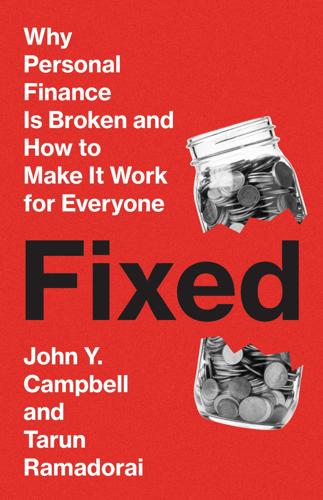
Fixed: Why Personal Finance is Broken and How to Make it Work for Everyone
by
John Y. Campbell
and
Tarun Ramadorai
Published 25 Jul 2025
However, a large body of research on the “privacy paradox” shows that consumers frequently state a strong desire for privacy protection while continuing to engage in privacy-compromising actions that run counter to this desire. This behavior reflects the usual difficulty of sticking to carefully contemplated principles when faced with immediate temptation.13 The painful consequences of the privacy paradox are perhaps best exemplified by the Chinese peer-to-peer lending market, where some firms offer borrowers immediate loans if they provide access up-front to their most frequently dialed contacts. The threat of public shaming of defaulting borrowers keeps delinquency rates extraordinarily low, but one can only imagine the human costs incurred when opting into these contractual relationships.14 A third problem is that fintech can outrun the regulation that has evolved to limit abuses in traditional finance.
…
Vishny, “Law and finance,” Journal of Political Economy 106 (1998): 1113–1155. This is one of the most cited papers in all of modern economics. For a contrasting view, that financial innovation can compensate for weak legal protection of investors, see Philip T. Hoffman, Gilles Postel-Vinay, and Jean-Laurent Rosenthal, Dark Matter Credit: The Development of Peer-to-Peer Lending and Banking in France (Princeton University Press, 2019). 3. Marco Pagano and Tullio Jappelli, “Information sharing in credit markets,” Journal of Finance 48 (1993): 1693–1718, present theoretical arguments and cross-country historical evidence that the creation of credit registries can kick off a virtuous cycle of information sharing and increases in lending activity. 4.
…
See also debt; loans Boston Globe (newspaper), 106 Brandeis, Louis, 314–315n16 bundling: financial products, 62–64, 224; insurance, 148 buy-now-pay-later (BNPL) credit, 182–183; encouraging impulse buying, 185–186; excluding from financial starter kit, 244; use in the United Kingdom, 301n4 Caines, Renata, 3, 262–263 Cajee brothers, 191 Calvet, Laurent, 22 Campbell, John, 145, 197, 270n1, 275n14, 284–285n5 CAPE ratio, 135, 135, 293n20 capital, pooling in financial markets, 74–75 capital income, taxes on, 156–157 capitalism, financial system perverting, 55–56 capping/caps: interest rates, 218; loan-to-value ratio of mortgages, 248–249; overdraft fees, 225; size of starter-kit loans, 243; transaction fees, 217–218, 225 car insurance, 251 Carnegie, Andrew, 293n14 cash: downside of keeping large amounts of, 70; keeping, 69–70 catastrophe insurance, 252–253 celebrity endorsement, regulation of, 227 Center for Retirement Research, 161, 162 central planning system, 9 checking accounts, 237–238, 241 China: income inequality in, 16; peer-to-peer lending market in, 187 chip-and-pin ID card, 201 choice architecture of finance, 269–270n37 chonsei, 64–65 Christmas clubs, 281n21 Church of England, 145 Clark, Brandy, 292n9 climate change: catastrophe insurance and, 252–253; effect on agricultural income, 83 Coinbase, 192 CoinDesk, 303n23 collateral, ease of obtaining loan and, 27 colleges.
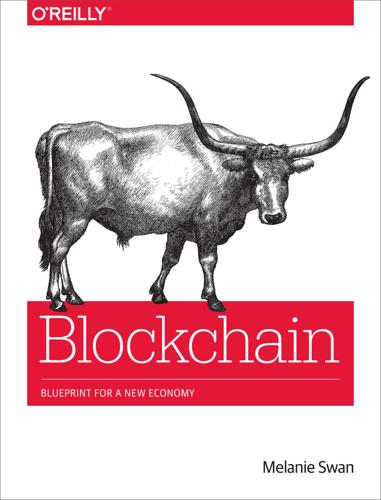
Blockchain: Blueprint for a New Economy
by
Melanie Swan
Published 22 Jan 2014
Bitcoin exchange Kraken has partnered with a bank to provide regulated financial services involving Bitcoin.39 There is a clear need for an analog to and innovation around traditional financial products and services for Bitcoin—for example, Bitcoin savings accounts and lending (perhaps through user-selected rules regarding fractional reserve levels). BTCjam is an example of such decentralized blockchain-based peer-to-peer lending. Tera Exchange launched the first US-regulated Bitcoin swaps exchange, which could make it possible for institutional and individual investors to buy Bitcoin contracts directly through its online trading platforms. Part of the offering includes an institutional Bitcoin price index, the Tera Bitcoin Price Index, to be used as the benchmark for trading USD/XBT contracts.40 In the same space, startup Vaurum is building an API for financial institutions to offer traditional brokerage investors and bank customers access to Bitcoin.
…
-M2M/IoT Bitcoin Payment Network to Enable the Machine Economy and consensus models, Blockchain AI: Consensus as the Mechanism to Foster “Friendly” AI-Blockchain Consensus Increases the Information Resolution of the Universe extensibility of, Extensibility of Blockchain Technology Concepts for facilitating big data predictive task automation, Blockchain Layer Could Facilitate Big Data’s Predictive Task Automation future applications, Blockchain AI: Consensus as the Mechanism to Foster “Friendly” AI-Blockchain Consensus Increases the Information Resolution of the Universe limitations of (see limitations) organizational capabilities, Blockchain Technology Is a New and Highly Effective Model for Organizing Activity tracking capabilities, Fundamental Economic Principles: Discovery, Value Attribution, and Exchange-Fundamental Economic Principles: Discovery, Value Attribution, and Exchange blockchain-recorded marriage, Decentralized Governance Services BlockCypher, Blockchain Development Platforms and APIs BOINC, DAOs and DACs bond deposit postings, Technical Challenges Brin, David, Freedom of Speech/Anti-Censorship Applications: Alexandria and Ostel BTCjam, Financial Services business model challenges, Business Model Challenges Buttercoin, Financial Services Byrne, Patrick, Financial Services C Campus Cryptocurrency Network, Campuscoin Campuscoin, Campuscoin-Campuscoin censorship, Internet (see decentralized DNS system) Chain, Blockchain Development Platforms and APIs challenges (see see limitations) charity donations, Charity Donations and the Blockchain—Sean’s Outpost China, Relation to Fiat Currency ChromaWallet, Wallet Development Projects Chronobit, Virtual Notary, Bitnotar, and Chronobit Circle Internet Financial, eWallet Services and Personal Cryptosecurity Codius, Financial Services coin drops, Coin Drops as a Strategy for Public Adoption coin mixing, eWallet Services and Personal Cryptosecurity coin, defining, Terminology and Concepts, Currency, Token, Tokenizing Coinapult, Global Public Health: Bitcoin for Contagious Disease Relief Coinapult LOCKS, Relation to Fiat Currency Coinbase, Merchant Acceptance of Bitcoin, Financial Services CoinBeyond, Merchant Acceptance of Bitcoin Coinffeine, Financial Services Coinify, Merchant Acceptance of Bitcoin Coinprism, Wallet Development Projects Coinspace, Crowdfunding CoinSpark, Wallet Development Projects colored coins, Smart Property, Blockchain 2.0 Protocol Projects community supercomputing, Community Supercomputing Communitycoin, Currency, Token, Tokenizing-Communitycoin: Hayek’s Private Currencies Vie for Attention complementary currency systems, Demurrage Currencies: Potentially Incitory and Redistributable concepts, redefining, Terminology and Concepts-Terminology and Concepts consensus models, Blockchain AI: Consensus as the Mechanism to Foster “Friendly” AI-Blockchain Consensus Increases the Information Resolution of the Universe consensus-derived information, Blockchain Consensus Increases the Information Resolution of the Universe contagious disease relief, Global Public Health: Bitcoin for Contagious Disease Relief contracts, Blockchain 2.0: Contracts-The Blockchain as a Path to Artificial Intelligence (see also smart contracts) crowdfunding, Crowdfunding-Crowdfunding financial services, Financial Services-Financial Services marriage, Decentralized Governance Services prediction markets, Bitcoin Prediction Markets smart property, Smart Property-Smart Property wallet development projects, Wallet Development Projects copyright protection, Monegraph: Online Graphics Protection Counterparty, Blockchain 2.0 Protocol Projects, Counterparty Re-creates Ethereum’s Smart Contract Platform Counterparty currency (XCP), Currency, Token, Tokenizing Counterwallet, Wallet Development Projects crowdfunding, Crowdfunding-Crowdfunding cryptocurrencies benefits of, Currency, Token, Tokenizing cryptosecurity, eWallet Services and Personal Cryptosecurity eWallet services, eWallet Services and Personal Cryptosecurity mechanics of, How a Cryptocurrency Works-Merchant Acceptance of Bitcoin merchant acceptance, Merchant Acceptance of Bitcoin cryptosecurity challenges, eWallet Services and Personal Cryptosecurity cryptowallet, Blockchain Neutrality currency, Technology Stack: Blockchain, Protocol, Currency-Regulatory Status, Currency, Token, Tokenizing-Extensibility of Demurrage Concept and Features Campuscoin, Campuscoin-Campuscoin coin drops, Coin Drops as a Strategy for Public Adoption Communitycoin, Communitycoin: Hayek’s Private Currencies Vie for Attention-Communitycoin: Hayek’s Private Currencies Vie for Attention cryptocurrencies, How a Cryptocurrency Works-Merchant Acceptance of Bitcoin decentralizing, Communitycoin: Hayek’s Private Currencies Vie for Attention defining, Currency, Token, Tokenizing-Currency, Token, Tokenizing, Currency: New Meanings demurrage, Demurrage Currencies: Potentially Incitory and Redistributable-Extensibility of Demurrage Concept and Features double-spend problem, The Double-Spend and Byzantine Generals’ Computing Problems fiat currency, Relation to Fiat Currency-Relation to Fiat Currency monetary and nonmonetary, Currency Multiplicity: Monetary and Nonmonetary Currencies-Currency Multiplicity: Monetary and Nonmonetary Currencies new meanings, Currency: New Meanings technology stack, Technology Stack: Blockchain, Protocol, Currency-Technology Stack: Blockchain, Protocol, Currency currency mulitplicity, Currency Multiplicity: Monetary and Nonmonetary Currencies-Currency Multiplicity: Monetary and Nonmonetary Currencies D DAOs, DAOs and DACs-DAOs and DACs DAOs/DACs, DAOs and DACs-DAOs and DACs, Batched Notary Chains as a Class of Blockchain Infrastructure, Blockchain Government Dapps, Dapps-Dapps, Extensibility of Demurrage Concept and Features Dark Coin, eWallet Services and Personal Cryptosecurity dark pools, Technical Challenges Dark Wallet, eWallet Services and Personal Cryptosecurity DASs, DASs and Self-Bootstrapped Organizations DDP, Crowdfunding decentralization, Smart Contracts, Centralization-Decentralization Tension and Equilibrium decentralized applications (Dapps), Dapps-Dapps decentralized autonomous organization/corporation (DAO) (see DAOs/DACs) decentralized autonomous societies (DASs), DASs and Self-Bootstrapped Organizations decentralized autonomy, eWallet Services and Personal Cryptosecurity decentralized DNS, Namecoin: Decentralized Domain Name System-Decentralized DNS Functionality Beyond Free Speech: Digital Identity challenges of, Challenges and Other Decentralized DNS Services and digital identity, Decentralized DNS Functionality Beyond Free Speech: Digital Identity-Decentralized DNS Functionality Beyond Free Speech: Digital Identity DotP2P, Challenges and Other Decentralized DNS Services decentralized file storage, Blockchain Ecosystem: Decentralized Storage, Communication, and Computation decentralized secure file serving, Blockchain Ecosystem: Decentralized Storage, Communication, and Computation deeds, Decentralized Governance Services demurrage currencies, Demurrage Currencies: Potentially Incitory and Redistributable-Extensibility of Demurrage Concept and Features action-incitory features, Extensibility of Demurrage Concept and Features limitations of, Demurrage Currencies: Potentially Incitory and Redistributable digital art, Digital Art: Blockchain Attestation Services (Notary, Intellectual Property Protection)-Personal Thinking Blockchains (see also blockchain attestation services) hashing and timestamping, Hashing Plus Timestamping-Limitations online graphics protection, Monegraph: Online Graphics Protection digital cryptography, Ethereum: Turing-Complete Virtual Machine, Public/Private-Key Cryptography 101 digital divide, defining, Digital Divide of Bitcoin digital identity verification, Blockchain 2.0: Contracts, Smart Property, Wallet Development Projects, Digital Identity Verification-Digital Divide of Bitcoin, Limitations, Decentralized Governance Services, Liquid Democracy and Random-Sample Elections, Blockchain Learning: Bitcoin MOOCs and Smart Contract Literacy, Privacy Challenges for Personal Records dispute resolution, PrecedentCoin: Blockchain Dispute Resolution DIYweathermodeling, Community Supercomputing DNAnexus, Genomecoin, GenomicResearchcoin Dogecoin, Technology Stack: Blockchain, Protocol, Currency, Currency Multiplicity: Monetary and Nonmonetary Currencies, Scandals and Public Perception DotP2P, Challenges and Other Decentralized DNS Services double-spend problem, The Double-Spend and Byzantine Generals’ Computing Problems DriveShare, DAOs and DACs dynamic redistribution of currency (see demurrage currency) E education (see learning and literacy) Electronic Freedom Foundation (EFF), Distributed Censorship-Resistant Organizational Models EMR (electronic medical record) system, EMRs on the Blockchain: Personal Health Record Storage Ethereum, Crowdfunding, Blockchain 2.0 Protocol Projects, Blockchain Ecosystem: Decentralized Storage, Communication, and Computation, Ethereum: Turing-Complete Virtual Machine-Counterparty Re-creates Ethereum’s Smart Contract Platform eWallet services, eWallet Services and Personal Cryptosecurity ExperimentalResultscoin, Blockchain Academic Publishing: Journalcoin F Fairlay, Bitcoin Prediction Markets fiat currency, Relation to Fiat Currency-Relation to Fiat Currency file serving, Blockchain Ecosystem: Decentralized Storage, Communication, and Computation, Ethereum: Turing-Complete Virtual Machine file storage, Blockchain Ecosystem: Decentralized Storage, Communication, and Computation financial services, Regulatory Status, Financial Services-Financial Services, Blockchain Technology Is a New and Highly Effective Model for Organizing Activity, Government Regulation Fitbit, Personal Thinking Blockchains, Blockchain Health Research Commons, Extensibility of Demurrage Concept and Features Florincoin, Freedom of Speech/Anti-Censorship Applications: Alexandria and Ostel Folding@Home, DAOs and DACs, Blockchain Science: Gridcoin, Foldingcoin, Community Supercomputing franculates, Blockchain Government freedom of speech, Namecoin: Decentralized Domain Name System, Freedom of Speech/Anti-Censorship Applications: Alexandria and Ostel (see also decentralized DNS system) Freicoin, Demurrage Currencies: Potentially Incitory and Redistributable fundraising (see crowdfunding) futarchy, Futarchy: Two-Step Democracy with Voting + Prediction Markets-Futarchy: Two-Step Democracy with Voting + Prediction Markets G GBIcoin, Demurrage Currencies: Potentially Incitory and Redistributable GBIs (Guaranteed Basic Income initiatives), Demurrage Currencies: Potentially Incitory and Redistributable Gems, Blockchain Development Platforms and APIs, Dapps Genecoin, Blockchain Genomics Genomecoin, Genomecoin, GenomicResearchcoin Genomic Data Commons, Genomecoin, GenomicResearchcoin genomic sequencing, Blockchain Genomics 2.0: Industrialized All-Human-Scale Sequencing Solution-Genomecoin, GenomicResearchcoin GenomicResearchcoin, Genomecoin, GenomicResearchcoin genomics, consumer, Blockchain Genomics-Genomecoin, GenomicResearchcoin Git, Blockchain Ecosystem: Decentralized Storage, Communication, and Computation GitHub, Blockchain Academic Publishing: Journalcoin, Currency Multiplicity: Monetary and Nonmonetary Currencies global public health, Global Public Health: Bitcoin for Contagious Disease Relief GoCoin, Financial Services GoToLunchcoin, Terminology and Concepts governance, Blockchain Government-Societal Maturity Impact of Blockchain Governance decentralized services, Decentralized Governance Services-Decentralized Governance Services dispute resolution, PrecedentCoin: Blockchain Dispute Resolution futarchy, Futarchy: Two-Step Democracy with Voting + Prediction Markets-Futarchy: Two-Step Democracy with Voting + Prediction Markets Liquid Democracy system, Liquid Democracy and Random-Sample Elections-Liquid Democracy and Random-Sample Elections personalized governance services, Blockchain Government random-sample elections, Random-Sample Elections societal maturity impact of blockchain governance, Societal Maturity Impact of Blockchain Governance government regulation, Regulatory Status, Government Regulation-Government Regulation Gridcoin, Blockchain Science: Gridcoin, Foldingcoin-Blockchain Science: Gridcoin, Foldingcoin H hashing, Hashing Plus Timestamping-Limitations, Batched Notary Chains as a Class of Blockchain Infrastructure, Technical Challenges Hayek, Friedrich, Communitycoin: Hayek’s Private Currencies Vie for Attention, Demurrage Currencies: Potentially Incitory and Redistributable, Conclusion, The Blockchain Is an Information Technology health, Blockchain Health-Virus Bank, Seed Vault Backup as demurrage currency, Extensibility of Demurrage Concept and Features doctor vendor RFP services, Doctor Vendor RFP Services and Assurance Contracts health notary services, Blockchain Health Notary health research commons , Blockchain Health Research Commons health spending, Healthcoin healthcare decision making and advocacy, Liquid Democracy and Random-Sample Elections personal health record storage, EMRs on the Blockchain: Personal Health Record Storage virus bank and seed vault backup, Virus Bank, Seed Vault Backup Healthcoin, Healthcoin, Demurrage Currencies: Potentially Incitory and Redistributable I identity authentication, eWallet Services and Personal Cryptosecurity, Blockchain 2.0: Contracts, Smart Property, Smart Property, Wallet Development Projects, Digital Identity Verification-Digital Divide of Bitcoin, Limitations, Decentralized Governance Services, Liquid Democracy and Random-Sample Elections, Blockchain Learning: Bitcoin MOOCs and Smart Contract Literacy, Privacy Challenges for Personal Records Indiegogo, Crowdfunding, Dapps industry scandals, Scandals and Public Perception infrastructure needs and issues, Technical Challenges inheritance gifts, Smart Contracts intellectual property, Monegraph: Online Graphics Protection (see also digital art) Internet administration, Distributed Censorship-Resistant Organizational Models Internet Archive, Blockchain Ecosystem: Decentralized Storage, Communication, and Computation, Personal Thinking Blockchains Internet censorship prevention (see Decentralized DNS system) Intuit Quickbooks, Merchant Acceptance of Bitcoin IP protection, Hashing Plus Timestamping IPFS project, Blockchain Ecosystem: Decentralized Storage, Communication, and Computation J Johnston, David, Blockchain Technology Could Be Used in the Administration of All Quanta Journalcoin, Blockchain Academic Publishing: Journalcoin Judobaby, Crowdfunding justice applications for censorship-resistant organizational models, Distributed Censorship-Resistant Organizational Models-Distributed Censorship-Resistant Organizational Models digital art, Digital Art: Blockchain Attestation Services (Notary, Intellectual Property Protection)-Personal Thinking Blockchains (see also digital art, blockchain attestation services) digital identity verification, Blockchain 2.0: Contracts, Smart Property, Wallet Development Projects, Digital Identity Verification-Digital Divide of Bitcoin, Limitations, Decentralized Governance Services, Liquid Democracy and Random-Sample Elections, Blockchain Learning: Bitcoin MOOCs and Smart Contract Literacy, Privacy Challenges for Personal Records freedom of speech/anti-censorship, Freedom of Speech/Anti-Censorship Applications: Alexandria and Ostel governance, Blockchain Government-Societal Maturity Impact of Blockchain Governance (see also governance) Namecoin, Namecoin: Decentralized Domain Name System-Decentralized DNS Functionality Beyond Free Speech: Digital Identity, Monegraph: Online Graphics Protection (see also decentralized DNS) K Kickstarter, Crowdfunding, Community Supercomputing Kipochi, Blockchain Neutrality, Global Public Health: Bitcoin for Contagious Disease Relief, Blockchain Learning: Bitcoin MOOCs and Smart Contract Literacy Koinify, Crowdfunding, Dapps Kraken, Financial Services L latency, Blockchain 2.0 Protocol Projects, Technical Challenges, Technical Challenges, Scandals and Public Perception LaZooz, Dapps, Campuscoin, Extensibility of Demurrage Concept and Features Learncoin, Learncoin learning and literacy, Blockchain Learning: Bitcoin MOOCs and Smart Contract Literacy-Learning Contract Exchanges learning contract exchanges, Learning Contract Exchanges Ledra Capital, Blockchain 2.0: Contracts, Ledra Capital Mega Master Blockchain List legal implications crowdfunding, Crowdfunding smart contracts, Smart Contracts lending, trustless, Smart Property Lighthouse, Crowdfunding limitations, Limitations-Overall: Decentralization Trends Likely to Persist business model challenges, Business Model Challenges government regulation, Government Regulation-Government Regulation personal records privacy challenges, Privacy Challenges for Personal Records scandals and public perception, Scandals and Public Perception-Scandals and Public Perception technical challenges, Technical Challenges-Technical Challenges Liquid Democracy system, Liquid Democracy and Random-Sample Elections-Liquid Democracy and Random-Sample Elections Litecoin, Technology Stack: Blockchain, Protocol, Currency, Technology Stack: Blockchain, Protocol, Currency, Freedom of Speech/Anti-Censorship Applications: Alexandria and Ostel, Currency Multiplicity: Monetary and Nonmonetary Currencies, Technical Challenges literacy (see learning and literacy) LTBcoin, Wallet Development Projects, Currency, Token, Tokenizing M M2M/IoT infrastructure, M2M/IoT Bitcoin Payment Network to Enable the Machine Economy, Blockchain Development Platforms and APIs, Blockchain Academic Publishing: Journalcoin-The Blockchain Is Not for Every Situation, The Blockchain Is an Information Technology Maidsafe, Blockchain Ecosystem: Decentralized Storage, Communication, and Computation, Technical Challenges Manna, Crowdfunding marriage, blockchain recorded, Decentralized Governance Services Mastercoin, Blockchain 2.0 Protocol Projects mechanics of cryptocurrencies, How a Cryptocurrency Works Medici, Financial Services mega master blockchain list, Ledra Capital Mega Master Blockchain List-Ledra Capital Mega Master Blockchain List Melotic, Crowdfunding, Wallet Development Projects merchant acceptance, Merchant Acceptance of Bitcoin merchant payment fees, Summary: Blockchain 1.0 in Practical Use messaging, Ethereum: Turing-Complete Virtual Machine, Dapps, Challenges and Other Decentralized DNS Services, Technical Challenges MetaDisk, DAOs and DACs mindfiles, Personal Thinking Blockchains MIT Bitcoin Project, Campuscoin Monegraph, Monegraph: Online Graphics Protection money (see currency) MOOCs (massive open online courses), Blockchain Learning: Bitcoin MOOCs and Smart Contract Literacy Moroz, Tatiana, Communitycoin: Hayek’s Private Currencies Vie for Attention multicurrency systems, Demurrage Currencies: Potentially Incitory and Redistributable N Nakamoto, Satoshi, Blockchain 2.0: Contracts, Blockchain 2.0: Contracts Namecoin, Namecoin: Decentralized Domain Name System-Decentralized DNS Functionality Beyond Free Speech: Digital Identity, Monegraph: Online Graphics Protection Nationcoin, Coin Drops as a Strategy for Public Adoption, Demurrage Currencies: Potentially Incitory and Redistributable notary chains, Batched Notary Chains as a Class of Blockchain Infrastructure notary services, Hashing Plus Timestamping, Blockchain Health Notary NSA surveillance, Freedom of Speech/Anti-Censorship Applications: Alexandria and Ostel NXT, Technology Stack: Blockchain, Protocol, Currency, Blockchain 2.0 Protocol Projects O offline wallets, Technical Challenges OneName, Digital Identity Verification-Digital Identity Verification OneWallet, Wallet Development Projects online graphics protection, Monegraph: Online Graphics Protection-Monegraph: Online Graphics Protection Open Assets, Blockchain 2.0 Protocol Projects Open Transactions, Blockchain 2.0 Protocol Projects OpenBazaar, Dapps, Government Regulation Ostel, Freedom of Speech/Anti-Censorship Applications: Alexandria and Ostel P passports, Decentralized Governance Services PayPal, The Double-Spend and Byzantine Generals’ Computing Problems, Financial Services, Distributed Censorship-Resistant Organizational Models peer-to-peer lending, Financial Services Peercoin, Technology Stack: Blockchain, Protocol, Currency personal cryptosecurity, eWallet Services and Personal Cryptosecurity personal data rights, Blockchain Genomics personal mindfile blockchains, Personal Thinking Blockchains personal thinking chains, Personal Thinking Blockchains-Personal Thinking Blockchains physical asset keys, Blockchain 2.0: Contracts, Smart Property plagiarism detection/avoidance, Blockchain Academic Publishing: Journalcoin Precedent, PrecedentCoin: Blockchain Dispute Resolution, Terminology and Concepts prediction markets, Bitcoin Prediction Markets, DASs and Self-Bootstrapped Organizations, Decentralized Governance Services, Futarchy: Two-Step Democracy with Voting + Prediction Markets-Futarchy: Two-Step Democracy with Voting + Prediction Markets Predictious, Bitcoin Prediction Markets predictive task automation, Blockchain Layer Could Facilitate Big Data’s Predictive Task Automation privacy challenges, Privacy Challenges for Personal Records private key, eWallet Services and Personal Cryptosecurity Proof of Existence, Proof of Existence-Proof of Existence proof of stake, Blockchain 2.0 Protocol Projects, PrecedentCoin: Blockchain Dispute Resolution, Technical Challenges proof of work, PrecedentCoin: Blockchain Dispute Resolution, Technical Challenges-Technical Challenges property ownership, Smart Property property registration, Decentralized Governance Services public documents registries, Decentralized Governance Services public health, Blockchain Ecosystem: Decentralized Storage, Communication, and Computation, Global Public Health: Bitcoin for Contagious Disease Relief public perception, Scandals and Public Perception-Scandals and Public Perception public/private key cryptography, Public/Private-Key Cryptography 101-Public/Private-Key Cryptography 101 publishing, academic, Blockchain Academic Publishing: Journalcoin-Blockchain Academic Publishing: Journalcoin pull technology, eWallet Services and Personal Cryptosecurity push technology, eWallet Services and Personal Cryptosecurity R random-sample elections, Random-Sample Elections Realcoin, Relation to Fiat Currency redistribution of currency (see demurrage currency) regulation, Government Regulation-Government Regulation regulatory status, Regulatory Status reputation vouching, Ethereum: Turing-Complete Virtual Machine Researchcoin, Blockchain Academic Publishing: Journalcoin REST APIs, Technical Challenges Ripple, Technology Stack: Blockchain, Protocol, Currency, Relation to Fiat Currency, Blockchain 2.0 Protocol Projects Ripple Labs, Financial Services Roadcoin, Blockchain Government S Saldo.mx, Blockchain Neutrality scandals, Scandals and Public Perception science, Blockchain Science: Gridcoin, Foldingcoin-Charity Donations and the Blockchain—Sean’s Outpost community supercomputing, Community Supercomputing global public health, Global Public Health: Bitcoin for Contagious Disease Relief Sean's Outpost, Charity Donations and the Blockchain—Sean’s Outpost secret messaging, Ethereum: Turing-Complete Virtual Machine security issues, Technical Challenges self-bootstrapped organizations, DASs and Self-Bootstrapped Organizations self-directing assets, Automatic Markets and Tradenets self-enforced code, Smart Property self-sufficiency, Smart Contracts SETI@home, Blockchain Science: Gridcoin, Foldingcoin, Community Supercomputing size and bandwidth, Technical Challenges smart contracts, Smart Contracts-Smart Contracts, Smart Contract Advocates on Behalf of Digital Intelligence automatic markets and tradenets, Automatic Markets and Tradenets Counterparty, Counterparty Re-creates Ethereum’s Smart Contract Platform DAOs/DACs, DAOs and DACs-DAOs and DACs Dapps, Dapps-Dapps DASs, DASs and Self-Bootstrapped Organizations Ethereum, Ethereum: Turing-Complete Virtual Machine increasingly autonomous, Dapps, DAOs, DACs, and DASs: Increasingly Autonomous Smart Contracts-Automatic Markets and Tradenets smart literacy contracts, Blockchain Learning: Bitcoin MOOCs and Smart Contract Literacy-Learning Contract Exchanges smart property, Smart Property-Smart Property, Monegraph: Online Graphics Protection smartwatch, Extensibility of Demurrage Concept and Features Snowden, Edward, Distributed Censorship-Resistant Organizational Models social contracts, Smart Contracts social network currencies, Currency Multiplicity: Monetary and Nonmonetary Currencies Stellar, Blockchain Development Platforms and APIs stock market, Financial Services Storj, Blockchain Ecosystem: Decentralized Storage, Communication, and Computation, Dapps, Technical Challenges Stripe, Blockchain Development Platforms and APIs supercomputing, Community Supercomputing Svalbard Global Seed Vault, Virus Bank, Seed Vault Backup Swancoin, Smart Property swaps exchange, Financial Services Swarm, Crowdfunding, Dapps Swarm (Ethereum), Ethereum: Turing-Complete Virtual Machine Swarmops, Crowdfunding T Tatianacoin, Communitycoin: Hayek’s Private Currencies Vie for Attention technical challenges, Technical Challenges-Technical Challenges Tendermint, Technical Challenges Tera Exchange, Financial Services terminology, Terminology and Concepts-Terminology and Concepts 37Coins, Global Public Health: Bitcoin for Contagious Disease Relief throughput, Technical Challenges timestamping, Hashing Plus Timestamping-Limitations titling, Decentralized Governance Services tradenets, Automatic Markets and Tradenets transaction fees, Summary: Blockchain 1.0 in Practical Use Tribecoin, Coin Drops as a Strategy for Public Adoption trustless lending, Smart Property Truthcoin, Futarchy: Two-Step Democracy with Voting + Prediction Markets Turing completeness, Ethereum: Turing-Complete Virtual Machine Twister, Dapps Twitter, Monegraph: Online Graphics Protection U Uber, Government Regulation unbanked/underbanked markets, Blockchain Neutrality usability issues, Technical Challenges V value chain composition, How a Cryptocurrency Works versioning issues, Technical Challenges Virtual Notary, Virtual Notary, Bitnotar, and Chronobit voting and prediction, Futarchy: Two-Step Democracy with Voting + Prediction Markets-Futarchy: Two-Step Democracy with Voting + Prediction Markets W wallet APIs, Blockchain Development Platforms and APIs wallet companies, Wallet Development Projects wallet software, How a Cryptocurrency Works wasted resources, Technical Challenges Wayback Machine, Blockchain Ecosystem: Decentralized Storage, Communication, and Computation Wedbush Securities, Financial Services Whatevercoin, Terminology and Concepts WikiLeaks, Distributed Censorship-Resistant Organizational Models Wikinomics, Community Supercomputing World Citizen project, Decentralized Governance Services X Xapo, eWallet Services and Personal Cryptosecurity Z Zennet Supercomputer, Community Supercomputing Zooko's Triangle, Decentralized DNS Functionality Beyond Free Speech: Digital Identity About the Author Melanie Swan is the Founder of the Institute for Blockchain Studies and a Contemporary Philosophy MA candidate at Kingston University London and Université Paris VIII.
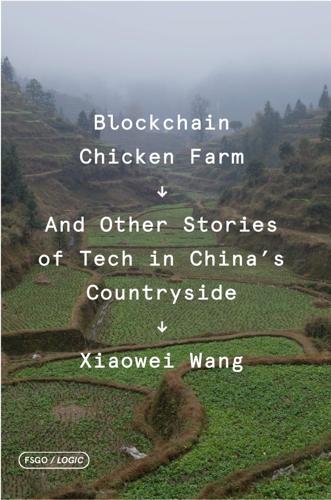
Blockchain Chicken Farm: And Other Stories of Tech in China's Countryside
by
Xiaowei Wang
Published 12 Oct 2020
If embracing failure is the prerequisite for innovation, who has the privilege of failing? In Mao’s ill-guided experiment in the Great Leap Forward, failure meant famine and death. For students in contemporary rural China, failure means the difference between a life of difficult manual labor, and a vague shot at being able to escape poverty. As China’s P2P (peer-to-peer) lending scandals unfold, they show that investing and failure are markedly different when it’s a VC firm taking the risk versus a seventy-year-old retiree. And for investment firms, failure can still be lucrative. Failure in the land of contemporary VC-driven innovation seems like a cocktail hour, albeit a grueling one.
…
A lawyer I talk to, who has worked at places like the China Food and Drug Administration, points to very public, visible platform safety incidents that indicate regulation will happen. He gives examples: people getting sick from food purchased off Taobao, rural citizens getting scammed into bankruptcy by peer-to-peer lending platforms, and the Didi Chuxing incident in 2018, where a driver raped and killed a passenger. The public outcry in response to these incidents led swiftly to immediate changes to the platform. The government is happy to intervene, even in an age where it has been more and more open to letting private companies act first, and regulating only later. 8.
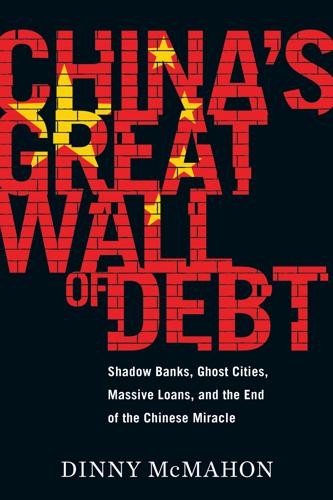
China's Great Wall of Debt: Shadow Banks, Ghost Cities, Massive Loans, and the End of the Chinese Miracle
by
Dinny McMahon
Published 13 Mar 2018
Outside, on the other side of the glass wall that separated Liu from the open-plan office, were rows of similarly young employees hard at work or milling around, chatting, or taking a break to shoot zombies and race motorcycles on the arcade-style games down the corridor. Liu had launched Yooli, a peer-to-peer lending platform (P2P), three years earlier, in April 2012. P2P uses the Internet to link people who need a loan directly with people willing to lend them money. Rather than go to a bank, a small firm can borrow what it needs from dozens or even hundreds of ordinary people, who can each contribute as much or as little as they like.
…
See credit Li Chuncheng, 65 Li Keqiang, 9–10, 60–61, 149 letter to, 13 on pens, 178 on urbanization, 64–65, 66 on zombie companies, 36 Li Peng, 63 Li Tie, 66, 69 Li Yaoqiang, 153 Liang Shulin, 74–76, 80–83, 91–93 Liao Xiaojun, 70 Liaoning Province, 21–24, 49–51, 127 Liu Jianfeng, 117–21, 124, 128–30, 134 Liu Shiwei, 33, 45 Liu Xiaobo, xvii Liu Yannan, 98–100, 103–5, 106 loans to developing countries, xi fraud investigation, 138–39 mortgages, 90 nonperforming, 8–9, 29, 37 private companies, 72 reissuance of, 35 from savings, 123 standards, 70–71 WMPs, 105–6 See also bad loans; credit local authorities agendas of, 64 land expropriations, 76–77, 79 power of, 20–21 reform of, 177 local-government financing vehicles (LGFVs), 71 Lou Jiwei, xix, 172, 173, 175, 209 Luoyang, 2, 5, 17, 58–59 M Mao Zedong, x, 118 Masood Textile Mills, 138–40 McKinsey (consulting firm), 31, 52, 53, 94 McMahon, Dinny background, xii-xiii housing, in Beijing, 85–86 as student, 200 media accountability, lack of, 18–21 censoring of, 202–3 credibility of statistics, 9–11 on debt, 24 Under the Dome (documentary), 157 government influence over, 137 investment protests, 112–13 market influence, 12 propaganda department, 26 silver mining industry, 1–6 Merkel, Angela, xvii metals, global demand for, 194 middle class housing demands, 84–86 imported goods, 195–97 “off the books” income, 162–63 political rights, 206 purchasing power, 198 middle-income trap, 172–73, 188 migrant workers, 60, 62, 85–86, 87, 89 migration, 52 milk industry, 186–87, 204 Million Dollar Mill, 166, 167 monetary expansion, 122–23, 125 money supply, expansion of, 121–23 monopoly, salt, 144–47, 151–54, 157–61 “mortgage slave,” 90 mortgages, 90 mountains, leveling, 40–42 Moutai, 117–21, 129 N National Development and Reform Commission (NDRC), 40 Nazir, Shahid, 138 “the New Normal,” 211–12 Night of the Living Dead (Romero), 35 Nixon, Richard, 118 Norway, xvii O Olympic Forest Park, 55 “one thousand cities, one face,” 54 one-child policy, 148, 171 optimism, of Chinese, 196, 199–200 overcapacity, 43–44, 184–85, 186, 189–90 P paper industry, 184 Paraburdoo (Australian mining town), ix-x Paris, development of, 78 patents, 181–82 Pearl of the North, 125–28, 134–35 peer-to-peer lending platform (P2P), 99–100, 103–4 pen manufacturing, 178–80 People’s Bank of China, xiv, 109, 122–23, 135 personal shoppers, 206 PetroChina, 150–51 philosophy, 8–9 accounting, 103 faith in investments, 111–12, 113–14, 136–37 rules, relationship to, 23–24, 103, 109 Pilbara, ix, x-xi police.

The Zero Marginal Cost Society: The Internet of Things, the Collaborative Commons, and the Eclipse of Capitalism
by
Jeremy Rifkin
Published 31 Mar 2014
Chapter 14 1. Matthew Ericson, Elaine He, and Amy Schoenfeld, “Tracking the $700 Billion Bailout,” New York Times, June 19, 2009, http://www.nytimes.com/packages/html/national/200904 _CREDITCRISIS/recipients.html (accessed March 29, 2013). 2. “Peer-to-Peer Lending: How Zopa Works,” Zopa, http://uk.zopa.com/about-zopa/peer-to-peer -lending (accessed June 11, 2013). 3. David Bornstein, “Crowdfunding Clean Energy,” New York Times, March 6, 2013, http:// opinionator.blogs.nytimes.com/2013/03/06/crowd-funding-clean-energy/ (accessed March 6, 2013). 4. “Amazon Payment Fees,” Amazon, http://www.kickstarter.com/help/amazon (accessed June 11, 2013); “What Is Kickstarter?”
…
The American public was enraged that $700 billion in tax revenue was handed over to banks, rewarding them for financial recklessness, while millions of Americans were losing their homes because they couldn’t pay off their mortgages. In other words, they were “too small to matter.”1 Peer-to-Peer Social Lending In the aftermath of the banking debacle, a new kind of lending institution emerged on the Internet. It’s called peer-to-peer lending or social lending. Online banking platforms like Zopa, Lending Club, and Prosper lend money directly to individuals and projects. These online financing mechanisms are becoming popular alternative lending vehicles to traditional banks because they eliminate the middlemen and the high fixed costs of large financial institutions that are passed on to lenders in the form of higher interest rates.
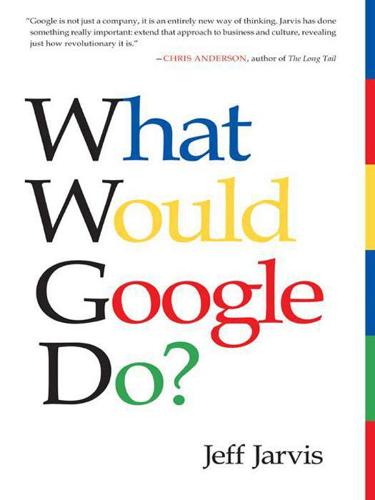
What Would Google Do?
by
Jeff Jarvis
Published 15 Feb 2009
Oh, well. The First Bank of Google: Markets minus middlemen Banking is the ultimate middleman business, pooling money and need and profiting on the connections. In small ways—as in small is the new big—the internet is already disintermediating the industry by making direct connections. Take peer-to-peer lending. At Prosper.com, as of 2008, 750,000 members had borrowed and lent more than $150 million in amounts as small as $50, supporting anything from launching new businesses to paying off college loans to getting out from under credit card debt. It’s wonderfully simple and magnificently human. You see the person and the story: “It has been my dream to open a Neapolitan Pizzeria ever since I moved to the United States 9 years ago.
…
See multiple-listing service “&”, 179 mobs, 106–8 Moore, Gordon, 133 Moore’s Law, 133 Motley Fool, 197 movies, 133–35 multiple-listing service (MLS), 75, 186 Murdoch, Rupert, 129 music industry, 110 Mutuelle Assurance Instituteur France (MAIF), 204, 208 MyStarbucksIdea.com, 60–62 National Association of Broadcasters, 167 “The Nature of the Firm” (Coase), 151 Netflix, 160 Netscape, 67 networks, 4 advertising agencies as, 151 on airlines, 183–85 insurance as, 206 joining, 27–32 open, 29–30 on platforms, 32–33 social, 231 specialization and, 154 universities and, 212–13 network theory, 28 “New Economics of Media” (Haque), 64 Newmark, Craig, 38–39, 47, 116–18 newness, 146 newspaper ads, 38–39, 125–26 craigslist v., 148 decline of, 76 newspapers, 3, 123–30 New York Angels, 193 New York Times, 41 API of, 127 free content and, 78 niches mass market v., 63–67 newspapers and, 129 Nike, 112 9/11, 24–25 Nisenholtz, Martin, 37 Nocera, Joe, 100 Nothing Sacred: The Truth About Judaism (Rushkoff), 226 NPR, 127 The Numerati (Baker), 159 Obama, Barack, 51, 220–21, 232 101 Wines Guaranteed to Inspire, Delight and Bring Thunder to Your World (Vaynerchuk), 157 OnStar, 177 Oodle.com, 39 openness, 236 Apple and, 227 ownership v., 4 PR and, 224 open-source, 59–63 Apple and, 227 automobile industry and, 174–75 Coelho and, 142–43 fashion, 180 religion and, 226 restaurants and, 154 Open-Source Judaism, 226 O’Reilly, Tim, 79 organization, elegant, 48–53 airlines and, 182 newspapers and, 129 Orkut, 50 Osnos, Peter, 140 Outside.in, 191 ownership, 4, 28 Owyang, Jeremiah, 172–73 Page, Larry, 85 on environment, 162–64 on evil, 99 Gore v., 217 on mistakes, 94 telecommunications and, 166 PageRank, 85 partnering, 22–23, 151 passion, 217 passivity, 116–18 patents, 224 Paterson, David, 96 PatientsLikeMe, 200 PayPal, 86, 197–98 Peapod, 179 peer-to-peer lending, 176–77 personal liberty, 238 personal political pages (PPPs), 219 Picasa, 33, 81, 193 piracy, as marketing, 141–42 platform(s), 32–36 craigslist as, 117–18 newspapers and, 126–27 Platial.com, 33–34 politics, 51, 217–21 trust and, 83 Pope, Ivan, 206 populism, 84–85 pornography, 225 PornTube, 225 portfolios, 214 post-scarcity economy, 57–59 Potts, Mark, 56 PowerPoint, 64 Poynter, Don, 137 PPPs.
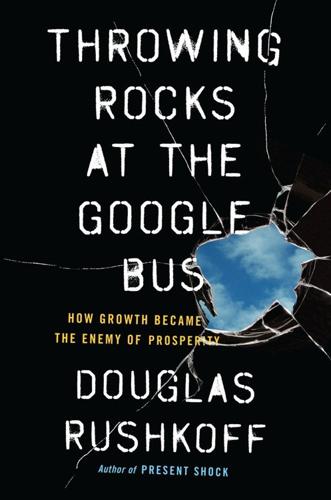
Throwing Rocks at the Google Bus: How Growth Became the Enemy of Prosperity
by
Douglas Rushkoff
Published 1 Mar 2016
We can continue to run this growth-driven, extractive, self-defeating program until one corporation is left standing and the impoverished revolt. Or we can seize the opportunity to reprogram our economy—and our businesses—from the inside out. In doing so, we can begin to benefit from new, more distributed modes of value creation and exchange—the sorts of wealth generation we see on trading sites, on peer-to-peer lending networks, on user-owned platforms, or even in the games and apps programmed by college kids on laptops and then brought directly to market. That’s the economy most of us early net users envisioned back in the 1980s when we first got our hands on these new tools. But by the early 1990s, this human-centered vision of a networked marketplace was replaced by another vision of digital business—the one espoused by the libertarian founders and early writers of Wired magazine and the corporate-sponsored futurists of Cambridge, Massachusetts, many of whom were the very same people.
…
These institutions enjoy the benefits of all that peer-to-peer psychology, earning a sense of loyalty usually owed only to other human beings. But slowly, as these sites’ human lenders become aware that they no longer have equal access to the best opportunities, they leave, disillusioned. The nascent peer-to-peer lending landscape is discredited before it even has a chance to propagate. The sweet spot in digital investment is for investors, lenders, and the enterprises in which they want to participate to be able to create value together without surrendering the human connection that elevates the success rate of peer-to-peer business solutions.

The Corruption of Capitalism: Why Rentiers Thrive and Work Does Not Pay
by
Guy Standing
Published 13 Jul 2016
The new types include payday lenders, such as the notorious Wonga, equity crowdfunding such as UK-based Crowdcube, and peer-to-peer online lending platforms, whereby investors put up money for lending and receive returns based on debt repayments. The platforms do the credit scoring and earn income from arrangement fees, not from the spread between lending and deposit rates as traditional lenders do. Peer-to-peer lending is still modest compared with retail banking, but by 2015 the biggest – Lending Club, Prosper and SoFi in the USA; Zopa and RateSetter in London – were lending at a rate of over $10 billion a year.24 In Britain, peer-to-peer investors can put over £15,000 a year into tax-free savings accounts, representing another nice subsidy for the affluent and profit for the platforms.
…
Scott 1 ‘follow-on’ patenting 1 Ford, Henry 1, 2 Ford Motor Company 1 foreign direct investment 1, 2 ‘forum shopping’ 1 fossil fuel industry 1 Foucault, Michel 1 Foxconn 1, 2 fracking 1, 2 Freelancer.com 1 Freelancers Union 1 ‘freelancing’ 1, 2, 3, 4, 5, 6, 7 Friedman, Milton 1, 2, 3, 4 Gates, Bill 1, 2 GATT (General Agreement on Tariffs and Trade) 1, 2 General Electric 1, 2 General Motors 1, 2 Getaround 1 Giddens, Anthony 1 Gigwalk 1 Gilded Age 1, 2 Gilead 1, 2 GiveDirectly 1 Global Transformation 1, 2, 3, 4, 5, 6, 7 Goldman Sachs 1, 2, 3, 4, 5 Goodwin, Fred 1 Google 1, 2, 3, 4, 5, 6 GPFG (Government Pension Fund Global, Norway) 1, 2 Gramsci, Antonio 1 Great Convergence 1, 2 ‘Great Gatsby Curve’ 1 Great Transformation 1, 2, 3 Greenspan, Alan 1 Griffin Schools Trust 1 Grillo, Beppe 1 Guardian, The 1, 2 guilds 1, 2, 3 Gunster, Gerry 1 Guy, Gillian 1 Haldane, Andrew 1 Hamilton, Alexander 1 Hammurabi, King 1 Handy 1 Harberger, Arnold 1 Hardin, Garrett 1 Harris, John 1 Hartwick, John 1 Hartwick’s Rule of Inter-Generational Equity 1, 2, 3, 4, 5 Hartz IV welfare reform 1 Hassle.com 1 Hawking, Stephen 1 Hayek, Friedrich 1, 2, 3, 4 Health and Social Care Act (2012) 1 ‘helicopter money’ 1 ‘help-to-buy’ scheme 1 Henry III, King 1 heteromation 1 Hilferding, Rudolf 1 Hitler, Adolf 1 HITs (Human Intelligence Tasks) 1 Hobson, John 1 Hollande, François 1 Homejoy 1 homelessness 1, 2, 3 hoovering (of patents) 1 household debt 1, 2, 3, 4 housing debt 1 Hurd, Nick 1 Husson, Michel 1 Hutton, Will 1 ICSID (International Centre for the Settlement of Investment Disputes) 1, 2 ‘idea-intensive’ firms 1 Illich, Ivan 1 ILO (International Labour Organization) 1 IMF (International Monetary Fund) 1, 2, 3, 4, 5, 6, 7, 8, 9, 10, 11, 12, 13, 14 Independent, The 1 individualisation 1 ‘industrial time’ regime 1 Inequality 1 inheritance tax 1 Institute for Fiscal Studies 1, 2, 3 Institute of Economic Affairs 1, 2 intellectual commons 1, 2 intellectual property branding 1 and commons 1 copyright 1 and lies of rentier capitalism 1 and lobbying 1 and revolt of precariat 1, 2, 3 trade and investment treaties 1 see also patents International Association of Political Consultants 1 International Energy Agency 1 ‘inversion deals’ 1 Investment Court System 1 ‘investment plan for Europe’ 1 IOM (International Organization for Migration) 1 IPSE (Association of Independent Professionals and the Self Employed) 1 ISA (individual savings allowance) 1 ISDS (Investor–State Dispute Settlement) 1, 2, 3, 4 ITN (Independent Television News) 1 Jackson, Michael 1 James I, King 1 Jefferson, Thomas 1, 2 Jobs (Jumpstart Our Businesses) Act (2012) 1 John, King 1 Johnson, Boris 1, 2 Jospin, Lionel 1 JP Morgan 1, 2 Juncker, Jean-Claude 1 Kalanick, Travis 1 Kay, John 1 Kennedy, John F. 1 Kent Reliance 1 Keynes, John Maynard 1, 2, 3, 4 Kids Company 1 King, Martin Luther 1 King, Matt 1 Kingfisher 1 Kinnock, Neil 1 Kinnock, Stephen 1 Klaus, Václav 1 Koch, Charles 1, 2 Koch, David 1 Kondratieff ‘long waves’ theory 1 Kraft 1 Krytyka Polityczna (Political Critique) network 1 Kwarteng, Kwasi 1 labourism 1, 2, 3, 4, 5 Lady Gaga 1 Lancers 1 landlord debt 1 Lansley, Andrew 1, 2 Laplanche, Renaud 1 Lauderdale, Earl of 1 Lauderdale Paradox 1, 2 Lawson, Nigel 1 Lazzarato, Maurizio 1 Leader’s Group 1 Lebedev, Evgeny 1 Lee, John 1 Legal and General Property 1 Legal Services Act (2007) 1 Lehman Brothers 1, 2 Lending Club 1, 2 Lenin, Vladimir 1 library services 1 Lidl 1 lies of rentier capitalism 1, 2, 3 LinkedIn 1, 2 living wage 1, 2, 3, 4 Lloyds Banking Group 1, 2 lobbying 1, 2 Lobbying Act (2014) 1 London Debt Agreement (1953) 1 London Economic Conference (1933) 1 Long-Term Capital Management 1 ‘Luddites’ 1 Lyft 1, 2, 3 McKinsey Global Institute 1, 2, 3, 4, 5 Macmillan, Harold 1 McNamara, Robert 1 Magna Carta (1215) 1, 2, 3, 4, 5, 6, 7, 8, 9 Mail on Sunday 1 Major, John 1, 2, 3 Malaysia Square (London) 1 Malthus, Thomas 1 Manafort, Paul 1 Mandelson, Peter 1 ‘market exclusivity’ 1 Marshall, Paul 1 Marshall Plan 1 Marx, Karl 1, 2 Mason, Paul 1, 2, 3, 4 mass media 1, 2, 3, 4 MeasureOne 1 Medallion Financial 1 mental health 1 Messina, Jim 1, 2 Met Patrol Plus 1 Metro 1 Microsoft 1 migration 1, 2, 3, 4, 5, 6 Milburn, Alan 1, 2, 3 Miliband, Ed 1, 2 Milner, Yuri 1 Miłosz, Czesław 1 Milstein, César 1 Mincome 1 minimum wage 1, 2, 3, 4, 5, 6 Mirrlees, James 1 Mises, Ludwig von 1, 2 Mishel, Lawrence 1 Mitterrand, François 1 Money Advice Trust 1 Monitor 1 Mont Pelerin Society (MPS) 1, 2, 3 Monti, Mario 1, 2, 3 ‘moonlighters’ 1 moral hazards 1, 2, 3 Motorola 1 MoVimento 1 Stelle (M 2S) 3 MPC (Monetary Policy Committee) 1 Mugabe, Robert 1 Murdoch, Rupert 1, 2, 3, 4 Murphy, Richard 1 NAFTA (North American Free Trade Agreement) 1, 2 NAIRU (nonaccelerating inflation rate of unemployment) 1 Nash, John 1, 2 National Audit Office 1, 2 National Council for Voluntary Organisations 1 National Crime Agency 1 National Gallery 1 National Parks and Access to the Countryside Act (1949) 1 National Trust 1 Nationwide Building Society 1 ‘natural capital’ 1 Neo-liberalism 1, 2 and commons 1, 2, 3, 4, 5, 6, 7 and democracy 1, 2, 3 and occupational dismantling 1 and revolt of precariat 1, 2, 3, 4, 5, 6 and shaping of rentier capitalism 1, 2 and subsidies 1, 2, 3, 4 New Labour 1, 2, 3, 4, 5, 6, 7, 8, 9, 10, 11, 12, 13, 14, 15 New Scotland Yard 1 Newman, Maurice 1 News of the World 1 NGOs (non-governmental organisations) 1 NHS (National Health Service) 1, 2, 3 Nine Elms development (London) 1, 2 ‘non-dom’ status 1, 2 North Sea oil 1, 2, 3 North York Moors National Park Authority 1 Northern Rock 1, 2 O’Neill, Jim 1 Obama, Barack 1, 2, 3 Observer, The 1, 2 Occidental Petroleum 1 occupational dismantling 1 Occupy Movement 1, 2, 3, 4 ODI (Overseas Development Institute) 1 OECD (Organisation for Economic Co-operation and Development) 1, 2, 3, 4, 5, 6, 7, 8, 9 Ofcom 1 Office for Budget Responsibility 1, 2 offshore tax havens 1, 2, 3, 4, 5 Oil Change International 1 Ola Cabs 1, 2 Olympic Park (Stratford) 1 on-call employees 1 on-demand economy 1, 2, 3 online dispute resolution 1 ONS (Office of National Statistics) 1, 2, 3, 4 OPEC (Organization of Petroleum Exporting Countries) 1 Optum 1 Osborne, George 1 Ostrom, Elinor 1 Oxfam 1 PAC (Parliamentary Accounts Committee) 1 PACs (Political Action Committees) 1 Paine, Thomas 1 Panama Papers 1 Paolozzi, Sir Eduardo 1 Paris Convention for the Protection of Industrial Property (1883) 1 ‘participation income’ system 1 party politics 1 ‘pass-through’ structures 1 patent boxes 1 patents 1, 2, 3, 4, 5, 6, 7, 8, 9, 10, 11, 12 see also intellectual property Paulson, Henry 1 payday loans 1 PayPal 1 peer-to-peer lending 1, 2, 3 PeoplePerHour 1 PEP (Personal Equity Plan) 1 Perkins, Adam 1 Permanent Wyoming Mineral Trust Fund 1 Personal Responsibility and Work Opportunity Reconciliation Act (1996) 1 PFI (private finance initiative) 1, 2, 3 Pfizer 1, 2 Pharmac 1 Philip Morris International 1, 2, 3 Phillips, A.
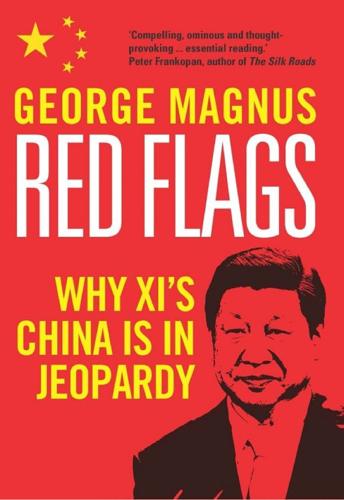
Red Flags: Why Xi's China Is in Jeopardy
by
George Magnus
Published 10 Sep 2018
The China Insurance Regulatory Commission, for example, allowed insurance companies to invest in much riskier assets than is customary for this normally conservative sector, and to sell policies – the most contentious were called ‘universal’ insurance policies – that were not so much insurance policies, as ‘guaranteed return’ investment products. More broadly, financial companies competed to raise money from investors and depositors and put the money to use in an array of dubious financial schemes, egged on by new forms of finance such as online payments and savings schemes, peer-to-peer lending, and a permissive regulatory attitude towards the use (and abuse) of leverage. Banking crisis more likely than a debt crisis During the financial crisis in 2007–9, as the destruction of balance sheets tore through the financial system, some people used to say wryly that ‘there’s nothing right on the left side of the balance sheet, and nothing left on the right’.
…
Official concern about shadow banking activities, including WMPs, prompted the People’s Bank of China and the Banking, Insurance and Securities Commissions to issue a spate of new rules and draft guidelines, designed to show they were acting in unison to clamp down on the use of leverage, restrain universal life insurance policies and peer-to-peer lending, and discourage short-term fund-raising. The authorities were especially concerned to dampen down the growth of WMPs, to subject them to tighter regulation and scrutiny, and to ban certain practices in which WMPs were used to boost leverage but also raise financial risks. It is noteworthy that President Xi took a personal interest in the campaign to act against the risk of financial instability.

Markets, State, and People: Economics for Public Policy
by
Diane Coyle
Published 14 Jan 2020
Copyright protection is now so long term that it is quasi-permanent. But permanent legal monopolies are hard to justify in terms of economic welfare. Some other markets where digital platforms have made big inroads, increasing competition, are also heavily regulated: Airbnb in accommodations and peer-to-peer lending platforms, such as Up-start and Funding Circle in the finance sector, for example. Matching platforms have the potential to increase the efficiency of the market—and to do so in a Pareto-improving way—because their improved matching of buyers and sellers is equivalent to increasing the liquidity of the market and increasing the number of potential trades.
…
See energy oligopoly, 47 Olivetti, 107 Olson, Mancur, 267 Only the Paranoid Survive (Grove), 46 OPEC (Organization of the Petroleum Exporting Countries), 23, 57, 100, 273 Openreach (broadband company), 120, 121 OpenTable, 168 opinion polls, 180–81 opportunity costs, 77, 303, 306 opting out vs. opting in, 185, 187, 194 option value, 321 Orange (telecommunications company), 121 Oresund Bridge, 30 organ donation, 197 Organization for Economic Cooperation and Development (OECD), 24, 290 Orwell, George, 150 Ostrom, Elinor, 138, 143–47, 152, 155, 165 Ostrom, Vincent, 143 output efficiency (product mix efficiency), 10, 40 over-confidence, 173, 182, 199 over-fishing, 139, 143 over-grazing, 138 over-investment (gold plating), 113 Pacific Gas and Electric, 89 Pareto, Vilfredo, 9 Pareto efficiency. See efficiency Paris Metro, 308 partial equilibrium, 13, 47 patent box, 129–30 patents, 51, 61, 80 patent trolls, 151 paternalism, 172, 173, 195, 196–97 payday loans, 189 peak loading problem, 84 peer-to-peer lending, 81 Peltzman effect (risk compensation), 274, 275 pensions, 21, 186–87, 194, 202, 233, 251, 252 PepsiCo, 56 pharmaceuticals, 129–30, 247, 263 photovoltaics (PV), 126, 127 Pigou, Arthur, 19, 25 Piketty, Thomas, 216, 223, 226, 231 policing, 157 policy appraisal, 302–4; elements of, 303; evaluation distinguished from, 299; tools of, 297 policy evaluation: appraisal distinguished from, 299; econometric, 300–301; rarity of, 297; research on, 298, 300 political parties, 160 pollution, 13, 25, 32, 140, 147, 320 positional goods, 138, 161–62, 165, 167, 169 postal services, 21–22, 101, 104, 105 poverty, 203, 206; absolute vs. relative, 212, 213, 214 poverty gap, 213 poverty trap (welfare trap), 234, 236 power, in statistics, 301–2 PowerGen, 87 present bias (hyperbolic discounting), 183–85, 190, 316 present value, 183–84 price controls, 67, 112 price elasticity of demand, 19, 47, 79, 152 price fixing, 55 principal-agent problems, 284–86, 289 private roads, 29, 30 privatization, 69, 72, 280; of airlines, 106; defined, 108; impetus for, 109–11; mixed success of, 116–25; regulation following, 111–16; reversals of, 100–101, 103; in Turkey, 117; in United Kingdom, 87–88, 98, 100, 102–3, 114–22, 124–25, 258, 290 process innovation, 51 producer surplus, 47–49 product innovation, 51 production possibilities frontier, 10, 40 productivity: competition linked to, 46–47, 53, 110–11, 122; health linked to, 211; privatization and, 116–17, 121; of state-owned enterprises, 109 product mix efficiency (output efficiency), 10, 40 progressive taxation, 2, 7–8, 206, 208, 213, 225, 228–29, 232 Prohibition, 269 projection bias, 184 property rights, 33–34, 226, 291, 341; ambiguous, 148, 149; digital, 149, 150; over commons, 141, 145, 147, 165, 168; socially constructed, 152, 166 prospect theory, 178 PSA Peugeot Citroën, 63 public choice theory, 22–23, 256, 259–62, 271, 280, 289, 293 public goods, 1, 8, 159, 174, 243–45; examples of, 25–26, 27; features of, 28; financing of, 27–28; private goods vs., 27; pure vs. excludable, 25–26; research as, 128–29, 134 public-private partnerships, 29, 30, 100, 108, 257 public transport, 22, 80, 105, 119, 243, 245, 251, 276, 318; in London, 278, 308 public value, 327–29 Putnam, Robert, 155 quasi-hyperbolic discounting, 183–84 queuing, 140, 167 radio spectrum, 25, 31, 61, 140 railroads, 278; employment declines in, 116; fares of, 119; nationalization of, 100, 104, 125; as natural monopoly, 45, 46, 55, 61, 91, 98, 123; safety compromised in, 118 rainforest, 141 Ramsey, Frank, 312 Ramsey rule, 312, 313 RAND Corporation, 108 randomized control trials (RCTs), 298, 329–32 rationing, 142, 166–67, 168, 247 Reagan, Ronald, 22, 23, 70, 100, 256, 258 recessions, 209, 251 redistribution, 6, 227; through education, 8, 243, 251; efficiency and, 11, 225, 251; lump-sum, 14; Pareto efficiency distinguished from, 11–12, 14; through public services, 8, 243–45, 247; rationale for, 202; through taxation, 2, 7–8, 206, 208, 213, 225, 228–29, 232.
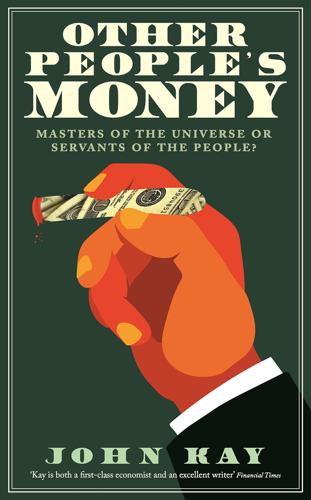
Other People's Money: Masters of the Universe or Servants of the People?
by
John Kay
Published 2 Sep 2015
But connectedness, which the internet delivers so effectively, is only one of the functions of the intermediary. The greater ease of making connections increases the need to monitor these connections. Facebook illustrates how a broader range of relationships diminishes their average quality. Recent financial innovations, such as crowd-funding and peer-to-peer lending, cannot eliminate financial intermediation. If savers are to obtain returns that match the risks they take, they need to be able to judge how their money is used and how the assets purchased with that money are managed. Few have the time, knowledge or experience to do this. Cynicism born of experience is required to find the few viable opportunities among many optimistic business plans.
…
.: Hyperion 220 Loomis, Carol 108 lotteries 65, 66, 68, 72 Lucas, Robert 40 Lynch, Dennios 108 Lynch, Peter 108, 109 M M-Pesa 186 Maastricht Treaty (1993) 243, 250 McCardie, Sir Henry 83, 84, 282, 284 McGowan, Harry 45 Machiavelli, Niccolò 224 McKinley, William 44 McKinsey 115, 126 Macy’s department store 46 Madoff, Bernard 29, 118, 131, 132, 177, 232, 293 Madoff Securities 177 Magnus, King of Sweden 196 Manhattan Island, New York: and Native American sellers 59, 63 Manne, Henry 46 manufacturing companies, rise of 45 Marconi 48 marine insurance 62, 63 mark-to-market accounting 126, 128–9, 320n22 mark-to-model approach 128–9, 320n21 Market Abuse Directive (MAD) 226 market economy 4, 281, 302, 308 ‘market for corporate control, the’ 46 market risk 97, 98, 177, 192 market-makers 25, 28, 30, 31 market-making 49, 109, 118, 136 Markets in Financial Instruments Directive (MIFID) 226 Markkula, Mike 162, 166, 167 Markopolos, Harry 232 Markowitz, Harry 69 Markowitz model of portfolio allocation 68–9 Martin, Felix 323n5 martingale 130, 131, 136, 139, 190 Marx, Groucho 252 Marx, Karl 144, 145 Capital 143 Mary Poppins (film) 11, 12 MasterCard 186 Masters, Brooke 120 maturity transformation 88, 92 Maxwell, Robert 197, 201 Mayan civilisation 277 Meade, James 263 Means, Gardiner 51 Meeker, Mary 40, 167 Melamed, Leo 19 Mercedes 170 merchant banks 25, 30, 33 Meriwether, John 110, 134 Merkel, Angela 231 Merrill Lynch 135, 199, 293, 300 Merton, Robert 110 Metronet 159 Meyer, André 205 MGM 33 Microsoft 29, 167 middleman, role of the 80–87 agency and trading 82–3 analysts 86 bad intermediaries 81–2 from agency to trading 84–5 identifying goods and services required 80, 81 logistics 80, 81 services from financial intermediaries 80–81 supply chain 80, 81 transparency 84 ‘wisdom of crowds’ 86–7 Midland Bank 24 Milken, Michael 46, 292 ‘millennium bug’ 40 Miller, Bill 108, 109 Minuit, Peter 59, 63 Mises, Ludwig von 225 Mittelstand (medium-size business sector) 52, 168, 169, 170, 171, 172 mobile banking apps 181 mobile phone payment transfers 186–7 Modigliani-Miller theorem 318n9 monetarism 241 monetary economics 5 monetary policy 241, 243, 245, 246 money creation 88 money market fund 120–21 Moneyball phenomenon 165 monopolies 45 Monte Carlo casino 123 Monte dei Paschi Bank of Siena 24 Montgomery Securities 167 Moody’s rating agency 21, 248, 249, 313n6 moral hazard 74, 75, 76, 92, 95, 256, 258 Morgan, J.P. 44, 166, 291 Morgan Stanley 25, 40, 130, 135, 167, 268 Morgenthau, District Attorney Robert 232–3 mortality tables 256 mortgage banks 27 mortgage market fluctuation in mortgage costs 148 mechanised assessment 84–5 mortgage-backed securities 20, 21, 40, 85, 90, 100, 128, 130, 150, 151, 152, 168, 176–7, 284 synthetic 152 Mozilo, Angelo 150, 152, 154, 293 MSCI World Bank Index 135 muckraking 44, 54–5, 79 ‘mugus’ 118, 260 multinational companies, and diversification 96–7 Munger, Charlie 127 Munich, Germany 62 Munich Re 62 Musk, Elon 168 mutual funds 27, 108, 202, 206 mutual societies 30 mutualisation 79 mutuality 124, 213 ‘My Way’ (song) 72 N Napoleon Bonaparte 26 Napster 185 NASA 276 NASDAQ 29, 108, 161 National Economic Council (US) 5, 58 National Employment Savings Trust (NEST) 255 National Institutes of Health 167 National Insurance Fund (UK) 254 National Provincial Bank 24 National Science Foundation 167 National Westminster Bank 24, 34 Nationwide 151 Native Americans 59, 63 Nazis 219, 221 neo-liberal economic policies 39, 301 Netjets 107 Netscape 40 Neue Markt 170 New Deal 225 ‘new economy’ bubble (1999) 23, 34, 40, 42, 98, 132, 167, 199, 232, 280 new issue market 112–13 New Orleans, Louisiana: Hurricane Katrina disaster (2005) 79 New Testament 76 New York Stock Exchange 26–7, 28, 29, 31, 49, 292 New York Times 283 News of the World 292, 295 Newton, Isaac 35, 132, 313n18 Niederhoffer, Victor 109 NINJAs (no income, no job, no assets) 222 Nixon, Richard 36 ‘no arbitrage’ condition 69 non-price competition 112, 219 Norman, Montagu 253 Northern Rock 89, 90–91, 92, 150, 152 Norwegian sovereign wealth fund 161, 253 Nostradamus 274 O Obama, Barack 5, 58, 77, 194, 271, 301 ‘Obamacare’ 77 Occidental Petroleum 63 Occupy movement 52, 54, 312n2 ‘Occupy Wall Street’ slogan 305 off-balance-sheet financing 153, 158, 160, 210, 250 Office of Thrift Supervision 152–3 oil shock (1973–4) 14, 36–7, 89 Old Testament 75–6 oligarchy 269, 302–3, 305 oligopoly 118, 188 Olney, Richard 233, 237, 270 open market operations 244 options 19, 22 Organisation for Economic Co-operation and Development (OECD) 263 Osborne, George 328n19 ‘out of the money option’ 102, 103 Overend, Gurney & Co. 31 overseas assets and liabilities 179–80, 179 owner-managed businesses 30 ox parable xi-xii Oxford University 12 P Pacific Gas and Electric 246 Pan Am 238 Paris financial centre 26 Parliamentary Commission on Banking Standards 295 partnerships 30, 49, 50, 234 limited liability 313n14 Partnoy, Frank 268 passive funds 99, 212 passive management 207, 209, 212 Patek Philippe 195, 196 Paulson, Hank 300 Paulson, John 64, 109, 115, 152, 191, 284 ‘payment in kind’ securities 131 payment protection policies 198 payments system 6, 7, 25, 180, 181–8, 247, 259–60, 281, 297, 306 PayPal 167, 168, 187 Pecora, Ferdinand 25 Pecora hearings (1932–34) 218 peer-to-peer lending 81 pension funds 29, 98, 175, 177, 197, 199, 200, 201, 208, 213, 254, 282, 284 pension provision 78, 253–6 pension rights 53, 178 Perkins, Charles 233 perpetual inventory method 321n4 Perrow, Charles 278, 279 personal financial management 6, 7 personal liability 296 ‘petrodollars’ 14, 37 Pfizer 96 Pierpoint Morgan, J. 165 Piper Alpha oil rig disaster (1987) 63 Ponzi, Charles 131, 132 Ponzi schemes 131, 132, 136, 201 pooled investment funds 197 portfolio insurance 38 Potts, Robin, QC 61, 63, 72, 119, 193 PPI, mis-selling of 296 Prebble, Lucy: ENRON 126 price competition 112, 219 price discovery 226 price mechanism 92 Prince, Chuck 34 private equity 27, 98, 166, 210 managers 210, 289 private insurance 76, 77 private sector 78 privatisation 39, 78, 157, 158, 258, 307 probabilistic thinking 67, 71, 79 Procter & Gamble 69, 108 product innovation 13 property and infrastructure 154–60 protectionism 13 Prudential 200 public companies, conversion to 18, 31–2, 49 public debt 252 public sector 78 Q Quandt, Herbert 170 Quandt Foundation 170 quantitative easing 245, 251 quantitative style 110–11 quants 22, 107, 110 Quattrone, Frank 167, 292–3 queuing 92 Quinn, Sean 156 R railroad regulation 237 railway mania (1840s) 35 Raines, Franklin 152 Rajan, Raghuram 56, 58, 79, 102 Rakoff, Judge Jed 233, 294, 295 Ramsey, Frank 67, 68 Rand, Ayn 79, 240 ‘random walk’ 69 Ranieri, Lew 20, 22, 106–7, 134, 152 rating agencies 21, 41, 84–5, 97, 151, 152, 153, 159, 249–50 rationality 66–7, 68 RBS see Royal Bank of Scotland re-insurance 62–3 Reagan, Ronald 18, 23, 54, 59, 240 real economy 7, 18, 57, 143, 172, 190, 213, 226, 239, 271, 280, 288, 292, 298 redundancy 73, 279 Reed, John 33–4, 48, 49, 50, 51, 242, 293, 314n40 reform 270–96 other people’s money 282–5 personal responsibility 292–6 principles of 270–75 the reform of structure 285–92 robust systems and complex structures 276–81 regulation 215, 217–39 the Basel agreements 220–25 and competition 113 the origins of financial regulation 217–19 ‘principle-based’ 224 the regulation industry 229–33 ‘rule-based’ 224 securities regulation 225–9 what went wrong 233–9 ‘Regulation Q’ (US) 13, 14, 20, 28, 120, 121 regulatory agencies 229, 230, 231, 235, 238, 274, 295, 305 regulatory arbitrage 119–24, 164, 223, 250 regulatory capture 237, 248, 262 Reich, Robert 265, 266 Reinhart, C.M. 251 relationship breakdown 74, 79 Rembrandts, genuine/fake 103, 127 Renaissance Technologies 110, 111, 191 ‘repo 105’ arbitrage 122 repo agreement 121–2 repo market 121 Reserve Bank of India 58 Reserve Primary Fund 121 Resolution Trust Corporation 150 retirement pension 78 return on equity (RoE) 136–7, 191 Revelstoke, first Lord 31 risk 6, 7, 55, 56–79 adverse selection and moral hazard 72–9 analysis by ‘ketchup economists’ 64 chasing the dream 65–72 Geithner on 57–8 investment 256 Jackson Hole symposium 56–7 Kohn on 56 laying bets on the interpretation of incomplete information 61 and Lloyd’s 62–3 the LMX spiral 62–3, 64 longevity 256 market 97, 98 mitigation 297 randomness 76 socialisation of individual risks 61 specific 97–8 risk management 67–8, 72, 79, 137, 191, 229, 233, 234, 256 risk premium 208 risk thermostat 74–5 risk weighting 222, 224 risk-pooling 258 RJR Nabisco 46, 204 ‘robber barons’ 44, 45, 51–2 Robertson, Julian 98, 109, 132 Robertson Stephens 167 Rockefeller, John D. 44, 52, 196 Rocket Internet 170 Rogers, Richard 62 Rogoff, K.S. 251 rogue traders 130, 300 Rohatyn, Felix 205 Rolls-Royce 90 Roman empire 277, 278 Rome, Treaty of (1964) 170 Rooney, Wayne 268 Roosevelt, Franklin D. v, 25, 235 Roosevelt, Theodore 43–4, 235, 323n1 Rothschild family 217 Royal Bank of Scotland 11, 12, 14, 24, 26, 34, 78, 91, 103, 124, 129, 135, 138, 139, 211, 231, 293 Rubin, Robert 57 In an Uncertain World 67 Ruskin, John 60, 63 Unto this Last 56 Russia defaults on debts 39 oligarchies 303 Russian Revolution (1917) 3 S Saes 168 St Paul’s Churchyard, City of London 305 Salomon Bros. 20, 22, 27, 34, 110, 133–4 ‘Salomon North’ 110 Salz Review: An Independent Review of Barclays’ Business Practices 217 Samuelson, Paul 208 Samwer, Oliver 170 Sarkozy, Nicolas 248, 249 Savage, L.J. 67 Scholes, Myron 19, 69, 110 Schrödinger’s cat 129 Scottish Parliament 158 Scottish Widows 26, 27, 30 Scottish Widows Fund 26, 197, 201, 212, 256 search 195, 209, 213 defined 144 and the investment bank 197 Second World War 36, 221 secondary markets 85, 170, 210 Securities and Exchange Commission (SEC) 20, 64, 126, 152, 197, 225, 226, 228, 230, 232, 247, 292, 293, 294, 313n6 securities regulation 225–9 securitisation 20–21, 54, 100, 151, 153, 164, 169, 171, 222–3 securitisation boom (1980s) 200 securitised loans 98 See’s Candies 107 Segarra, Carmen 232 self-financing companies 45, 179, 195–6 sell-side analysts 199 Sequoia Capital 166 Shad, John S.R. 225, 228–9 shareholder value 4, 45, 46, 50, 211 Sharpe, William 69, 70 Shell 96 Sherman Act (1891) 44 Shiller, Robert 85 Siemens 196 Siemens, Werner von 196 Silicon Valley, California 166, 167, 168, 171, 172 Simon, Hermann 168 Simons, Jim 23, 27, 110, 111–12, 124 Sinatra, Frank 72 Sinclair, Upton 54, 79, 104, 132–3 The Jungle 44 Sing Sing maximum-security gaol, New York 292 Skilling, Jeff 126, 127, 128, 149, 197, 259 Slim, Carlos 52 Sloan, Alfred 45, 49 Sloan Foundation 49 small and medium-size enterprises (SMEs), financing 165–72, 291 Smith, Adam 31, 51, 60 The Wealth of Nations v, 56, 106 Smith, Greg 283 Smith Barney 34 social security 52, 79, 255 Social Security Trust Fund (US) 254, 255 socialism 4, 225, 301 Société Générale 130 ‘soft commission’ 29 ‘soft’ commodities 17 Soros, George 23, 27, 98, 109, 111–12, 124, 132 South Sea Bubble (18th century) 35, 132, 292 sovereign wealth funds 161, 253 Soviet empire 36 Soviet Union 225 collapse of 23 lack of confidence in supplies 89–90 Spain: property bubble 42 Sparks, D.L. 114, 283, 284 specific risk 97–8 speculation 93 Spitzer, Eliot 232, 292 spread 28, 94 Spread Networks 2 Square 187 Stamp Duty 274 Standard & Poor’s rating agency 21, 99, 248, 249, 313n6 Standard Life 26, 27, 30 standard of living 77 Standard Oil 44, 196, 323n1 Standard Oil of New Jersey (later Exxon) 323n1 Stanford University 167 Stanhope 158 State Street 200, 207 sterling devaluation (1967) 18 stewardship 144, 163, 195–203, 203, 208, 209, 210, 211, 213 Stewart, Jimmy 12 Stigler, George 237 stock exchanges 17 see also individual stock exchanges stock markets change in organisation of 28 as a means of taking money out of companies 162 rise of 38 stock-picking 108 stockbrokers 16, 25, 30, 197, 198 Stoll, Clifford 227–8 stone fei (in Micronesia) 323n5 Stone, Richard 263 Stora Enso 196 strict liability 295–6 Strine, Chancellor Leo 117 structured investment vehicles (SIVs) 158, 223 sub-prime lending 34–5, 75 sub-prime mortgages 63, 75, 109, 149, 150, 169, 244 Summers, Larry 22, 55, 73, 119, 154, 299 criticism of Rajan’s views 57 ‘ketchup economics’ 5, 57, 69 support for financialisation 57 on transformation of investment banking 15 Sunday Times 143 ‘Rich List’ 156 supermarkets: financial services 27 supply chain 80, 81, 83, 89, 92 Surowiecki, James: The Wisdom of Crowds xi swap markets 21 SWIFT clearing system 184 Swiss Re 62 syndication 62 Syriza 306 T Taibbi, Matt 55 tailgating 102, 103, 104, 128, 129, 130, 136, 138, 140, 152, 155, 190–91, 200 Tainter, Joseph 277 Taleb, Nassim Nicholas 125, 183 Fooled by Randomness 133 Tarbell, Ida 44, 54 TARGET2 system 184, 244 TARP programme 138 tax havens 123 Taylor, Martin 185 Taylor Bean and Whitaker 293 Tea Party 306 technological innovation 13, 185, 187 Tel Aviv, Israel 171 telecommunications network 181, 182 Tesla Motors 168 Tetra 168 TfL 159 Thai exchange rate, collapse of (1997) 39 Thain, John 300 Thatcher, Margaret 18, 23, 54, 59, 148, 151, 157 Thiel, Peter 167 Third World debt problem 37, 131 thrifts 25, 149, 150, 151, 154, 174, 290, 292 ticket touts 94–5 Tobin, James 273 Tobin tax 273–4 Tolstoy, Count Leo 97 Tonnies, Ferdinand 17 ‘too big to fail’ 75, 140, 276, 277 Tourre, Fabrice ‘Fabulous Fab’ 63–4, 115, 118, 232, 293, 294 trader model 82, 83 trader, rise of the 16–24 elements of the new trading culture 21–2 factors contributing to the change 17–18 foreign exchange 18–19 from personal relationships to anonymous markets 17 hedge fund managers 23 independent traders 22–3 information technology 19–20 regulation 20 securitisation 20–21 shift from agency to trading 16 trading as a principal source of revenue and remuneration 17 trader model 82, 83 ‘trading book’ 320n20 transparency 29, 84, 205, 210, 212, 226, 260 Travelers Group 33, 34, 48 ‘treasure islands’ 122–3 Treasuries 75 Treasury (UK) 135, 158 troubled assets relief program 135 Truman, Harry S. 230, 325n13 trust 83–4, 85, 182, 213, 218, 260–61 Tuckett, David 43, 71, 79 tulip mania (1630s) 35 Turner, Adair 303 TWA 238 Twain, Mark: Pudd’nhead Wilson’s Calendar 95–6 Twitter 185 U UBS 33, 134 UK Independence Party 306 unemployment 73, 74, 79 unit trusts 202 United States global dominance of the finance industry 218 house prices 41, 43, 149, 174 stock bubble (1929) 201 universal banks 26–7, 33 University of Chicago 19, 69 ‘unknown unknowns’ 67 UPS delivery system 279–80 US Defense Department 167 US Steel 44 US Supreme Court 228, 229, 304 US Treasury 36, 38, 135 utility networks 181–2 V value discovery 226–7 value horizon 109 Van Agtmael, Antoine 39 Vanderbilt, Cornelius 44 Vanguard 200, 207, 213 venture capital 166 firms 27, 168 venture capitalists 171, 172 Vickers Commission 194 Viniar, David 204–5, 233, 282, 283, 284 VISA 186 volatility 85, 93, 98, 103, 131, 255 Volcker, Paul 150, 181 Volcker Rule 194 voluntary agencies 258 W wagers and credit default swaps 119 defined 61 at Lloyd’s coffee house 71–2 lottery tickets 65 Wall Street, New York 1, 16, 312n2 careers in 15 rivalry with London 13 staffing of 217 Wall Street Crash (1929) 20, 25, 27, 36, 127, 201 Wall Street Journal 294 Wallenberg family 108 Walmart 81, 83 Warburg 134 Warren, Elizabeth 237 Washington consensus 39 Washington Mutual 135, 149 Wasserstein, Bruce 204, 205 Watergate affair 240 ‘We are the 99 per cent’ slogan 52, 305 ‘We are Wall Street’ 16, 55, 267–8, 271, 300, 301 Weber, Max 17 Weill, Sandy 33–4, 35, 48–51, 55, 91, 149, 293, 314n40 Weinstock, Arnold 48 Welch, Jack 45–6, 48, 50, 52, 126, 314n40 WestLB 169 Westminster Bank 24 Whitney, Richard 292 Wilson, Harold 18 windfall payments 14, 32, 127, 153, 290 winner’s curse 103, 104, 156, 318n11 Winslow Jones, Alfred 23 Winton Capital 111 Wolfe, Humbert 7 The Uncelestial City 1 Wolfe, Tom 268 The Bonfire of the Vanities 16, 22 women traders 22 Woodford, Neil 108 Woodward, Bob: Maestro 240 World Bank 14, 220 World.Com bonds 197 Wozniak, Steve 162 Wriston, Walter 37 Y Yellen, Janet 230–31 Yom Kippur War (1973) 36 YouTube 185 Z Zurich, Switzerland 62
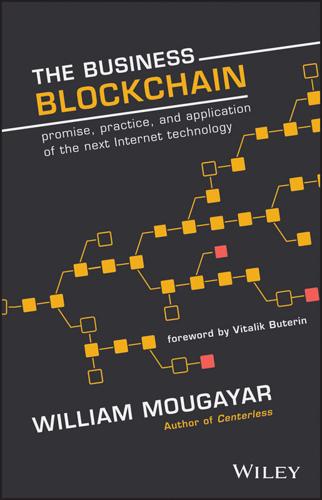
The Business Blockchain: Promise, Practice, and Application of the Next Internet Technology
by
William Mougayar
Published 25 Apr 2016
For example, if you look at the startup innovation around banks in FinTech, you will see plenty of cases where these new companies did not really solve a “problem” the banks had, but they tackled a particular market or service differently. So the tipping point was to compete by reframing the opportunity, for example, peer-to-peer lending, unconventional home loans, really fast approval cycles, efficient robot investing, and so on. Creating Opportunities It is more difficult to figure out opportunities, because that requires applying innovation, being creative, and making profound changes. These are more difficult objectives to achieve, because business process changes are involved, and it takes a longer time to change them.
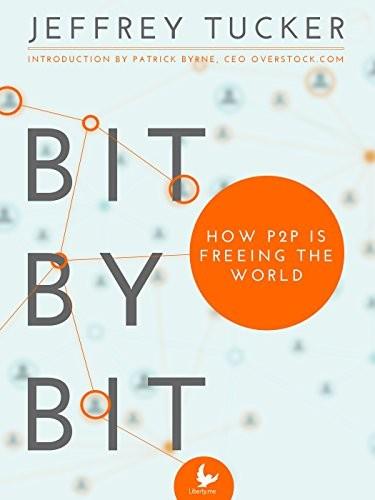
Bit by Bit: How P2P Is Freeing the World
by
Jeffrey Tucker
Published 7 Jan 2015
Similarly, we might expect the hotel industry, which is forced to pay high taxes and to comply with vast regulations, to grumble about room-sharing services such as Airbnb, which bear no 11 such costs. Individuals with an extra room in their house or apartment can charge less, often far less, than established players in the industry. So too might bankers be annoyed by peer-to-peer lending services. Central banks are agitated by the rise of bitcoin. This reaction is pure economic interest at work against innovations that threaten their competitive advantage of the status quo. This response is exactly what we would expect in any period of disruption caused by economic innovation.

Blockchain Revolution: How the Technology Behind Bitcoin Is Changing Money, Business, and the World
by
Don Tapscott
and
Alex Tapscott
Published 9 May 2016
Deegan said, “I can create different personas that represent different sides of myself, and I choose the persona that interacts with the company.”75 Banks and other companies on the blockchain ought not ask for and aggregate more information than they need to provide service. This model has proven to work. BTCjam is a peer-to-peer lending platform that uses reputation as the basis for extending credit. Users can link their profile on BTCjam to Facebook, LinkedIn, eBay, or Coinbase to add more depth and texture. Friends can volunteer recommendations from Facebook. You can even submit your actual credit score as one of many attributes.
…
In the same way the smart phone allows you to rent your apartment to someone else or rent your car to someone else or provide ride sharing to someone else, it can also be used as an ATM. Barhydt said, “It’s amazing what people are willing to do in a shared economy model and they’re just not doing it for money yet, maybe with the exception of peer-to-peer lending.” Moreover, he said, “It’s more important to us that you trust each other rather than Abra. If you trust each other, it’s highly likely that you’re going to get to know Abra, and that you’re going to like it and you’re going to have a good experience,” and ultimately trust the platform.48 Abra is not a remittance app but instead a new global platform for value exchange that combines in equal measure the distributed, trustless blockchain network, the power of smart phone technology, and the very human inclination to want to trust peers in a network.

Taming the Sun: Innovations to Harness Solar Energy and Power the Planet
by
Varun Sivaram
Published 2 Mar 2018
In late 2015, the British start-up BBOXX announced the world’s first securitization of off-grid solar assets, raising a half-million dollars at a 21 percent interest rate. It was a modest start, but more recent offerings have improved those terms.27 And it’s not just off-grid solar providers jumping into the financing fray. One start-up, a peer-to-peer lending marketplace called Lendable, modeled on Lending Club and based in Kenya, is growing rapidly by enabling you or me to invest in unsecured consumer debt in Africa to finance off-grid solar systems. How can these companies make such investments attractive to their international clientele? The answer, as is the case for solar in developed countries, is data.
…
National Renewable Energy Laboratory), 135, 236 NRG, 93, 94, 238 NRG Yield, 93 Nuclear power, 286g for deep decarbonization, 61–63, 225, 234, 236, 237 flexibility of power plants producing, 76 and future of solar energy, 1, 5, 10 in Japan, 16–18 light-water reactors, 21, 165, 236 as model for solar energy, 21–23 in power markets, 239–240 and renewable portfolio standards, 268 as supplement to solar power, 24 U.S. government support for, 28, 33–34, 36 use of, 60, 82 Nuclear reactors, 21, 165, 236, 237 NV Energy, 109 Obama, Barack, and administration, 38, 39, 169, 170, 184, 245, 249, 263, 272 OECD (Organisation for Economic Co-operation and Development), 111 Off-Grid Electric, 115, 116, 118, 125 Off-grid solar, 23–24, 115–139 defined, 282g funding for, 67–68 history of, 118–124 improving energy access with, 86, 115–118 in India, 14 microgrids for, 128–134 Pay-As-You-Go model for, 124–128 per unit electricity costs for, 122 public-sector promotion of, 135–139 Office of Scientific Research and Development, 254 Offshore oil rigs, 34 Offtaker risk, 111 Offtakers, 68, 104–105 Oil, decarbonization and, 171 Oil and gas industry, 91, 106 Oil companies applied R&D in energy by, 257 capitalization of solar vs., 89 and carbon prices, 23 investment in solar power by, 35 tax incentives for, 268 Oil exports, profits from, 20 Oil prices, 95–96, 96f, 255, 256 OMC Power, 130 Open-cycle gas turbines, 235 Optical fibers, 215–216 Optical supergrids, 215 Orbital solar power satellite, 163, 164 Organic polymers, 151–152 Organic solar cells, 147, 156–157, 282g Organisation for Economic Co-operation and Development (OECD), 111 O’Sullivan, Frank, 39 Ouarzazate, Morocco, 205 Oxford PV, 147, 153, 166–167 Oxford University, 143, 151 Pacific DC intertie, 204 Paint, solar, 12, 147, 162 Pan-Asian supergrid, 195–196 Parabolic trough CSP designs, 186 Paris Agreement on Climate Change and China Light and Power’s investment in solar, 105–106 global warming limit in, 6 India’s climate pledge under, 15 and Mission Innovation, 271–272 withdrawal of United States from, 24, 254, 272 Paris Climate Change Conference (2015), 271 Pasadena, California, 31 Pay-As-You-Go (PAYG) model defined, 282g for microgrids, 130 for off-grid solar, 118, 124–128 for solar home systems, 123 Pearson, Gerald, 33 PECs. See Photoelectrochemical cells Peer-to-peer lending, 127 Peer-to-peer mobile payments, 134 Penn State University, 177 Pension funds, 111 PERC design, 41 Perovskite(s) defined, 282g layering of, on silicon solar cells, 147, 153, 155 in photoelectrochemical cells, 178 size of, 155 in solar fuel production, 181–182 as solar material, 144, 145, 151–156 synthetic, 151 Perovskite solar cells, 141, 143–167 advantages of, over silicon solar cells, 159–164 efficiency and development of, 143–148 efficiency of, 161 and energy transfer in silicon solar cells, 148–151 organic and quantum dot solar cells vs., 156–159 and perovskite as solar material, 151–156 scaling up, 191 and technology lock-in in solar industry, 164–167 and value deflation, 190 Persian Gulf, 246 Peru, 18, 50 Petroleum-fueled vehicles, 170–171 Petro Nova project, 238 Philippines, 122 Phillips, 138 Photoelectrochemical cells (PECs), 173–179 defined, 282g of JCAP, 177–178, 178f scaling up, 191 solar PV cells vs., 175–176 tandem structures in, 178–179 Photons, 32, 148–151, 280g Photosynthesis, 172, 174–175 Photovoltaic effect, 32 Photovoltaics (PV).
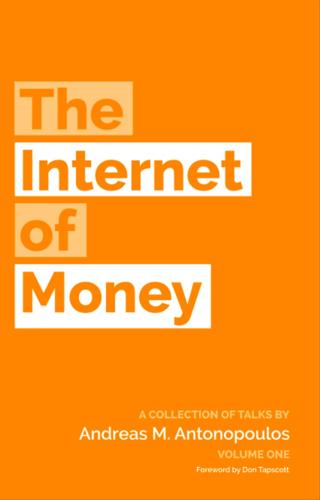
The Internet of Money
by
Andreas M. Antonopoulos
Published 28 Aug 2016
It is about the ability to bring to the world a level of financial integration that the world has never seen before. From our perspective in the privileged world, it is a great technology. We can do some disruptive innovation. We can build some interesting services. But if you’re a Kenyan farmer who’s trying to raise money in order to buy seed, and now you can do decentralized peer-to-peer lending and reach out to lenders from all across the globe, this is not just a technology—this is truly life-changing. "Bitcoin is about the ability to bring to the world a level of financial integration that the world has never seen before." The vast majority of the world lives under repressive and corrupt regimes with central banks that impose hyper-inflation at 30 percent a month.
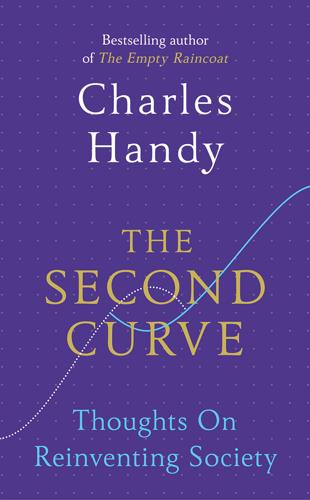
The Second Curve: Thoughts on Reinventing Society
by
Charles Handy
Published 12 Mar 2015
You can, should you wish to take the risk, start your own currency. Bitcoin, Peercoin and Primecoin already exist as internet currencies with a defined amount whose value varies according to the demand, although the risk quickly overtook a couple of the early Britcoin exchanges. Or you can turn banker yourself via a peer-to-peer lending platform. You don’t have to leave home to go to university any more. With the help of the new free online courses offered by leading universities combined with imaginative video exercises you can, if you are diligent, shape your own degree. The Open University in Britain has long proved that distance learning can work well if it is disciplined.
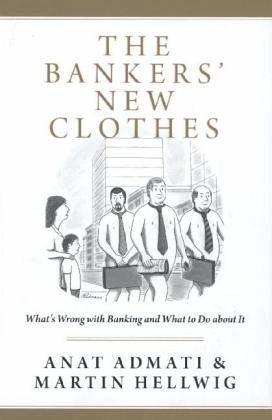
The Bankers' New Clothes: What's Wrong With Banking and What to Do About It
by
Anat Admati
and
Martin Hellwig
Published 15 Feb 2013
Rajan et al. (2010) document that increased use of securitization to sell mortgages to other investors in the years leading up to the financial crisis of 2007–2009 was associated with a decline in the use of soft information in mortgage lending. 10. On a limited scale, some of this is actually happening, for example, through Web sites offering “peer-to-peer” lending (see Ron Lieber, “The Gamble of Lending Peer to Peer,” New York Times, February 4, 2011). 11. The presumption here is that the bank is more trustworthy than a nonfinancial borrower. If the bank is more trustworthy, its trustworthiness might be due to its being relatively less risky because it makes many different loans whose individual risks, by and large, cancel each other out; the bank might also have an established reputation, which a start-up does not.
…
See debt overhang Palepu, Krishna G., 266n8 Pandit, Vikram, 232n18, 274n60 panics, 51–53; in liquidity narrative of financial crisis of 2007–2009, 211; over mortgage-related securities (2007), 299n45 Paredes, Troy, 265n3 partnerships, in history of banks, 30–31, 282n14 Partnoy, Frank, 260n37, 260nn40–41, 261nn43–44, 262n53, 284n24, 296n28, 329n6, 329n8, 332n30 Paulson, John, 296n32 Pauzner, Adi, 330n17 payment system(s), 149–53; benefits to economy, 49; fragility of banking system and, 149–53; as infrastructure of economy, 49; role of banks in, 149–50; role of deposits in, 150, 293n10 payouts to bank shareholders: benefits of ban on, 172–76, 182, 189, 223; Federal Reserve on, 175, 306n27, 312n57; during financial crisis of 2007–2009, 174–75, 306n27; Modigliani–Miller on, 305n22. See also dividends “pecking order” hypothesis, 173, 305n21 Pecora hearings (1933), 321n27 peer-to-peer lending, 50, 249n10 Peltzman, Sam, 262n52, 326n60, 331n25 Peltzman effect, 262n52 penalties. See fines and penalties performance, return on equity as flawed measure of, 116, 120–21 performance pay, 122–27. See also compensation personal bankruptcy. See bankruptcy, personal Pfleiderer, Paul, 278n20 pharmaceutical industry, risks and funding in, 166 physicists, in banks versus elsewhere, 196–97 plumbing metaphor, 210 political campaign contributions, by banks, 203, 205, 213, 324n46 political lobbying.

The Price of Time: The Real Story of Interest
by
Edward Chancellor
Published 15 Aug 2022
PIMCO’s Bill Gross noted that by late 2012 the rate paid on his brokerage money market fund was just 0.01 per cent, which meant that $10,000 of savings would not yield enough to buy a cup of coffee. It was only natural that the search for yield should resume. Yield-chasing after 2008 took on myriad forms, from online peer-to-peer lending to investments in listed ‘yieldcos’, which, as their name suggests, were designed to attract yield-hungry investors. Other income-enhancing vehicles included business development corporations (lenders to small businesses), master-limited partnerships, preference share funds, high-yield municipal bond funds, commercial mortgage-backed securities and real estate investment trusts.
…
As the tenth anniversary of the stimulus approached, the departing Governor of the People’s Bank, Zhou Xiaochuan, warned of ‘hidden, complex, sudden, contagious and hazardous’ risks in China’s credit system.115 The Governor pointed to Ponzi lending schemes operated by internet companies.fn13 (A few months earlier, the collapse of a peer-to-peer lending scheme had prompted large public protests in Beijing’s financial district.116) He also warned of financial risks from zombie companies, poor risk models, speculative bubbles and financial innovation. The country’s top banker feared that China faced its own ‘Minsky moment’.117 Not long after, the government seized control of Baoshang Bank, a regional lender based in Baotou, Inner Mongolia.
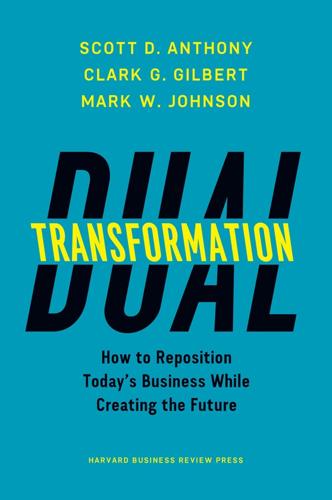
Dual Transformation: How to Reposition Today's Business While Creating the Future
by
Scott D. Anthony
and
Mark W. Johnson
Published 27 Mar 2017
Leaders who catch the disruptive changes early and respond appropriately will have the ability to thrive in the years to come. Those who don’t, well, Darwin has a way of taking care of them. TABLE AF-1 Disruption by industry Industry Disruptive trends New competitors Growth opportunities Consumer banking Peer-to-peer lending and payments, blockchain Telecommunications companies (e.g., Globe), technology giants Data-driven advisory support for businesses Shipping 3-D printing, drone delivery, smart, connected devices Amazon Real-time tracking, new inventory management services Medical devices Smart, connected devices, customized medicines Apple, IBM, Nestlé Wellness and prevention Automotive Driverless cars, integration of cars and commerce Uber, Apple, Google Transport and logistics services and solutions Professional services Democratized knowledge, platforms, software, artificial intelligence Hourlynerd, LegalZoom Software-enabled complex services Appendix: Dual Transformation Toolkit This appendix presents a set of checklists, discussion guides, and simple analytical models that help you apply key concepts in the book.
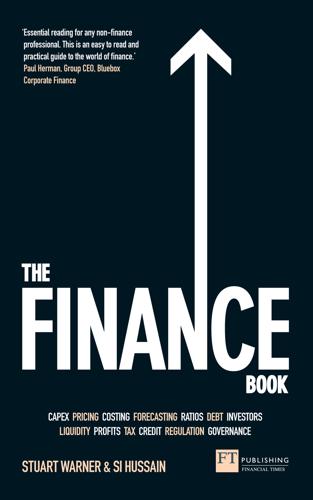
The Finance Book: Understand the Numbers Even if You're Not a Finance Professional
by
Stuart Warner
and
Si Hussain
Published 20 Apr 2017
abridged accounts, 2nd, 3rd accountants, 2nd, 3rd, 4th accounting computerised systems deadlines for depreciation equity group methods for opex and capex for prepayments and accruals for provisions and contingencies responsibilities standards, 2nd for stock accounts see also company accounts; financial accounts; management accounts abridged, 2nd, 3rd payable, 2nd receivable, 2nd statutory, 2nd value of audited accruals, 2nd accruals accounting accrued income, 2nd acid test ratio actual insolvency see cash flow insolvency administration adverse opinion amortisation, 2nd, 3rd angel investors, 2nd, 3rd annual yield AOL asset turnover (AT) asset-based finance, 2nd asset-based lending asset-based valuation, 2nd assets see also current assets; fixed assets in the balance sheet contingent indefinite (or infinite) life net, 2nd valuation, 2nd associate relationships audit and accruals accounting and the balance sheet committee, 2nd disclaimer and disclosure external financial, 2nd qualified report, 2nd requirements and revenue recognition and valuation value of average cost (AVCO), 2nd B&Q, 2nd BA bad debts, 2nd balance, trial balance sheet balance sheet insolvency banks, and audited accounts Beyond Budgeting Round Table (BBRT) BHS big data bonds borrowing costs, 2nd BP, 2nd budgeting, 2nd, 3rd business analytics business angels see angel investors business finance debt equity business intelligence business tax business valuation buyback agreements capex, 2nd capital see also equity in the balance sheet, 2nd, 3rd cost, 2nd, 3rd share venture working, 2nd, 3rd capital allowances, 2nd capital employed, 2nd capital expenditure see capex capital gain, 2nd, 3rd capital maintenance rules capital redemption reserve capital reserves, 2nd, 3rd Carcraft cash, 2nd cash accounting cash equivalents cash flow discounted, 2nd forecasting from operating activities cash flow insolvency cash flow statement cessation, and equity finance charges choice and accounting standards company accounts see also accounts; financial accounts; management accounts and accounting policies and accruals accounting audit report and the balance sheet and business valuation capital and reserves and the cash flow statement corporate governance debt finance debtors and creditors directors’ remuneration earnings per share and finance systems fixed assets gearing going concern disclosure goodwill and group accounting impairment and information in public domain and insolvency interest cover investment appraisal management accounts pack not published in no budgets in opex and capex prepayments and accruals pricing not in and profit and loss (P&L) profit planning not in profitability performance measures provisions and contingencies revaluation revenue recognition and sources of finance stock tax working capital computerised accounting systems confirmation statement, 2nd, 3rd consolidated accounts see group accounting constraint, budgeting constructive obligations contingencies contingent assets contracts long-term onerous contribution, 2nd contribution percentage of sales (CPS) ratio control and debt finance organisational ownership versus convertible bonds corporate governance, 2nd Corporate Voluntary Arrangement (CVA) corporation tax, 2nd, 3rd costs average, 2nd borrowing, 2nd capital, 2nd, 3rd classification debt finance depreciated replacement fixed, 2nd fixed assets versus net realisable value sales stock variable, 2nd cost-volume-profit analysis (CVP), 2nd covenants, 2nd CPS (contribution percentage of sales) credit control, 2nd, 3rd credit ratings creditors, 2nd crowd lending see peer-to-peer (P2P) lending ‘Crowdcube’ crowdfunding see equity crowdfunding cumulative preference shares current assets, 2nd see also assets CVA (Corporate Voluntary Arrangement) CVP (cost-volume-profit analysis), 2nd DCF (discounted cash flow), 2nd deadlines for business tax financial, 2nd debt bad, 2nd collection factoring, 2nd performance measures sale of and solvency debt finance, 2nd, 3rd, 4th debt-equity mix debtor and creditor days, 2nd, 3rd debtors deferred income, 2nd deferred tax, 2nd, 3rd demand yield see price customization depreciated replacement costs depreciation, 2nd, 3rd directors and corporate governance and going concern disclosure and insolvency personal details remuneration, 2nd responsibilities, 2nd and viability statement disclosure disclaimer, audit disclosure requirements, 2nd discounted cash flow (DCF), 2nd discounting prices and revenue recognition disposal, profit/loss on distributable profits dividend cover dividend policy dividend yield dormant businesses double taxation, 2nd downward revaluation draft financial accounts dynamic pricing see price customisation earned income earnings before interest, tax, depreciation and amortisation (EBITDA), 2nd earnings per share earnings statement see profit and loss (P&L) earnings/profit after tax (EAT/PAT) earnings/profit before interest and tax (EBIT/PBIT) earnings/profit before tax (EBT/PBT) EAT/PAT (earnings/profit after tax) eBay EBITDA (earnings before interest, tax, depreciation and amortisation), 2nd EBIT/PBIT (earnings/profit before interest and tax) EBT/PBT (earnings/profit before tax) effective tax rate employment, 2nd Enron enterprise resource planning (ERP) systems, 2nd, 3rd equity, 2nd, 3rd, 4th see also capital equity accounting equity crowdfunding, 2nd equity finance, 2nd ERP (enterprise resource planning) systems, 2nd, 3rd errors ethical pricing exceptional items executive directors expansion and equity finance expenditure, prepayments and accruals, 2nd expenses, 2nd external audit, 2nd Exxon Mobil fair value FAR (fixed asset register) FASB (Financial Accounting Standards Board) FIFO (first-in first-out) finance department in company accounts finance systems importance personnel, 2nd finance director finance personnel, 2nd finance sources in the balance sheet debt, 2nd equity finance systems Financial Accounting Standards Board (FASB) financial accounting team financial accounts see also accounts; company accounts budgeting and forecasting contrasted with management accounts draft investment appraisal profit planning profitable pricing reconciliation with management accounts financial deadlines, 2nd financial health business valuation debt and solvency insolvency and going concern risk investor ratios profitability performance measures working capital and liquidity management financial reporting standards (FRS) financial risk, 2nd, 3rd financial statements and insolvency key elements business tax capital and reserves debtors and creditors goodwill group accounting impairment prepayments and accruals provisions and contingencies revaluation revenue recognition stock tangible fixed assets and depreciation primary balance sheet cash flow statement profit and loss (P&L) requirement for financing activities, 2nd first-in-first-out (FIFO), 2nd fixed asset register (FAR) fixed assets see also assets amortisation, 2nd in the balance sheet cost of versus current assets depreciation impairment, 2nd revaluation fixed charge, 2nd fixed costs, 2nd fixed term loans floating charge forecasting, 2nd foreign currency translation reserve formal insolvency procedures forward ratios fraud, 2nd FRS (financial reporting standards) full statutory accounts Funding Circle GAAP (Generally Accepted Accounting Principles), 2nd gain see capital gain gearing, 2nd, 3rd, 4th Generally Accepted Accounting Principles (GAAP), 2nd going concern, 2nd, 3rd, 4th goods goodwill, 2nd, 3rd, 4th, 5th GPM (gross profit margin), 2nd Greggs auditor’s report balance sheet business valuation capital and reserves cash flow statement corporate governance debtors and creditors directors’ remuneration dividend policy dividends earnings per share finance systems Financial Accounts 2015 and supporting notes going concern disclosure group accounting impairment lack of debt, 2nd opex and capex profit and loss (P&L) profitability performance measures provisions revaluation revenue recognition, 2nd stock stock days tangible fixed assets tax gross profit, 2nd, 3rd gross profit margin (GPM), 2nd group accounting, 2nd growth Her Majesty’s Revenue and Customs (HMRC) IAS (International Accounting Standards) IASB (International Accounting Standards Board) IFRS (international accounting/financial reporting standards), 2nd impairment, 2nd, 3rd, 4th income, 2nd, 3rd, 4th income statement see profit and loss (P&L) income-based valuation method incorporation incremental budgeting, 2nd incurred expenses indefinite (or infinite) life assets, 2nd, 3rd individual shareholders information in the public domain initial public offering (IPO), 2nd insolvency, 2nd, 3rd, 4th institutional investors insurance intangible assets, 2nd interest, tax relief interest cover, 2nd interest rates Internal Rate of Return (IRR), 2nd, 3rd International Accounting Standards Board (IASB) International Accounting Standards (IAS) international accounting/financial reporting standards (IFRS), 2nd international taxation inventory see stock investing activities, 2nd investment appraisal definition, 2nd minimising versus maximising return on investor ratios investors, 2nd invoice factoring invoice finance IPO (initial public offering), 2nd IRR (Internal Rate of Return), 2nd, 3rd JIT (just in time), 2nd journals, 2nd just in time (JIT), 2nd Kingfisher, 2nd land large businesses audit disclosure requirements financial statements ledgers, debtor and creditor legal obligations of directors, 2nd, 3rd in financial statements of group companies for tax leverage, 2nd, 3rd liabilities in the balance sheet provisions and contingencies valuation limited liability liquidation liquidity liquidity ratio loans, fixed term long-term assets see fixed assets long-term contracts long-term liabilities losses, tax relief Majestic Wine management accounting team management accounts, 2nd, 3rd see also accounts; company accounts management accounts pack (MAP) margin of safety, 2nd margins, 2nd market to book ratio, 2nd mark-ups, 2nd maturity, and equity finance mergers and acquisitions micro businesses mixed costs, 2nd modifications, audit multiple obligations MySpace Naked Wines National Insurance Contributions (NIC), 2nd NBV (net book value), 2nd negative goodwill net assets, 2nd net book value (NBV), 2nd Net Present Value (NPV), 2nd, 3rd net realisable value (NRV) net working capital, 2nd Next NIC (National Insurance Contributions), 2nd nominal ledger, 2nd non-controlling interest (NCI), 2nd non-current assets see fixed assets non-current liabilities non-executive directors (NEDs) non-revenue producing activities, in profit and loss (P&L) NPV (Net Present Value), 2nd, 3rd NRV (net realisable value) obligations, provisions for onerous contracts operating activities, 2nd, 3rd operating expenditure see opex operating expenses operating profit, 2nd operating profit margin (OPM), 2nd, 3rd operating risk, 2nd opex, 2nd OPM (operating profit margin), 2nd, 3rd opportunity cost of money ordinary shareholders/shares, 2nd overdraft facilities overtrading owner’s equity see reserves ownership versus control and debt finance and equity finance P&L (profit and loss) P2P (peer-to-peer) lending, 2nd Panko, R. parent companies Pay As You Earn (PAYE), 2nd payback period, 2nd PAYE (Pay As You Earn), 2nd payroll PCPI (Private Company Price Index) P/E (price/earnings) ratio PE (private equity), 2nd peer-to-peer (P2P) lending, 2nd PEG (Price Earnings Growth) performance measures from the balance sheet, 2nd and budgets from the profit and loss (P&L) solvency planning and budgets and forecasts profit PLCs see public limited companies (PLCs) pre-emption rights, 2nd preference shares premiums, business valuation prepayments, 2nd price customisation, 2nd Price Earnings Growth (PEG) price skimming price/earnings (P/E) ratio pricing, profitable Private Company Price Index (PCPI) private equity (PE), 2nd private limited companies business valuation, 2nd corporate governance financial statements sources of equity finance profit versus cash distributable gain versus gross, 2nd operating, 2nd planning retained, 2nd tax on profit and loss (P&L) profit to volume ratio see contribution percentage of sales (CPS) ratio profitability, performance measures profitable pricing property companies prospectus provisions, 2nd, 3rd, 4th Public Interest Disclosure Act (PIDA) 1998 public limited companies (PLCs) business valuation corporate governance directors’ remuneration disclosure requirements, 2nd and equity finance, 2nd financial statements public offering, 2nd purchases qualifications, audit reconciliation, between financial and management accounts redeemable shares reducing balance method of depreciation regulatory environment accounting standards corporate governance external financial audit information in public domain related parties remuneration, directors, 2nd representative bodies reserves, 2nd, 3rd residence, for taxation restructuring retained profits, 2nd return, definition, 2nd return on capital employed (ROCE), 2nd return on equity (ROE), 2nd return on investment (ROI), 2nd, 3rd return on net assets (RONA) return on total assets (ROTA) revaluation, 2nd revaluation reserve, 2nd revenue, 2nd, 3rd revenue recognition, 2nd revenue reserves, 2nd, 3rd rights issue, 2nd risk see financial risk ROCE (return on capital employed), 2nd ROE (return on equity), 2nd ROI (return on investment), 2nd, 3rd rolling budgeting, 2nd RONA (return on net assets) ROTA (return on total assets) sales, 2nd, 3rd Sarbanes-Oxley secured debt, versus unsecured debt service providers services share capital share price, managing the shareholder value shareholders, 2nd Shell short-term assets see current assets short-term liabilities significant influence single obligation small businesses audit directors’ remuneration disclosure requirements financial statements solvency, 2nd spreadsheets, 2nd start-up businesses and debt finance and equity finance statutory accounts, 2nd, 3rd Stewardship Code stock, 2nd stock days stock turnover straight line method of depreciation subsidiaries sum of digits method of depreciation suppliers, managing system controls TALCL (total assets less current liabilities), 2nd tangible fixed assets (TFA), 2nd, 3rd tax avoidance business corporation, 2nd, 3rd deferred, 2nd, 3rd evasion and interest international tax gap, 2nd technical insolvency see balance sheet insolvency technology, 2nd technology sector Tesco, 2nd, 3rd TFA (tangible fixed assets), 2nd, 3rd Time Warner timing and accruals accounting and the balance sheet of budgets and the profit and loss (P&L) and tangible fixed assets total assets less current liabilities (TALCL), 2nd treasury, responsibilities trial balance (TB), 2nd true and fair, 2nd, 3rd, 4th, 5th Turing Pharmaceuticals turnover, stock UK accounting standards corporate governance credit rating UK Corporate Governance Code (the Code), 2nd, 3rd understated reserves unsecured debt, versus secured debt US accounting standards corporate governance valuation balance sheet business premiums stock Value added tax (VAT), 2nd value for money variable costs, 2nd VAT (Value added tax), 2nd venture capital (VC), 2nd viability statement disclosure Volkswagen Waitrose WhatsApp whistleblowing, 2nd, 3rd work in progress (WIP) working capital, 2nd, 3rd working capital days yield, annual YouTube zero-based budgeting, 2nd Praise for The Finance Book ‘Reduces the time required by management to understand the essentials of accounting and finance, enabling them to spend more time focusing on their core business’.
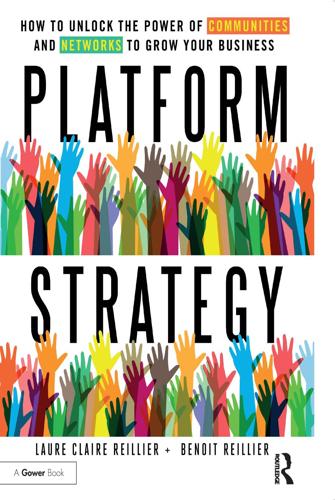
Open for Business Harnessing the Power of Platform Ecosystems
by
Lauren Turner Claire
,
Laure Claire Reillier
and
Benoit Reillier
Published 14 Oct 2017
Seed swap exchanges are helping farmers, clothes and handbags are being shared for relevant occasions, thousands of student books are being swapped, rides and cars are now routinely shared on long and short journeys, the use of expensive real estate is increasingly optimized (flats, offices, parking spaces) and even money now changes hands directly with peer-to-peer lending or currency exchange thanks to specifically designed digital platforms. A very cursory review of sharing economy platforms17 lists close to 900 companies and new ones are appearing every day. The categories in which the main ones are operating are shown in Table 2.1. The new rules of management are being rewritten to allow for more powerful and innovative platform ecosystems to emerge and compete with other established businesses, as well as create entirely new markets.
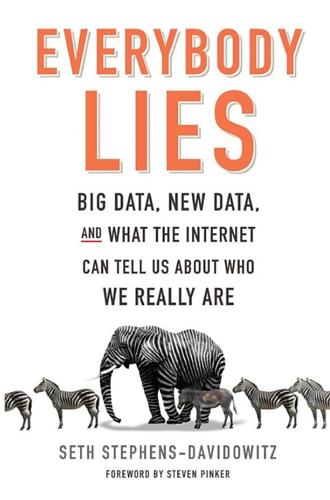
Everybody Lies: Big Data, New Data, and What the Internet Can Tell Us About Who We Really Are
by
Seth Stephens-Davidowitz
Published 8 May 2017
THE DANGER OF EMPOWERED CORPORATIONS Recently, three economists—Oded Netzer and Alain Lemaire, both of Columbia, and Michal Herzenstein of the University of Delaware—looked for ways to predict the likelihood of whether a borrower would pay back a loan. The scholars utilized data from Prosper, a peer-to-peer lending site. Potential borrowers write a brief description of why they need a loan and why they are likely to make good on it, and potential lenders decide whether to provide them the money. Overall, about 13 percent of borrowers defaulted on their loan. It turns out the language that potential borrowers use is a strong predictor of their probability of paying back.
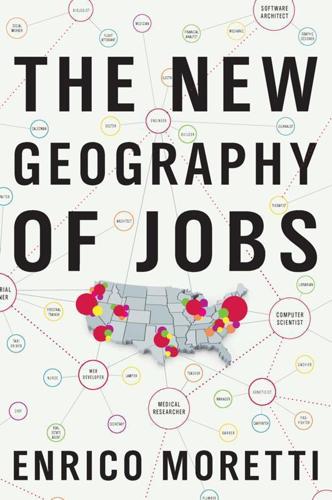
The New Geography of Jobs
by
Enrico Moretti
Published 21 May 2012
It includes parts of industries as diverse as entertainment, industrial design, marketing, and even finance. In the past three years alone, venture capital has invested about $2 billion in two hundred financial service startups. That amounts to “tens of thousands of jobs being created,” according to the CEO of BillFloat, one of the industry leaders. Take Prosper, a peer-to-peer lending startup that connects individual borrowers and individual lenders, thus creating loans with more advantageous terms than those available from mainstream banks. On a random day not long ago, Prosper’s listings included a California mother seeking $5,000 to go back to school, an Arizona artist seeking $4,000 to buy a truck to haul paintings to his shows, a Napa Valley winemaker seeking $4,000 to buy new oak barrels for the 2011 harvest, and a Michigan TV producer seeking funds to improve his reality TV show.
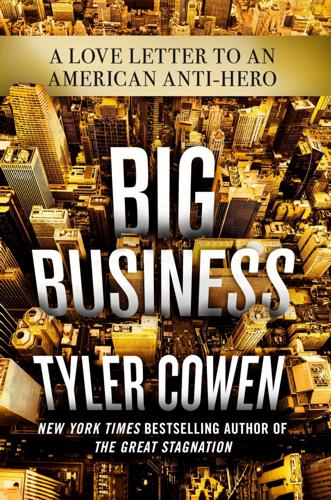
Big Business: A Love Letter to an American Anti-Hero
by
Tyler Cowen
Published 8 Apr 2019
Here is what he found: I looked at the latest batch of 52 startups from legendary Silicon Valley startup incubator Y Combinator. Thirteen of them had an altruistic or international development focus, including Neema, an app to help poor people without access to banks gain financial services; Kangpe, online health services for people in Africa without access to doctors; Credy, a peer-to-peer lending service in India; Clear Genetics, an automated genetic counseling tool for at-risk parents; and Dost Education, helping to teach literacy skills in India via a $1/month course. Twelve of them seemed like really exciting cutting-edge technology, including CBAS, which describes itself as “human bionics plug-and-play”; Solugen, which has a way to manufacture hydrogen peroxide from plant sugars; AON3D, which makes 3D printers for industrial uses; Indee, a new genetic engineering system; Alem Health, applying AI to radiology, and of course the obligatory drone delivery startup.

Live Work Work Work Die: A Journey Into the Savage Heart of Silicon Valley
by
Corey Pein
Published 23 Apr 2018
Prior to the computer age, “unbundled” lending went by many names: usury, gouging, loansharking. But old-fashioned brick-and-mortar loan sharks didn’t enjoy advantages like ample VC funding and catchy dot-com domains. All that was old is new again, and with Wall Street in great disrepute, the tech-focused venture capital firms can pass off “peer-to-peer” lending and “microloan” schemes with outrageous fees and effective interest rates as a humane alternative to traditional banking. The only innovation such startups have offered is an exciting new way to get screwed. * * * The wildly successful cowboys of the tech industry imperium set a clear example for up-and-coming entrepreneurs.
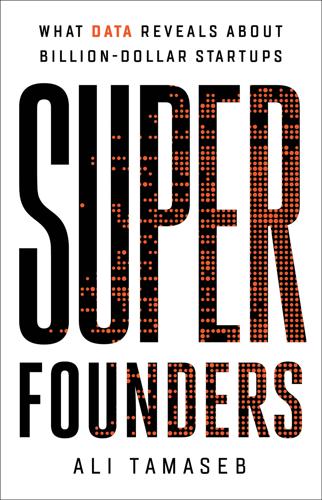
Super Founders: What Data Reveals About Billion-Dollar Startups
by
Ali Tamaseb
Published 14 Sep 2021
But network effects can be seen in many other types of businesses, and also in marketplaces. These effects are sometimes so strong that a company can remain a market leader for decades, even with minimal innovation: eBay and Craigslist are examples. Although network effects are a great defensibility tactic, they are not impossible to break. For example, peer-to-peer lending platforms benefit from network effects: the more people that join the platform—with more diverse backgrounds, credit scores, and needs—the more opportunities are created for people who want to lend money, leading more lenders to join. The more lenders that join, the more capital is available to borrow, leading more borrowers to join.

Confessions of a Microfinance Heretic
by
Hugh Sinclair
Published 4 Oct 2012
They may deserve access to credit, but they certainly deserve respect and fair treatment. During my decade in microfinance I worked with countless individual MFIs, the rating agencies, and other transparency initiatives and service providers, including consulting boutiques and IT providers to the microfinance sector. I worked with microfinance funds and peer-to-peer lending platforms that channel money from investors to the MFIs. I worked with large microfinance networks with global operations, spoke in various conferences, and had some modest interaction with public multilateral investors such as the Inter-American Development Bank. I was fortunate to witness the rise and fall from grace of microfinance over this period, from a variety of perspectives.

The Industries of the Future
by
Alec Ross
Published 2 Feb 2016
The more dramatic visions of stateless money seem implausible because I don’t think in the grand scheme of things there is that much desire to hold gold to protect against the vicissitudes of states. And I think that for the rest of my lifetime, gold is going to be a better bet for people with that passion than Bitcoin.” Larry Summers is not a Luddite. He is on the boards of Square and LendingClub, a popular peer-to-peer lending platform that has processed more than $6 billion in loans. He is also an advisor to Marc Andreessen’s venture capital firm. Fast-forward 18 months, and Larry now sees the potential of the blockchain technology facilitating the “medium of exchange” property of money. He has even joined the advisory board for Xapo, the Bitcoin company Reid Hoffman funded with the underground vaults.
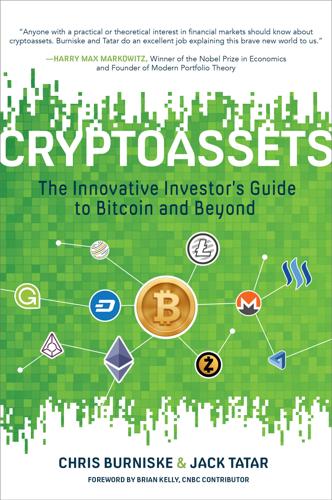
Cryptoassets: The Innovative Investor's Guide to Bitcoin and Beyond: The Innovative Investor's Guide to Bitcoin and Beyond
by
Chris Burniske
and
Jack Tatar
Published 19 Oct 2017
While Fugger’s RipplePay did grow to 4,000 users,22 it did not catch fire the way bitcoin did. In August 2012, Fugger was approached by the notable financial innovators Chris Larsen and Jed McCaleb. Larsen had founded E-Loan—one of the first companies to provide access to mortgage loans online—and Prosper, a leader in the peer-to-peer lending space.23 McCaleb was the founder of Mt. Gox, the biggest bitcoin and cryptocurrency exchange in the world at that time. Fugger announced the partnership: “I believe if anyone can develop the Ripple concept on a global scale, they can. Their system is based on a Bitcoin-style blockchain, much as we have discussed here over the last few years as an interesting possibility, but with a novel miner-less consensus mechanism that allows transactions to be confirmed near instantaneously.”
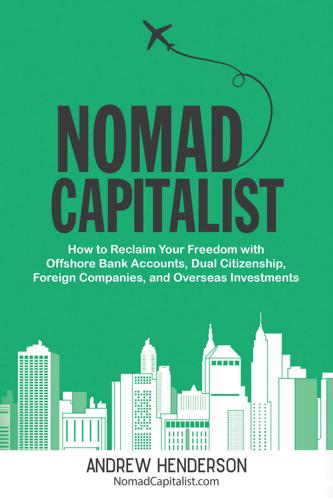
Nomad Capitalist: How to Reclaim Your Freedom With Offshore Bank Accounts, Dual Citizenship, Foreign Companies, and Overseas Investments
by
Andrew Henderson
Published 8 Apr 2018
There is also plenty of money to be made in countries like the United Arab Emirates where Israelis are allowed entry but may be uncomfortable as Jews. Having another passport gives them an opportunity to sell their goods without intermediaries such as Cyprus getting involved. In other situations, you cannot have access to certain opportunities unless you at least have a second residency in the country. Peer-to-peer lending services in the United States do alright, but for my money, Twino in the European Union is much more attractive. Twino offers yields starting at 12% for buying consumer paper, and in most cases guarantees repayment. It is easy for them to do when some of these short-term loans are billed out at 40%; then again, they are doing all the work.
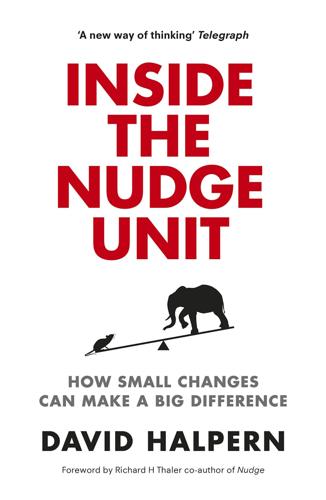
Inside the Nudge Unit: How Small Changes Can Make a Big Difference
by
David Halpern
Published 26 Aug 2015
We noticed how small businesses, such as the key sector of small builders and tradesmen, didn’t really trust or like the big banks, and it wasn’t clear the big banks liked them much either. Using the principles of ‘make it easy’ and ‘attractive’, we looked at where else such small traders might go other than the banks. One option was to get behind the newly emergent trend of peer-to-peer lending, through releasing extra finance and a light regulatory framework, which was duly put in place. Another, more uniquely BIT approach, was to see where else small traders and businesses would go to and trust on a regular basis and see if we could get these players to act as channels of finance.
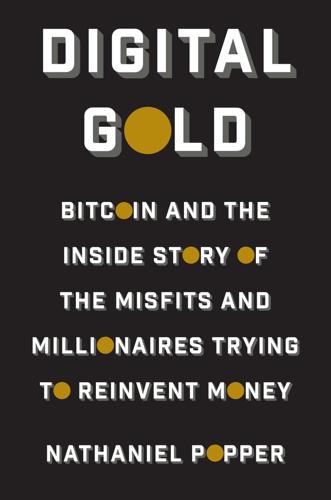
Digital Gold: Bitcoin and the Inside Story of the Misfits and Millionaires Trying to Reinvent Money
by
Nathaniel Popper
Published 18 May 2015
For banks that were terrified of cyber attacks, the idea of a payment network that could keep running even if one player, or one set of servers, got taken out was incredibly attractive. More broadly, the banks were waking up to several increasingly viable efforts to decentralize finance and take business that had belonged to the big banks. Crowdfunding companies like Kickstarter, and peer-to-peer lending services like Lending Club, were trying to directly connect borrowers and savers, so that a bank was not necessary. The blockchain seemed to present a decentralized alternative to an even more basic part of the banking industry’s business—payments. The banks were notably not becoming any more friendly toward working with Bitcoin the currency.

The Blockchain Alternative: Rethinking Macroeconomic Policy and Economic Theory
by
Kariappa Bheemaiah
Published 26 Feb 2017
All that is required to get a loan of less than a $100,000 is that the company needs to be in business for over 24 months, have at least $75,000 in annual sales and have no recent history of bankruptcy. If a large bank were to execute a similar practice, it would be criticized for being lackadaisical. This is not to say that there is not oversight at all. Lending Club, the well-known peer-to-peer lending company, is overseen by the US Securities and Exchange Commission, but this is mainly because it has now grown so large and receives a majority of funding from institutional sources (e.g,, insurance firms, banks like JPM Chase, etc.). In that sense, it can be seen as more of an exception to the current rules.
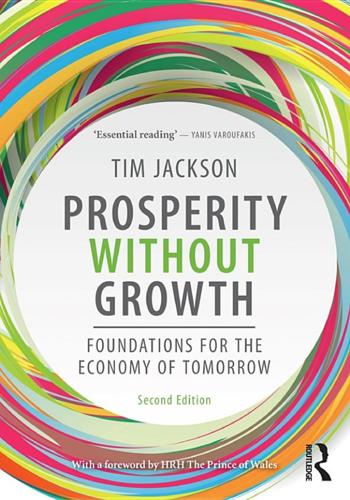
Prosperity Without Growth: Foundations for the Economy of Tomorrow
by
Tim Jackson
Published 8 Dec 2016
Community banking is a way of mobilising the savings of ordinary people at community level to provide investment funds for social or environmental finance. Community banks allow people to invest in their own community – for example, in low carbon energy, or in community amenities, and at the same time ensure that the returns from those investments remain within the community. A fascinating example of small-scale peer to peer lending for social and ecological projects is provided by SPEAR – a French savings intermediary that aims to facilitate transparent, responsible investment. Savers are able to choose the projects in which they want to invest and receive information from the projects themselves as they progress. The average return to savers during 2012 was 2 per cent.34 A similar example from North America is the Unified Field Corporation – a California-based community banking initiative.
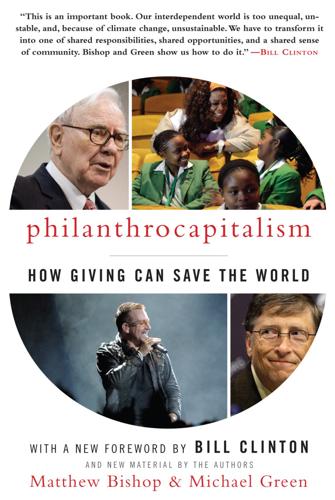
Philanthrocapitalism
by
Matthew Bishop
,
Michael Green
and
Bill Clinton
Published 29 Sep 2008
It has also invested in several other for-profit social-impact businesses. One is Meetup.com, a platform for bringing together communities based on shared interests, such as stay-at-home moms, owners of Pekinese dogs in New York, or separated parents in Ohio wanting equal access to their children. Another investment is in Prosper.com, a peer-to-peer lending marketplace where people can loan their own money directly to others. Another is InnoCentive, an “open innovation” company that takes research and development problems, frames them as challenges, and invites people to solve them. It gives cash awards for the best solutions that meet the challenge criteria.
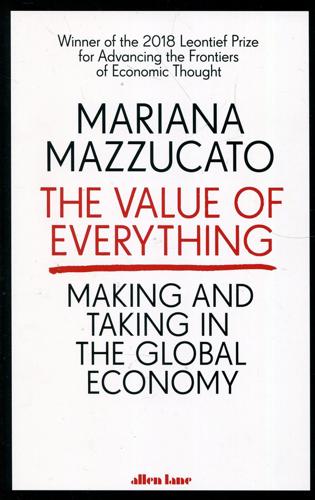
Value of Everything: An Antidote to Chaos The
by
Mariana Mazzucato
Published 25 Apr 2018
They still enjoyed 23 per cent in 2010 and almost 30 per cent in 2012 - just two years after rebounding after a brief plunge to 10 per cent in 2008, in a period when corporate profits were growing much faster than labour income or GDP.29 The high degree of monopoly in wholesale and retail banking is closely linked to its continuing ability to extract rents from the private and public sectors, even when these were shrinking in the aftermath of the 2008 crash. In the UK, since the financial crisis regulators have aimed to promote new banks and alternative forms of financial intermediation, such as peer-to-peer lending, in order to spur competition. The handful of new banks started in the UK since the crisis are somewhat optimistically called ‘challenger banks' - a challenge that so far has not put much of a dent in the oligopoly of UK ‘high street' banks. Nor are alternative forms of financial intermediation effective substitutes for the dominant banks.

The Nature of Software Development: Keep It Simple, Make It Valuable, Build It Piece by Piece
by
Ron Jeffries
Published 14 Aug 2015
Any individual consumer is likely to support only one version at a time, so this is not for the consumer to automatically bridge versions. Instead, this version number helps with debugging when something goes wrong. Unfortunately, after that easy first step, we step right out into shark-infested waters. We have to do something with the existing API routes and their behavior. Let’s use the following routes from a peer-to-peer lending service (the service that collects a loan application for credit analysis) as a running example. It needs to know some things about the loan and the requester: * * * Table 1. Example Routes RouteVerbPurpose /applications POST Create a new application /applications/:id GET View the state of a specific application /applications?
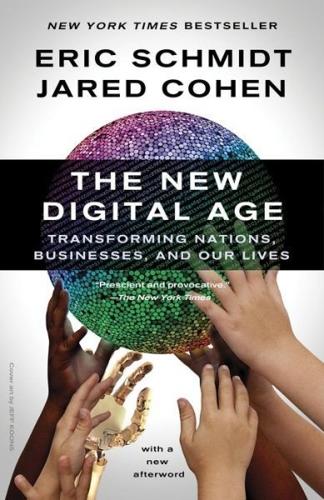
The New Digital Age: Transforming Nations, Businesses, and Our Lives
by
Eric Schmidt
and
Jared Cohen
Published 22 Apr 2013
The consequence of going around established aid organizations is the loss of those groups’ ability to discern levels of need and distribute their resources appropriately. With those controls gone, the free-for-all of direct donations would almost certainly lead to a less equitable division of those resources. An analysis of peer-to-peer lending through Kiva’s website conducted by researchers in Singapore reported that lenders tend to discriminate in favor of attractive, lighter-skinned and less obese borrowers. Moreover, the emergence of a platform like this assumes that the desire for a closer connection is reciprocated. Aid recipients would have to want to engage in such a connection, and that would strike many who have worked in development as a nonstarter.
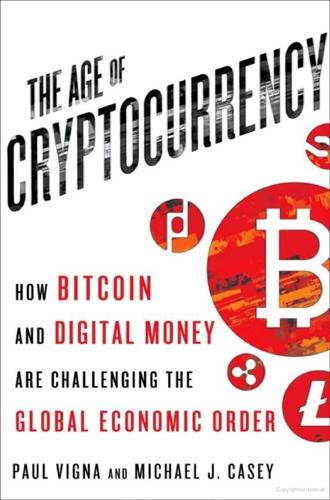
The Age of Cryptocurrency: How Bitcoin and Digital Money Are Challenging the Global Economic Order
by
Paul Vigna
and
Michael J. Casey
Published 27 Jan 2015
Got some extra computing power sitting on your desktop? Share it with those who need it. Got a car sitting idle in your driveway? Share that. Got a big idea? Share it online and raise the money online to fund it. Business symbols of this era so far include the personal-apartment rental site Airbnb, the crowdfunding site Kickstarter, the peer-to-peer lending network Lending Club, and the taxi services controlled by individual car owners Uber and Lyft. In some respects these new business models are extensions of a process that began far earlier with the advent of the Internet. While no self-respecting bitcoiner would ever describe Google or Facebook as decentralized institutions, not with their corporate-controlled servers and vast databases of customers’ personal information, these giant Internet firms of our day got there by encouraging peer-to-peer and middleman-free activities.
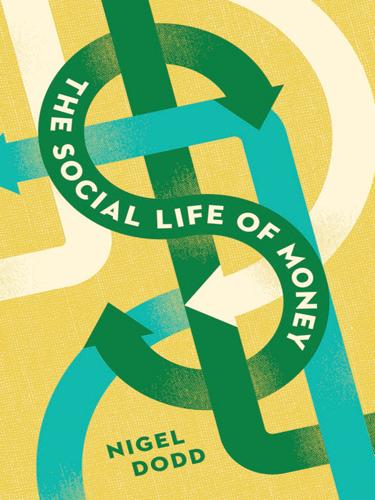
The Social Life of Money
by
Nigel Dodd
Published 14 May 2014
Importantly for Hardt and Negri’s characterization, these are sites in which agents perform simultaneously as producers, consumers, and conduits—not as “citizens” or “subjects.” In monetary terms, the obvious corollary of these sites—Marazzi’s treatment fits here, too—are Internet-based monies and credit, such as peer-to-peer lending and Bitcoin. We examine these in more detail in Chapter 8. According to Hardt and Negri, the European crisis of modernity that once preoccupied a range of thinkers—“From Nietzsche to Burkhardt, from Thomas Mann to Max Weber, from Spengler to Heidegger and Ortega y Gasset”—was really a sign that their own position at the center of the planet (“which they could understand only in terms of a modern mysticism”) was coming to an end (Hardt and Negri 2001: 375).

Escape From Rome: The Failure of Empire and the Road to Prosperity
by
Walter Scheidel
Published 14 Oct 2019
D., 583n157 Yuan empire, 229, 281, 403, 507 Zhao, Dingxin, 393–94, 412, 583n144 Zheng Chenggong, 445 Zheng He (Chinese eunuch), 433, 439, 445, 468 Zhenzong emperor, 241 Zhou regime: demise of, 221, 222, 570n52; in heyday of empire, 281; language and writing in, 308; religious beliefs in, 319; steppe effect in, 282, 285, 286; unity as concept in, 323 Zoroastrians, 207, 317 Zwingli, Ulrich, 474 THE PRINCETON ECONOMIC HISTORY OF THE WESTERN WORLD Joel Mokyr, Series Editor Going the Distance: Eurasian Trade and the Rise of the Business Corporation 1400–1700 by Ron Harris Dark Matter Credit: The Development of Peer-to-Peer Lending and Banking in France by Philip T. Hoffman, Gilles Postel-Vinay, and Jean-Laurent Rosenthal The European Guilds: An Economic Analysis by Sheilagh Ogilvie Trade in the Ancient Mediterranean: Private Order and Public Institutions by Taco Terpstra The Winding Road to the Welfare State: Economic Insecurity and Social Welfare Policy in Britain by George R.